Quick filters:
Middle kingdom egypt Stock Photos and Images
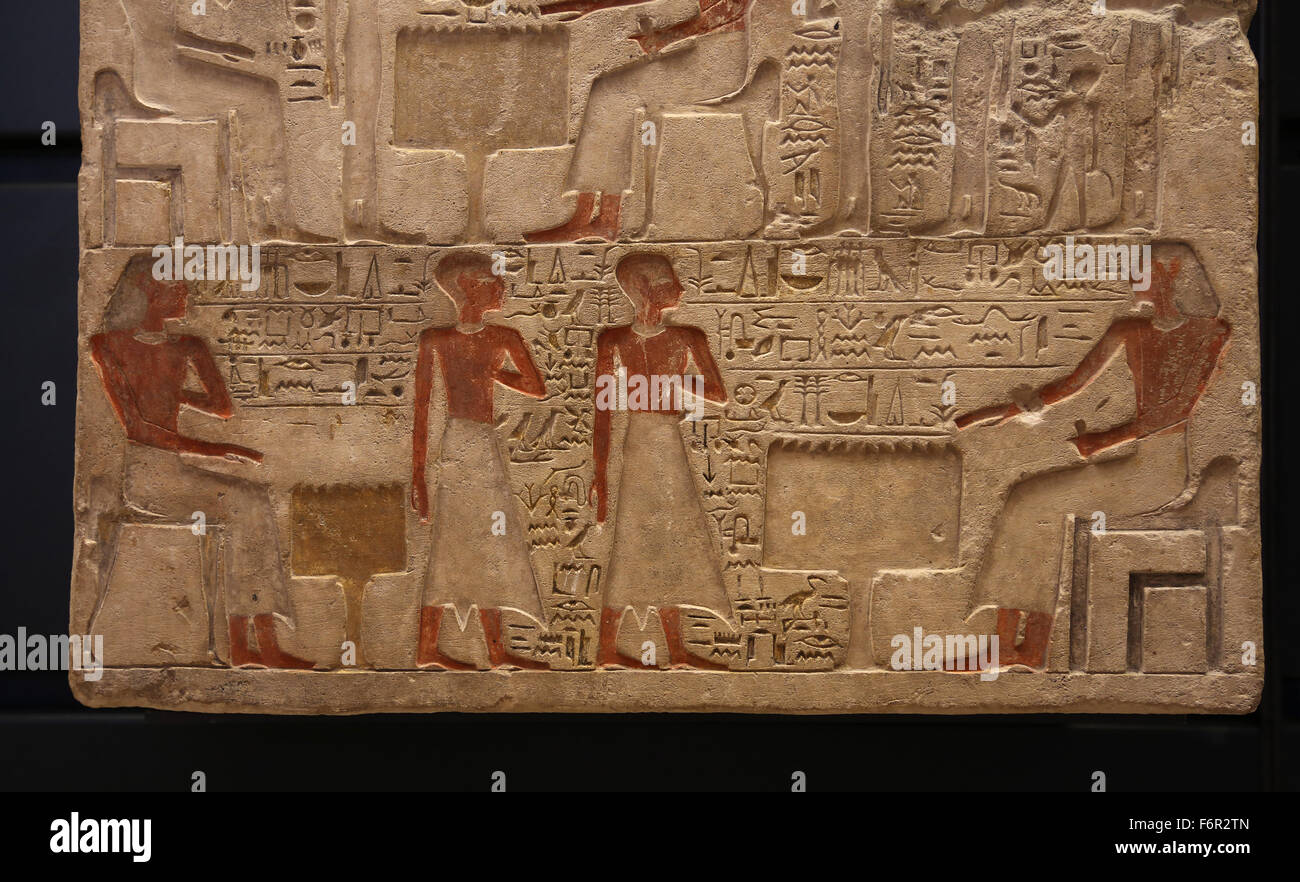 Stele of Sculptor Ibet and family, painted limestone, Middle Kingdom (1975-1640 BC). Louvre Museum. Paris. France. Stock Photohttps://www.alamy.com/image-license-details/?v=1https://www.alamy.com/stock-photo-stele-of-sculptor-ibet-and-family-painted-limestone-middle-kingdom-90246933.html
Stele of Sculptor Ibet and family, painted limestone, Middle Kingdom (1975-1640 BC). Louvre Museum. Paris. France. Stock Photohttps://www.alamy.com/image-license-details/?v=1https://www.alamy.com/stock-photo-stele-of-sculptor-ibet-and-family-painted-limestone-middle-kingdom-90246933.htmlRMF6R2TN–Stele of Sculptor Ibet and family, painted limestone, Middle Kingdom (1975-1640 BC). Louvre Museum. Paris. France.
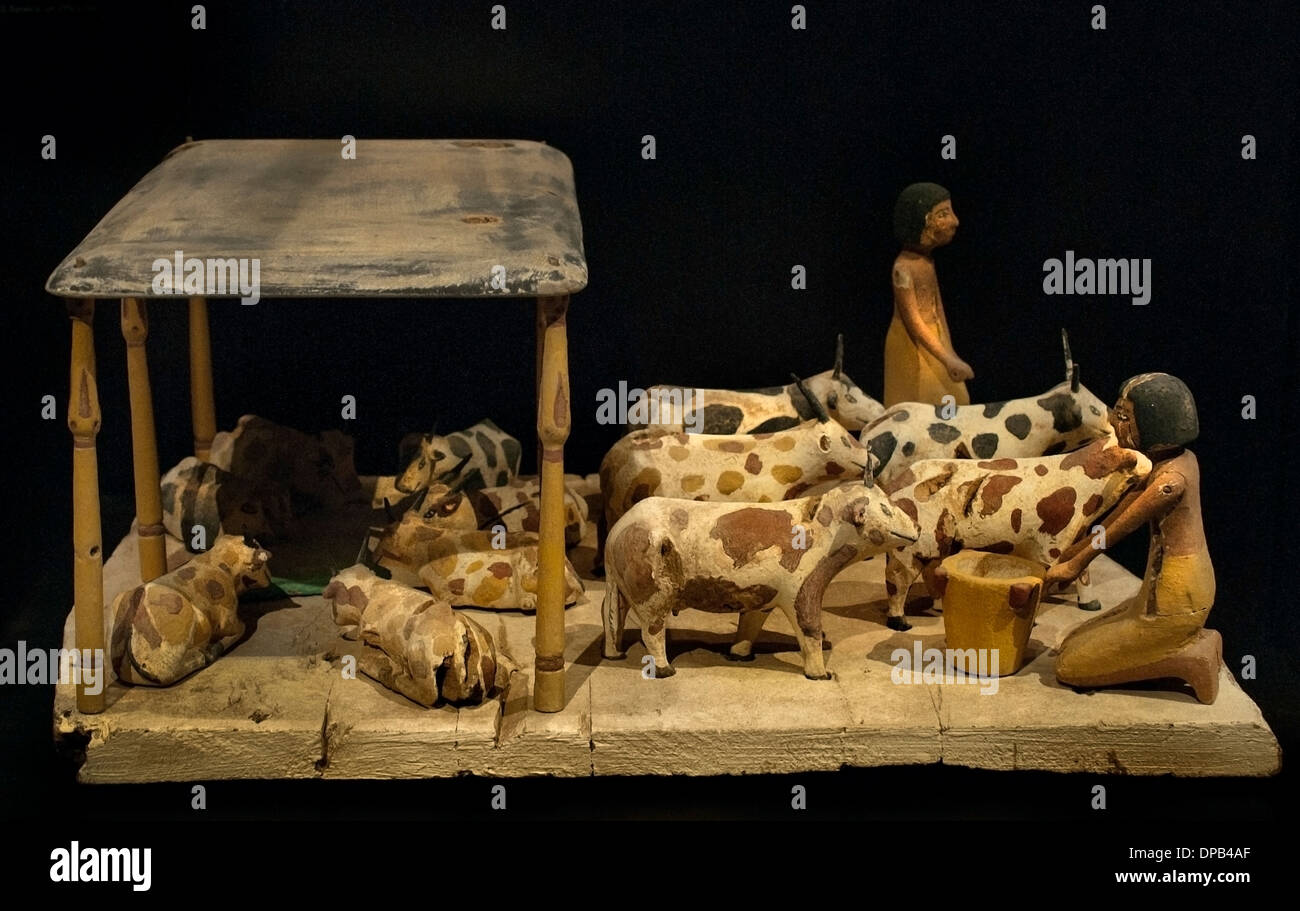 Cattle with cowherds 1950 BC ( Model as Funerary Goods ) Middle Kingdom Egypt Egyptian Stock Photohttps://www.alamy.com/image-license-details/?v=1https://www.alamy.com/cattle-with-cowherds-1950-bc-model-as-funerary-goods-middle-kingdom-image65398439.html
Cattle with cowherds 1950 BC ( Model as Funerary Goods ) Middle Kingdom Egypt Egyptian Stock Photohttps://www.alamy.com/image-license-details/?v=1https://www.alamy.com/cattle-with-cowherds-1950-bc-model-as-funerary-goods-middle-kingdom-image65398439.htmlRMDPB4AF–Cattle with cowherds 1950 BC ( Model as Funerary Goods ) Middle Kingdom Egypt Egyptian
 Egypt. Stela of User. 12th Dynasty. Middle Kingdom. Stock Photohttps://www.alamy.com/image-license-details/?v=1https://www.alamy.com/stock-photo-egypt-stela-of-user-12th-dynasty-middle-kingdom-47849796.html
Egypt. Stela of User. 12th Dynasty. Middle Kingdom. Stock Photohttps://www.alamy.com/image-license-details/?v=1https://www.alamy.com/stock-photo-egypt-stela-of-user-12th-dynasty-middle-kingdom-47849796.htmlRMCNRMW8–Egypt. Stela of User. 12th Dynasty. Middle Kingdom.
 Ancient Egypt. Middle Kingdom, the Twelfth Dynasty. Restoration of the fortresses of Semneh and Kummeh. (After Perrot and Chipiez). 1912 book illustra Stock Photohttps://www.alamy.com/image-license-details/?v=1https://www.alamy.com/ancient-egypt-middle-kingdom-the-twelfth-dynasty-restoration-of-the-fortresses-of-semneh-and-kummeh-after-perrot-and-chipiez-1912-book-illustra-image433344319.html
Ancient Egypt. Middle Kingdom, the Twelfth Dynasty. Restoration of the fortresses of Semneh and Kummeh. (After Perrot and Chipiez). 1912 book illustra Stock Photohttps://www.alamy.com/image-license-details/?v=1https://www.alamy.com/ancient-egypt-middle-kingdom-the-twelfth-dynasty-restoration-of-the-fortresses-of-semneh-and-kummeh-after-perrot-and-chipiez-1912-book-illustra-image433344319.htmlRM2G50F2R–Ancient Egypt. Middle Kingdom, the Twelfth Dynasty. Restoration of the fortresses of Semneh and Kummeh. (After Perrot and Chipiez). 1912 book illustra
 Wooden model of a man ploughing with oxen, from Egypt, Middle Kingdom, c2040-1750 BC. Artist: Unknown Stock Photohttps://www.alamy.com/image-license-details/?v=1https://www.alamy.com/wooden-model-of-a-man-ploughing-with-oxen-from-egypt-middle-kingdom-c2040-1750-bc-artist-unknown-image262775127.html
Wooden model of a man ploughing with oxen, from Egypt, Middle Kingdom, c2040-1750 BC. Artist: Unknown Stock Photohttps://www.alamy.com/image-license-details/?v=1https://www.alamy.com/wooden-model-of-a-man-ploughing-with-oxen-from-egypt-middle-kingdom-c2040-1750-bc-artist-unknown-image262775127.htmlRMW7EC9Y–Wooden model of a man ploughing with oxen, from Egypt, Middle Kingdom, c2040-1750 BC. Artist: Unknown
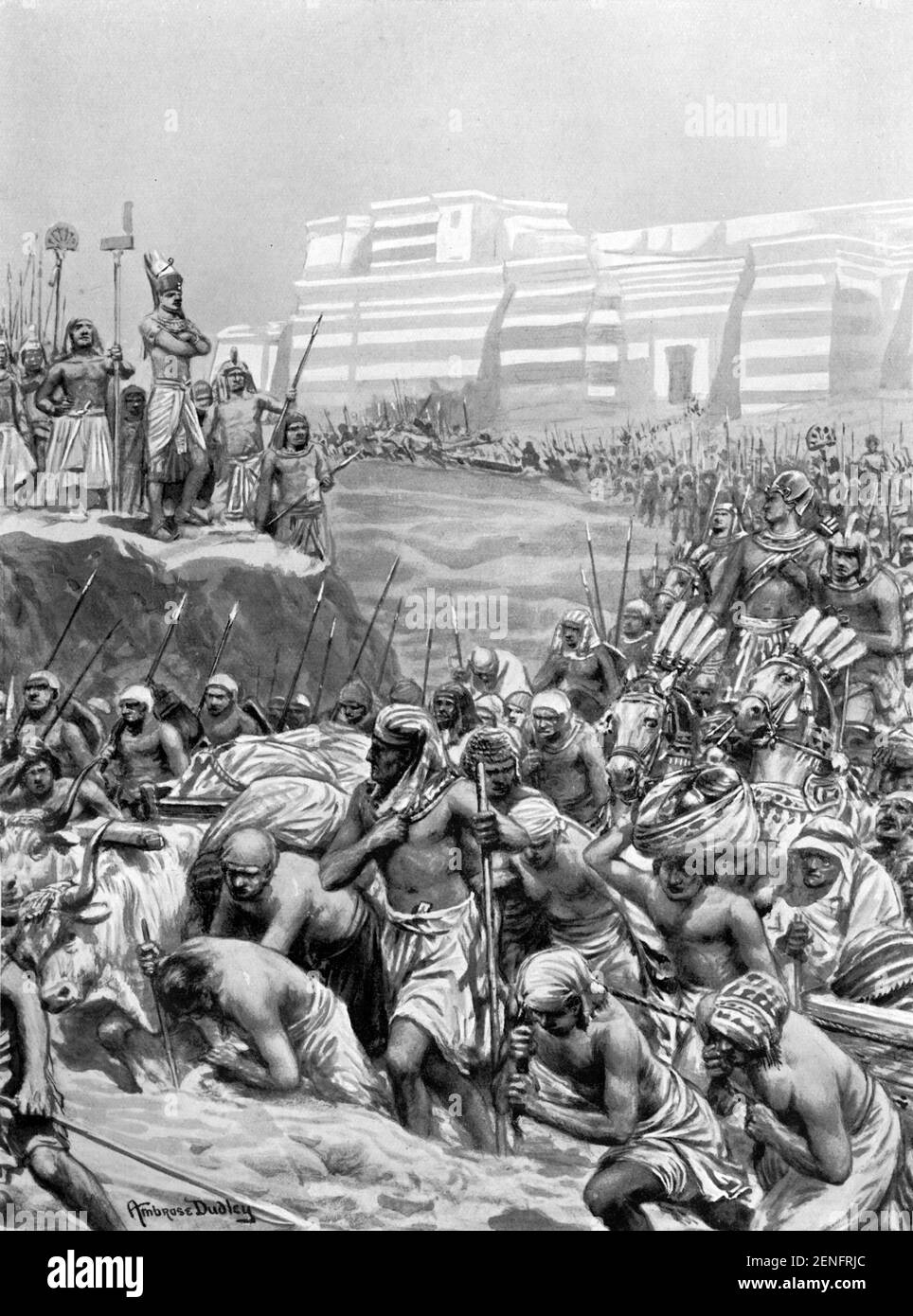 An early 20th century illustration of the the expulsion of the Hyksos or Shepherd Kings in ancient Egypt. They were driven from Egypt by Ahmose I of Thebes who initiated the era of the New Kingdom of Egypt the Eighteenth Dynasty Stock Photohttps://www.alamy.com/image-license-details/?v=1https://www.alamy.com/an-early-20th-century-illustration-of-the-the-expulsion-of-the-hyksos-or-shepherd-kings-in-ancient-egypt-they-were-driven-from-egypt-by-ahmose-i-of-thebes-who-initiated-the-era-of-the-new-kingdom-of-egypt-the-eighteenth-dynasty-image409094068.html
An early 20th century illustration of the the expulsion of the Hyksos or Shepherd Kings in ancient Egypt. They were driven from Egypt by Ahmose I of Thebes who initiated the era of the New Kingdom of Egypt the Eighteenth Dynasty Stock Photohttps://www.alamy.com/image-license-details/?v=1https://www.alamy.com/an-early-20th-century-illustration-of-the-the-expulsion-of-the-hyksos-or-shepherd-kings-in-ancient-egypt-they-were-driven-from-egypt-by-ahmose-i-of-thebes-who-initiated-the-era-of-the-new-kingdom-of-egypt-the-eighteenth-dynasty-image409094068.htmlRF2ENFRJC–An early 20th century illustration of the the expulsion of the Hyksos or Shepherd Kings in ancient Egypt. They were driven from Egypt by Ahmose I of Thebes who initiated the era of the New Kingdom of Egypt the Eighteenth Dynasty
 Gold fish pendant : XII Dynasty 1991 - 1786 BC Middle Kingdom , Egypt Stock Photohttps://www.alamy.com/image-license-details/?v=1https://www.alamy.com/gold-fish-pendant-xii-dynasty-1991-1786-bc-middle-kingdom-egypt-image268856771.html
Gold fish pendant : XII Dynasty 1991 - 1786 BC Middle Kingdom , Egypt Stock Photohttps://www.alamy.com/image-license-details/?v=1https://www.alamy.com/gold-fish-pendant-xii-dynasty-1991-1786-bc-middle-kingdom-egypt-image268856771.htmlRMWHBDFF–Gold fish pendant : XII Dynasty 1991 - 1786 BC Middle Kingdom , Egypt
 clapper, clapper, leg, length: 17 cm, Middle Kingdom, Egypt Stock Photohttps://www.alamy.com/image-license-details/?v=1https://www.alamy.com/clapper-clapper-leg-length-17-cm-middle-kingdom-egypt-image344535136.html
clapper, clapper, leg, length: 17 cm, Middle Kingdom, Egypt Stock Photohttps://www.alamy.com/image-license-details/?v=1https://www.alamy.com/clapper-clapper-leg-length-17-cm-middle-kingdom-egypt-image344535136.htmlRM2B0EX28–clapper, clapper, leg, length: 17 cm, Middle Kingdom, Egypt
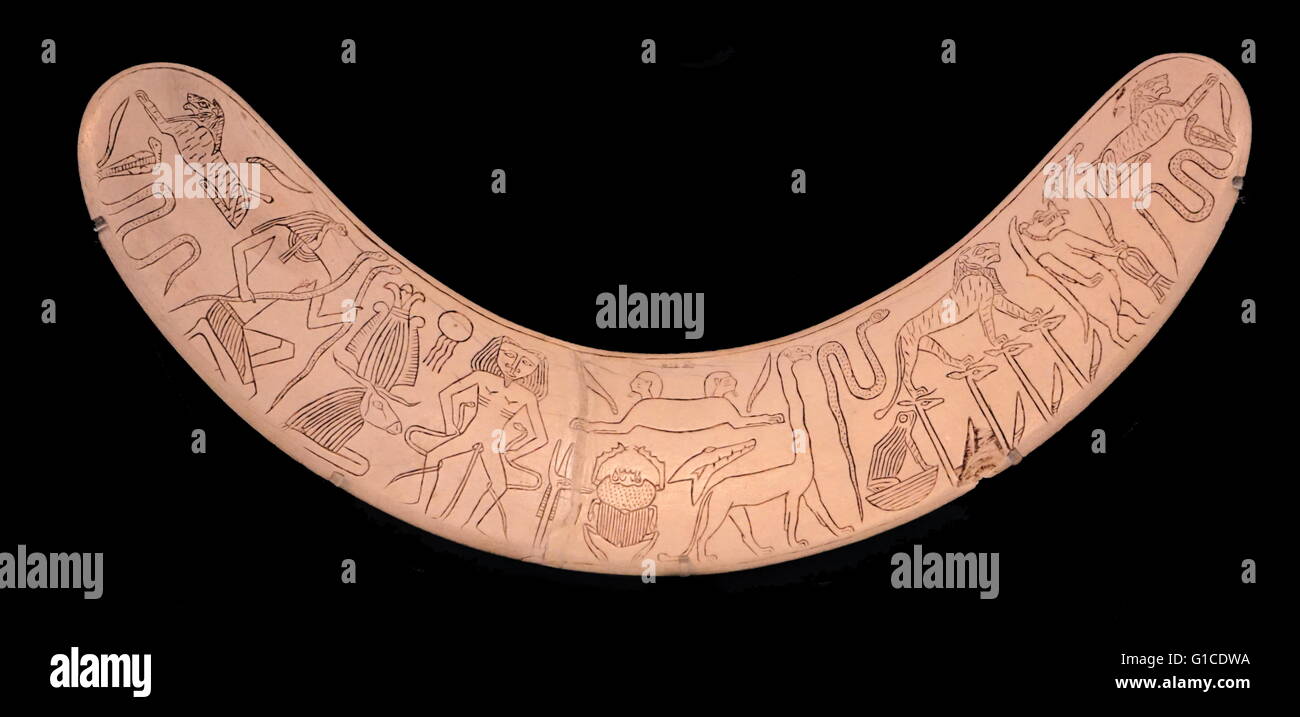 Hippopotamus ivory, Amuletic wand from the Middle Kingdom, Egypt. Stock Photohttps://www.alamy.com/image-license-details/?v=1https://www.alamy.com/stock-photo-hippopotamus-ivory-amuletic-wand-from-the-middle-kingdom-egypt-104151190.html
Hippopotamus ivory, Amuletic wand from the Middle Kingdom, Egypt. Stock Photohttps://www.alamy.com/image-license-details/?v=1https://www.alamy.com/stock-photo-hippopotamus-ivory-amuletic-wand-from-the-middle-kingdom-egypt-104151190.htmlRMG1CDWA–Hippopotamus ivory, Amuletic wand from the Middle Kingdom, Egypt.
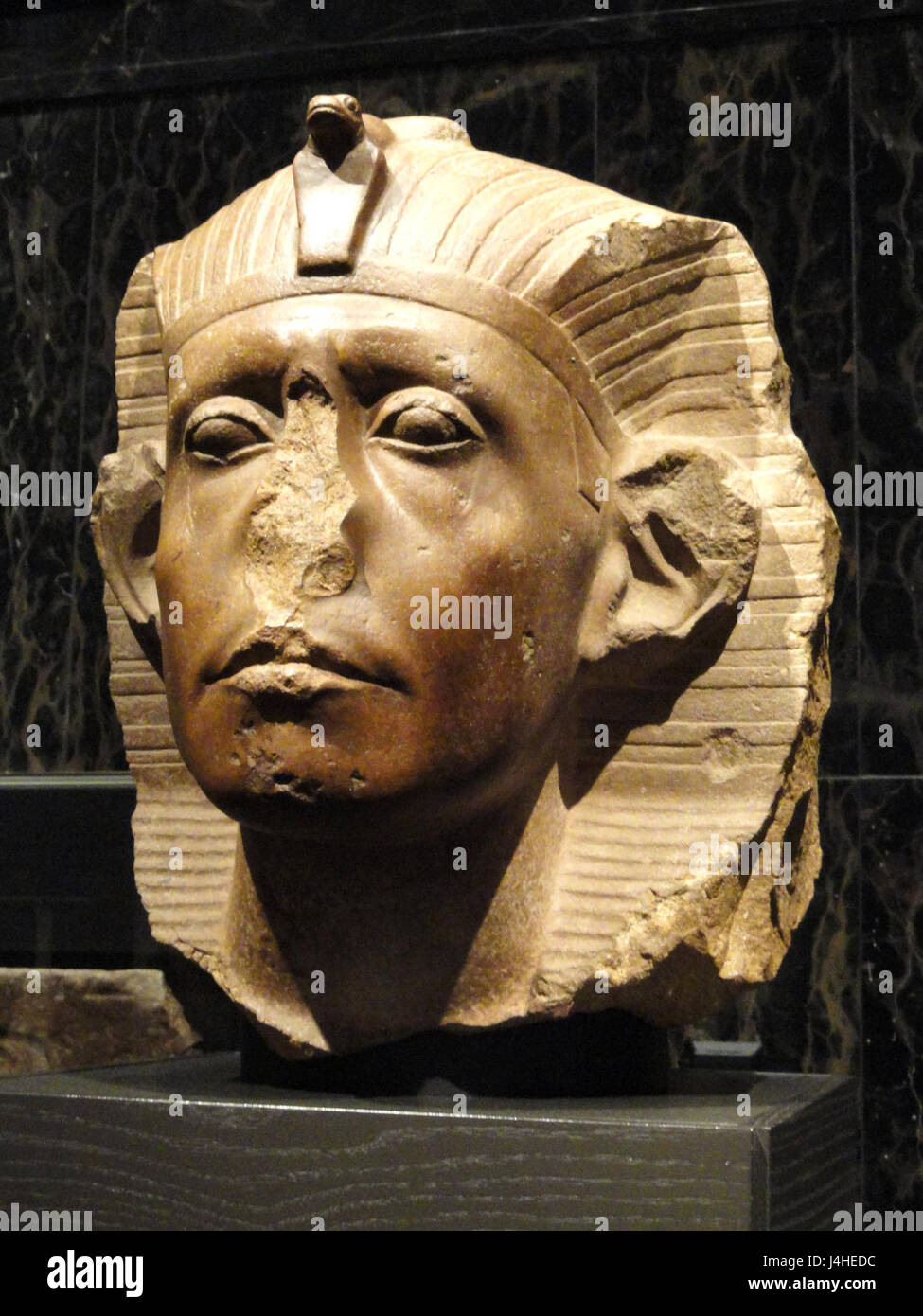 Sen useret III, Egypt, Middle Kingdom, 12th Dynasty, c. 1874 1855 BCE Nelson Atkins Museum of Art DSC08148 Stock Photohttps://www.alamy.com/image-license-details/?v=1https://www.alamy.com/stock-photo-sen-useret-iii-egypt-middle-kingdom-12th-dynasty-c-1874-1855-bce-nelson-140526104.html
Sen useret III, Egypt, Middle Kingdom, 12th Dynasty, c. 1874 1855 BCE Nelson Atkins Museum of Art DSC08148 Stock Photohttps://www.alamy.com/image-license-details/?v=1https://www.alamy.com/stock-photo-sen-useret-iii-egypt-middle-kingdom-12th-dynasty-c-1874-1855-bce-nelson-140526104.htmlRMJ4HEDC–Sen useret III, Egypt, Middle Kingdom, 12th Dynasty, c. 1874 1855 BCE Nelson Atkins Museum of Art DSC08148
 This 1925 image shows the Mortuary Temple of Mentuhotep II, an ancient Egyptian temple complex in Deir el-Bahri, Egypt. It was built between 2050–2000 B.C. for Mentuhotep II, the king who reunited Egypt during the Middle Kingdom period. The mortuary temple of Mentuhotep III, King of the 11th Dynasty, was likely unfinished and uninscribed. It was probably located in a bay in the cliffs south of his father's monument at Deir el-Bahri. Stock Photohttps://www.alamy.com/image-license-details/?v=1https://www.alamy.com/this-1925-image-shows-the-mortuary-temple-of-mentuhotep-ii-an-ancient-egyptian-temple-complex-in-deir-el-bahri-egypt-it-was-built-between-20502000-bc-for-mentuhotep-ii-the-king-who-reunited-egypt-during-the-middle-kingdom-period-the-mortuary-temple-of-mentuhotep-iii-king-of-the-11th-dynasty-was-likely-unfinished-and-uninscribed-it-was-probably-located-in-a-bay-in-the-cliffs-south-of-his-fathers-monument-at-deir-el-bahri-image651192914.html
This 1925 image shows the Mortuary Temple of Mentuhotep II, an ancient Egyptian temple complex in Deir el-Bahri, Egypt. It was built between 2050–2000 B.C. for Mentuhotep II, the king who reunited Egypt during the Middle Kingdom period. The mortuary temple of Mentuhotep III, King of the 11th Dynasty, was likely unfinished and uninscribed. It was probably located in a bay in the cliffs south of his father's monument at Deir el-Bahri. Stock Photohttps://www.alamy.com/image-license-details/?v=1https://www.alamy.com/this-1925-image-shows-the-mortuary-temple-of-mentuhotep-ii-an-ancient-egyptian-temple-complex-in-deir-el-bahri-egypt-it-was-built-between-20502000-bc-for-mentuhotep-ii-the-king-who-reunited-egypt-during-the-middle-kingdom-period-the-mortuary-temple-of-mentuhotep-iii-king-of-the-11th-dynasty-was-likely-unfinished-and-uninscribed-it-was-probably-located-in-a-bay-in-the-cliffs-south-of-his-fathers-monument-at-deir-el-bahri-image651192914.htmlRF2SRCB5P–This 1925 image shows the Mortuary Temple of Mentuhotep II, an ancient Egyptian temple complex in Deir el-Bahri, Egypt. It was built between 2050–2000 B.C. for Mentuhotep II, the king who reunited Egypt during the Middle Kingdom period. The mortuary temple of Mentuhotep III, King of the 11th Dynasty, was likely unfinished and uninscribed. It was probably located in a bay in the cliffs south of his father's monument at Deir el-Bahri.
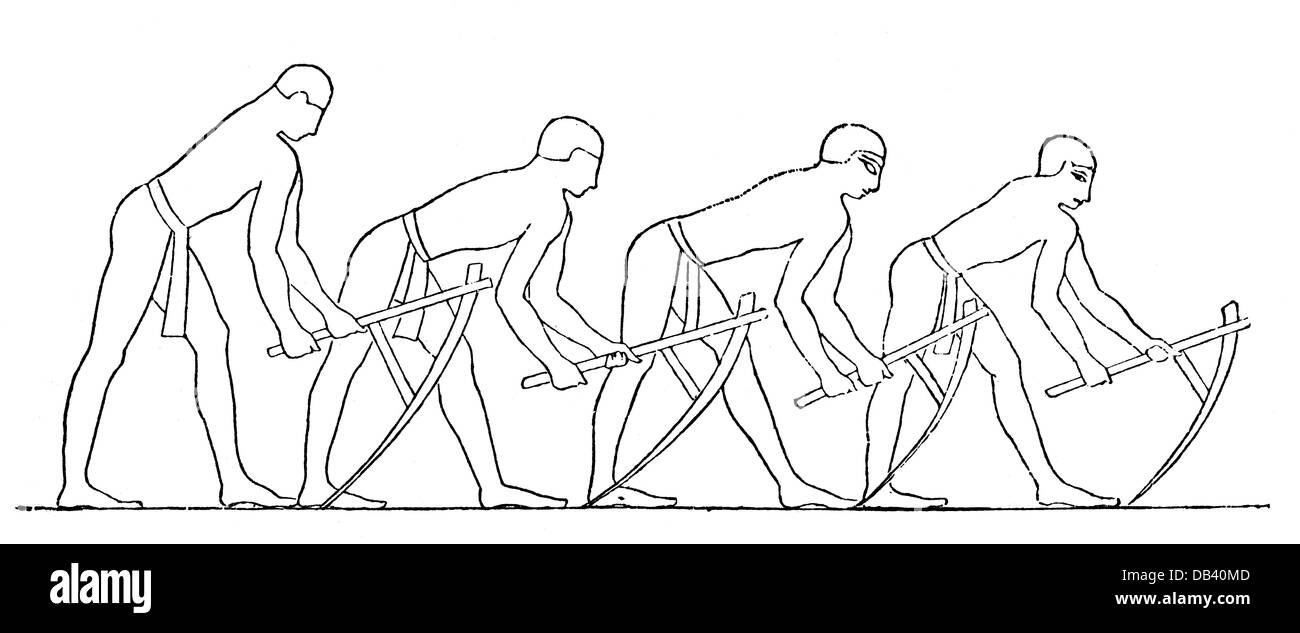 agriculture, agricultural work, farmers working on the ground with hoes, drawing, 19th century, after mural, Beni Hassan, Egypt, 12th Dynasty (circa 1994 - 1781 BC), Middle Kingdom of Egypt, people, hoe, hack, hackiron, hoes, hacks, tool, tools, field work, fieldwork, field, fields, labour, labor, working, work, labouring, laboring, labour, labor, men, man, prehistory, prehistoric times, historic, historical, clipping, clippings, cut-out, cut-outs, ancient world, Additional-Rights-Clearences-Not Available Stock Photohttps://www.alamy.com/image-license-details/?v=1https://www.alamy.com/stock-photo-agriculture-agricultural-work-farmers-working-on-the-ground-with-hoes-58480701.html
agriculture, agricultural work, farmers working on the ground with hoes, drawing, 19th century, after mural, Beni Hassan, Egypt, 12th Dynasty (circa 1994 - 1781 BC), Middle Kingdom of Egypt, people, hoe, hack, hackiron, hoes, hacks, tool, tools, field work, fieldwork, field, fields, labour, labor, working, work, labouring, laboring, labour, labor, men, man, prehistory, prehistoric times, historic, historical, clipping, clippings, cut-out, cut-outs, ancient world, Additional-Rights-Clearences-Not Available Stock Photohttps://www.alamy.com/image-license-details/?v=1https://www.alamy.com/stock-photo-agriculture-agricultural-work-farmers-working-on-the-ground-with-hoes-58480701.htmlRMDB40MD–agriculture, agricultural work, farmers working on the ground with hoes, drawing, 19th century, after mural, Beni Hassan, Egypt, 12th Dynasty (circa 1994 - 1781 BC), Middle Kingdom of Egypt, people, hoe, hack, hackiron, hoes, hacks, tool, tools, field work, fieldwork, field, fields, labour, labor, working, work, labouring, laboring, labour, labor, men, man, prehistory, prehistoric times, historic, historical, clipping, clippings, cut-out, cut-outs, ancient world, Additional-Rights-Clearences-Not Available
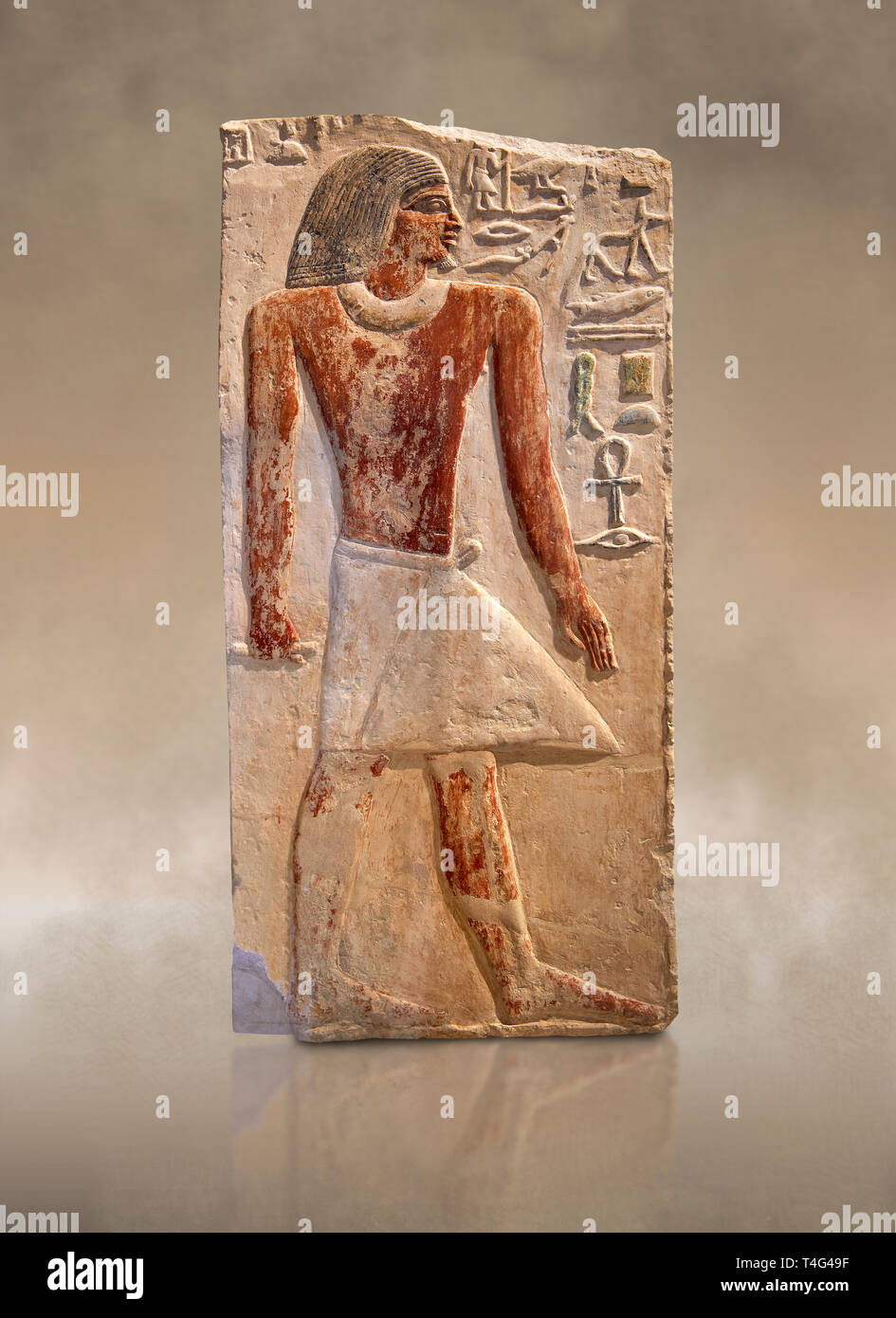 Ancient Egyptian tomb relief sculpture depicting the scribe and judge Ankhirptah. Middle Kingdom Egypt, 2170 BC. Neues Museum Berlin Cat No: AM 7337 Stock Photohttps://www.alamy.com/image-license-details/?v=1https://www.alamy.com/ancient-egyptian-tomb-relief-sculpture-depicting-the-scribe-and-judge-ankhirptah-middle-kingdom-egypt-2170-bc-neues-museum-berlin-cat-no-am-7337-image243758411.html
Ancient Egyptian tomb relief sculpture depicting the scribe and judge Ankhirptah. Middle Kingdom Egypt, 2170 BC. Neues Museum Berlin Cat No: AM 7337 Stock Photohttps://www.alamy.com/image-license-details/?v=1https://www.alamy.com/ancient-egyptian-tomb-relief-sculpture-depicting-the-scribe-and-judge-ankhirptah-middle-kingdom-egypt-2170-bc-neues-museum-berlin-cat-no-am-7337-image243758411.htmlRFT4G49F–Ancient Egyptian tomb relief sculpture depicting the scribe and judge Ankhirptah. Middle Kingdom Egypt, 2170 BC. Neues Museum Berlin Cat No: AM 7337
 Statuette of a Man, c. 1859–1648 BC. Egypt, Middle Kingdom (2040–1648 BCE), Dynasty 12, reign of Amenemhat III (1860–1814 BCE) Stock Photohttps://www.alamy.com/image-license-details/?v=1https://www.alamy.com/statuette-of-a-man-c-18591648-bc-egypt-middle-kingdom-20401648-bce-dynasty-12-reign-of-amenemhat-iii-18601814-bce-image597729204.html
Statuette of a Man, c. 1859–1648 BC. Egypt, Middle Kingdom (2040–1648 BCE), Dynasty 12, reign of Amenemhat III (1860–1814 BCE) Stock Photohttps://www.alamy.com/image-license-details/?v=1https://www.alamy.com/statuette-of-a-man-c-18591648-bc-egypt-middle-kingdom-20401648-bce-dynasty-12-reign-of-amenemhat-iii-18601814-bce-image597729204.htmlRM2WMCWKG–Statuette of a Man, c. 1859–1648 BC. Egypt, Middle Kingdom (2040–1648 BCE), Dynasty 12, reign of Amenemhat III (1860–1814 BCE)
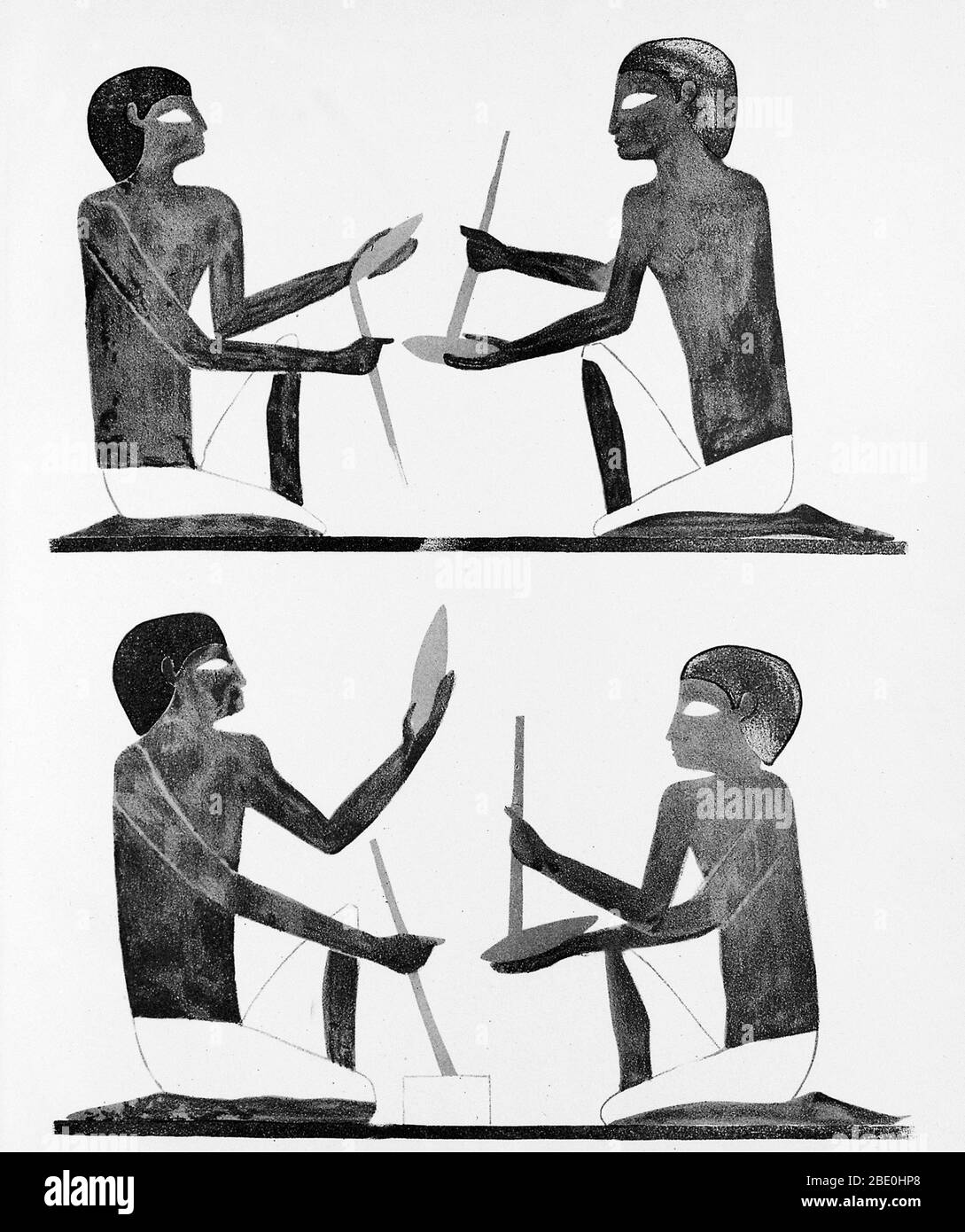 The manufacture of flint knives, as represented in the Ancient Egyptian Beni Hasan tomb, located south of modern-day Minya in the region known as Middle Egypt, the area between Asyut and Memphis. This site was primarily used during the Middle Kingdom, spanning the 21st to 17th centuries BCE (Middle Bronze Age). Stock Photohttps://www.alamy.com/image-license-details/?v=1https://www.alamy.com/the-manufacture-of-flint-knives-as-represented-in-the-ancient-egyptian-beni-hasan-tomb-located-south-of-modern-day-minya-in-the-region-known-as-middle-egypt-the-area-between-asyut-and-memphis-this-site-was-primarily-used-during-the-middle-kingdom-spanning-the-21st-to-17th-centuries-bce-middle-bronze-age-image352826496.html
The manufacture of flint knives, as represented in the Ancient Egyptian Beni Hasan tomb, located south of modern-day Minya in the region known as Middle Egypt, the area between Asyut and Memphis. This site was primarily used during the Middle Kingdom, spanning the 21st to 17th centuries BCE (Middle Bronze Age). Stock Photohttps://www.alamy.com/image-license-details/?v=1https://www.alamy.com/the-manufacture-of-flint-knives-as-represented-in-the-ancient-egyptian-beni-hasan-tomb-located-south-of-modern-day-minya-in-the-region-known-as-middle-egypt-the-area-between-asyut-and-memphis-this-site-was-primarily-used-during-the-middle-kingdom-spanning-the-21st-to-17th-centuries-bce-middle-bronze-age-image352826496.htmlRM2BE0HP8–The manufacture of flint knives, as represented in the Ancient Egyptian Beni Hasan tomb, located south of modern-day Minya in the region known as Middle Egypt, the area between Asyut and Memphis. This site was primarily used during the Middle Kingdom, spanning the 21st to 17th centuries BCE (Middle Bronze Age).
 Egypt, Alexandria, National Museum, seated statue, Middle Kingdom. Karnak, quartzite. Stock Photohttps://www.alamy.com/image-license-details/?v=1https://www.alamy.com/egypt-alexandria-national-museum-seated-statue-middle-kingdom-karnak-quartzite-image339527491.html
Egypt, Alexandria, National Museum, seated statue, Middle Kingdom. Karnak, quartzite. Stock Photohttps://www.alamy.com/image-license-details/?v=1https://www.alamy.com/egypt-alexandria-national-museum-seated-statue-middle-kingdom-karnak-quartzite-image339527491.htmlRM2AMAPNR–Egypt, Alexandria, National Museum, seated statue, Middle Kingdom. Karnak, quartzite.
 Typical model house of small land owner built from mud brick Middle Kingdom. 1900 BC. Egypt Stock Photohttps://www.alamy.com/image-license-details/?v=1https://www.alamy.com/stock-photo-typical-model-house-of-small-land-owner-built-from-mud-brick-middle-17842593.html
Typical model house of small land owner built from mud brick Middle Kingdom. 1900 BC. Egypt Stock Photohttps://www.alamy.com/image-license-details/?v=1https://www.alamy.com/stock-photo-typical-model-house-of-small-land-owner-built-from-mud-brick-middle-17842593.htmlRMB10PBD–Typical model house of small land owner built from mud brick Middle Kingdom. 1900 BC. Egypt
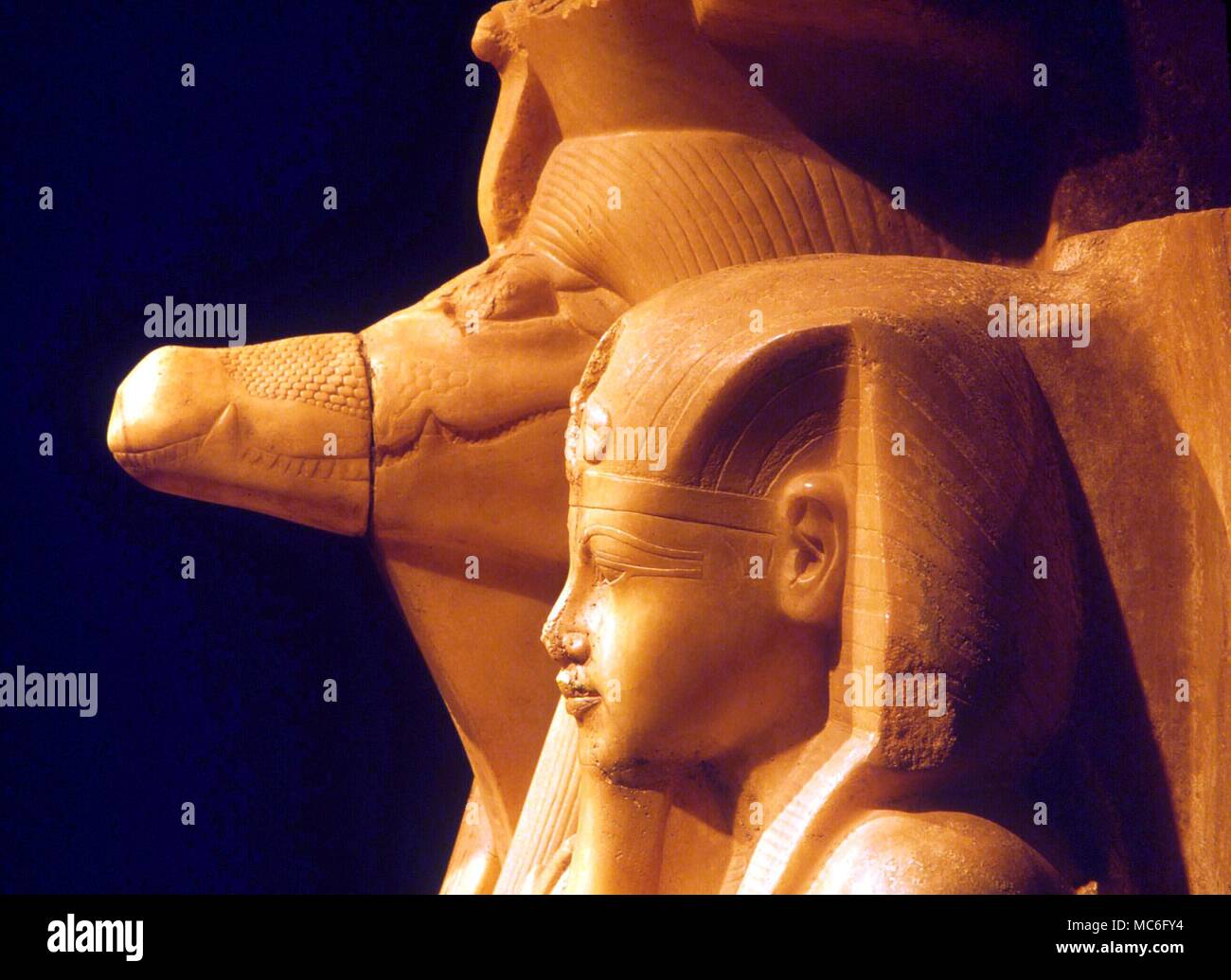 The crocodile-god Sebek with a youthful Pharoah. Sculptural group of the Middle Kingdom in Luxor Museum, Egypt. Stock Photohttps://www.alamy.com/image-license-details/?v=1https://www.alamy.com/the-crocodile-god-sebek-with-a-youthful-pharoah-sculptural-group-of-the-middle-kingdom-in-luxor-museum-egypt-image179623784.html
The crocodile-god Sebek with a youthful Pharoah. Sculptural group of the Middle Kingdom in Luxor Museum, Egypt. Stock Photohttps://www.alamy.com/image-license-details/?v=1https://www.alamy.com/the-crocodile-god-sebek-with-a-youthful-pharoah-sculptural-group-of-the-middle-kingdom-in-luxor-museum-egypt-image179623784.htmlRMMC6FY4–The crocodile-god Sebek with a youthful Pharoah. Sculptural group of the Middle Kingdom in Luxor Museum, Egypt.
 Art inspired by Spear, Middle Kingdom, Dynasty 12, ca. 1900 B.C., From Egypt, Wood, Classic works modernized by Artotop with a splash of modernity. Shapes, color and value, eye-catching visual impact on art. Emotions through freedom of artworks in a contemporary way. A timeless message pursuing a wildly creative new direction. Artists turning to the digital medium and creating the Artotop NFT Stock Photohttps://www.alamy.com/image-license-details/?v=1https://www.alamy.com/art-inspired-by-spear-middle-kingdom-dynasty-12-ca-1900-bc-from-egypt-wood-classic-works-modernized-by-artotop-with-a-splash-of-modernity-shapes-color-and-value-eye-catching-visual-impact-on-art-emotions-through-freedom-of-artworks-in-a-contemporary-way-a-timeless-message-pursuing-a-wildly-creative-new-direction-artists-turning-to-the-digital-medium-and-creating-the-artotop-nft-image462861155.html
Art inspired by Spear, Middle Kingdom, Dynasty 12, ca. 1900 B.C., From Egypt, Wood, Classic works modernized by Artotop with a splash of modernity. Shapes, color and value, eye-catching visual impact on art. Emotions through freedom of artworks in a contemporary way. A timeless message pursuing a wildly creative new direction. Artists turning to the digital medium and creating the Artotop NFT Stock Photohttps://www.alamy.com/image-license-details/?v=1https://www.alamy.com/art-inspired-by-spear-middle-kingdom-dynasty-12-ca-1900-bc-from-egypt-wood-classic-works-modernized-by-artotop-with-a-splash-of-modernity-shapes-color-and-value-eye-catching-visual-impact-on-art-emotions-through-freedom-of-artworks-in-a-contemporary-way-a-timeless-message-pursuing-a-wildly-creative-new-direction-artists-turning-to-the-digital-medium-and-creating-the-artotop-nft-image462861155.htmlRF2HW143F–Art inspired by Spear, Middle Kingdom, Dynasty 12, ca. 1900 B.C., From Egypt, Wood, Classic works modernized by Artotop with a splash of modernity. Shapes, color and value, eye-catching visual impact on art. Emotions through freedom of artworks in a contemporary way. A timeless message pursuing a wildly creative new direction. Artists turning to the digital medium and creating the Artotop NFT
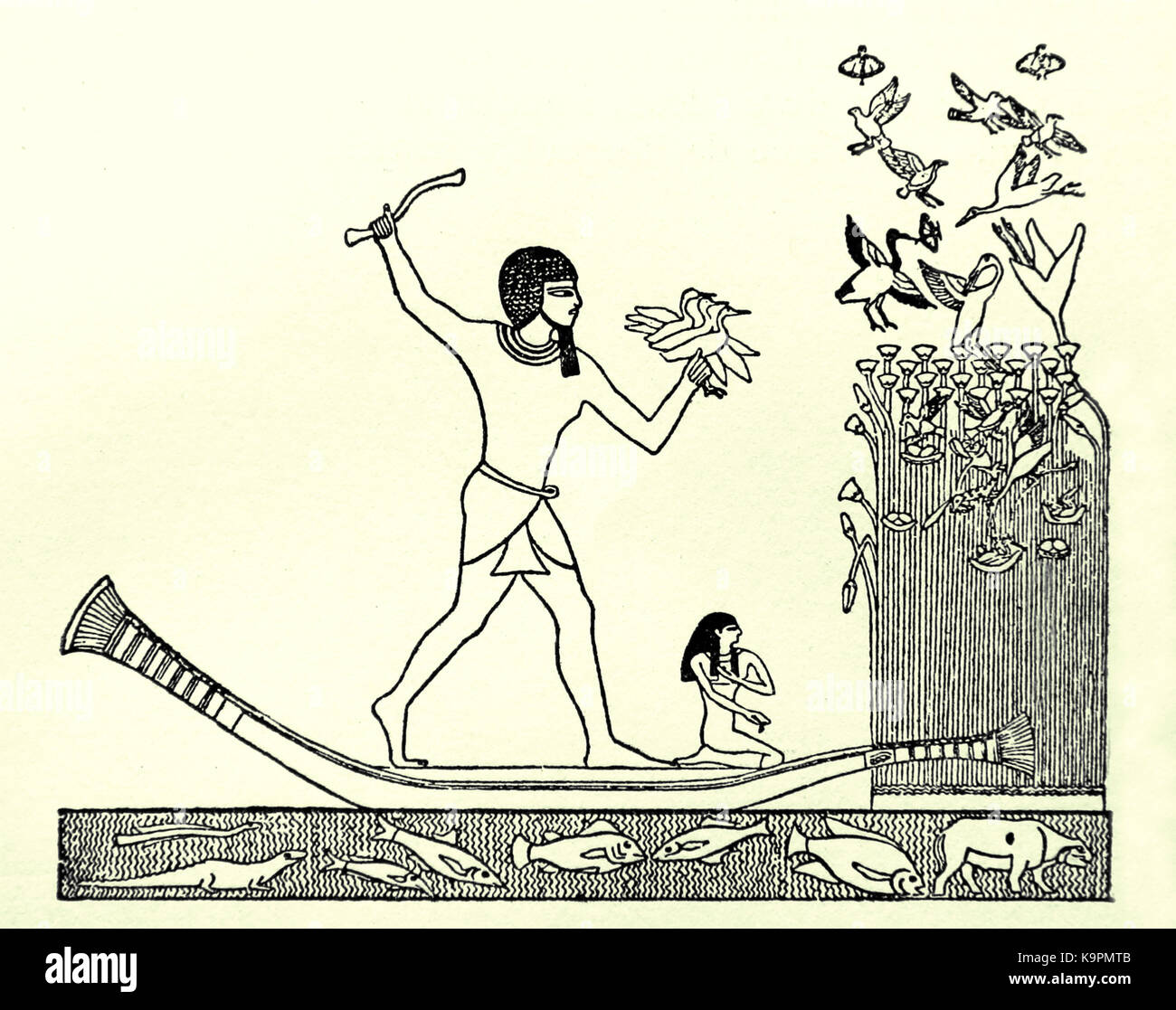 illustration on a tomb. Hunting scene. Original carved in stone. Dinasty 12 (1850 b.c.) Middle Kingdom,Egypt. Stock Photohttps://www.alamy.com/image-license-details/?v=1https://www.alamy.com/stock-image-illustration-on-a-tomb-hunting-scene-original-carved-in-stone-dinasty-160924523.html
illustration on a tomb. Hunting scene. Original carved in stone. Dinasty 12 (1850 b.c.) Middle Kingdom,Egypt. Stock Photohttps://www.alamy.com/image-license-details/?v=1https://www.alamy.com/stock-image-illustration-on-a-tomb-hunting-scene-original-carved-in-stone-dinasty-160924523.htmlRMK9PMTB–illustration on a tomb. Hunting scene. Original carved in stone. Dinasty 12 (1850 b.c.) Middle Kingdom,Egypt.
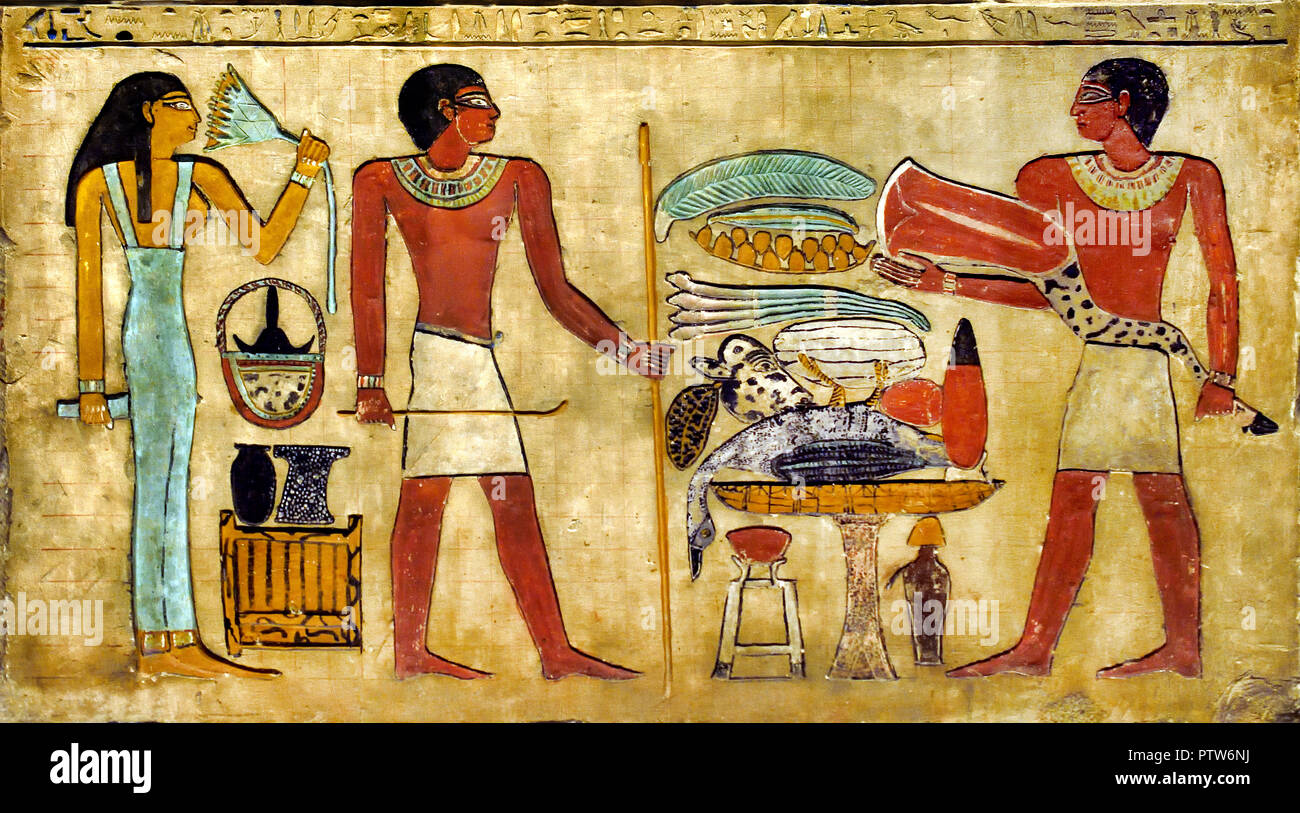 Grave relief of the Cheti Middle Kingdom Early 12th Dynasty, circa 1980 BC Chr. . Egypt. (m The relief shows Cheti and his wife in front of a lavishly furnished offering table. A son of the couple brings another beef leg. ) Stock Photohttps://www.alamy.com/image-license-details/?v=1https://www.alamy.com/grave-relief-of-the-cheti-middle-kingdom-early-12th-dynasty-circa-1980-bc-chr-egypt-m-the-relief-shows-cheti-and-his-wife-in-front-of-a-lavishly-furnished-offering-table-a-son-of-the-couple-brings-another-beef-leg-image221830270.html
Grave relief of the Cheti Middle Kingdom Early 12th Dynasty, circa 1980 BC Chr. . Egypt. (m The relief shows Cheti and his wife in front of a lavishly furnished offering table. A son of the couple brings another beef leg. ) Stock Photohttps://www.alamy.com/image-license-details/?v=1https://www.alamy.com/grave-relief-of-the-cheti-middle-kingdom-early-12th-dynasty-circa-1980-bc-chr-egypt-m-the-relief-shows-cheti-and-his-wife-in-front-of-a-lavishly-furnished-offering-table-a-son-of-the-couple-brings-another-beef-leg-image221830270.htmlRMPTW6NJ–Grave relief of the Cheti Middle Kingdom Early 12th Dynasty, circa 1980 BC Chr. . Egypt. (m The relief shows Cheti and his wife in front of a lavishly furnished offering table. A son of the couple brings another beef leg. )
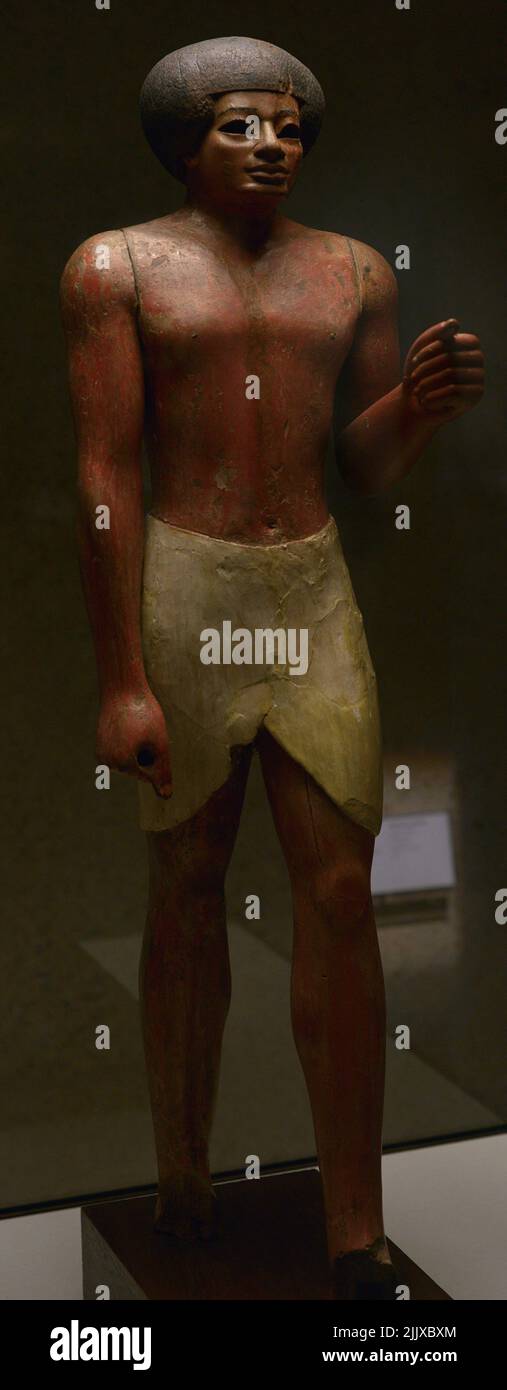 Egypt. Funerary Statue. Middle Kingdom. 11th dynasty. Polychrome ebony, ca. 2000 BC. From Deir el-Bahri region (Eastern Thebes). Calouste Gulbenkian Museum. Lisbon, Portugal. Stock Photohttps://www.alamy.com/image-license-details/?v=1https://www.alamy.com/egypt-funerary-statue-middle-kingdom-11th-dynasty-polychrome-ebony-ca-2000-bc-from-deir-el-bahri-region-eastern-thebes-calouste-gulbenkian-museum-lisbon-portugal-image476323868.html
Egypt. Funerary Statue. Middle Kingdom. 11th dynasty. Polychrome ebony, ca. 2000 BC. From Deir el-Bahri region (Eastern Thebes). Calouste Gulbenkian Museum. Lisbon, Portugal. Stock Photohttps://www.alamy.com/image-license-details/?v=1https://www.alamy.com/egypt-funerary-statue-middle-kingdom-11th-dynasty-polychrome-ebony-ca-2000-bc-from-deir-el-bahri-region-eastern-thebes-calouste-gulbenkian-museum-lisbon-portugal-image476323868.htmlRM2JJXBXM–Egypt. Funerary Statue. Middle Kingdom. 11th dynasty. Polychrome ebony, ca. 2000 BC. From Deir el-Bahri region (Eastern Thebes). Calouste Gulbenkian Museum. Lisbon, Portugal.
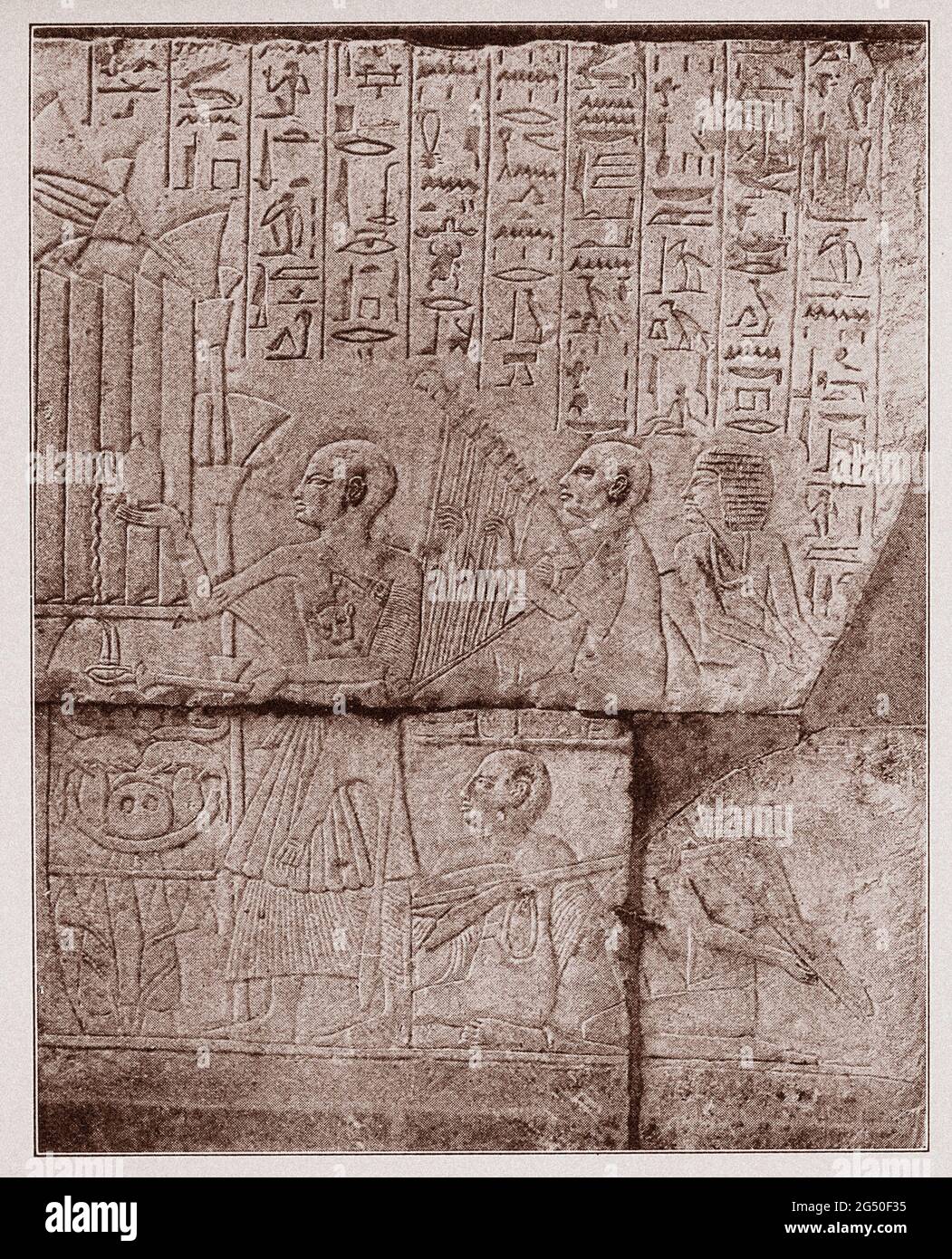 Ancient Egypt. Middle Kingdom, the Twelfth Dynasty. The Harper Singing To The Banqueters. (Leyden Museum). 1912 book illustration Stock Photohttps://www.alamy.com/image-license-details/?v=1https://www.alamy.com/ancient-egypt-middle-kingdom-the-twelfth-dynasty-the-harper-singing-to-the-banqueters-leyden-museum-1912-book-illustration-image433344329.html
Ancient Egypt. Middle Kingdom, the Twelfth Dynasty. The Harper Singing To The Banqueters. (Leyden Museum). 1912 book illustration Stock Photohttps://www.alamy.com/image-license-details/?v=1https://www.alamy.com/ancient-egypt-middle-kingdom-the-twelfth-dynasty-the-harper-singing-to-the-banqueters-leyden-museum-1912-book-illustration-image433344329.htmlRM2G50F35–Ancient Egypt. Middle Kingdom, the Twelfth Dynasty. The Harper Singing To The Banqueters. (Leyden Museum). 1912 book illustration
 Berlin, Germany. 27th Aug, 2016. Visitors photograph a figurine of Mentuhotep with Hes Vase (Middle Kingdom Egypt, early 12th Dynasty, 195 - 1911 BC) in the Neue Museum in Berlin, Germany, 27 August 2016. The building is open for the Lange Nacht der Museen (lt. Long Night of Museums) event. Photo: Klaus-Dietmar Gabbert/dpa./dpa/Alamy Live News Stock Photohttps://www.alamy.com/image-license-details/?v=1https://www.alamy.com/stock-photo-berlin-germany-27th-aug-2016-visitors-photograph-a-figurine-of-mentuhotep-116232240.html
Berlin, Germany. 27th Aug, 2016. Visitors photograph a figurine of Mentuhotep with Hes Vase (Middle Kingdom Egypt, early 12th Dynasty, 195 - 1911 BC) in the Neue Museum in Berlin, Germany, 27 August 2016. The building is open for the Lange Nacht der Museen (lt. Long Night of Museums) event. Photo: Klaus-Dietmar Gabbert/dpa./dpa/Alamy Live News Stock Photohttps://www.alamy.com/image-license-details/?v=1https://www.alamy.com/stock-photo-berlin-germany-27th-aug-2016-visitors-photograph-a-figurine-of-mentuhotep-116232240.htmlRMGN2RBC–Berlin, Germany. 27th Aug, 2016. Visitors photograph a figurine of Mentuhotep with Hes Vase (Middle Kingdom Egypt, early 12th Dynasty, 195 - 1911 BC) in the Neue Museum in Berlin, Germany, 27 August 2016. The building is open for the Lange Nacht der Museen (lt. Long Night of Museums) event. Photo: Klaus-Dietmar Gabbert/dpa./dpa/Alamy Live News
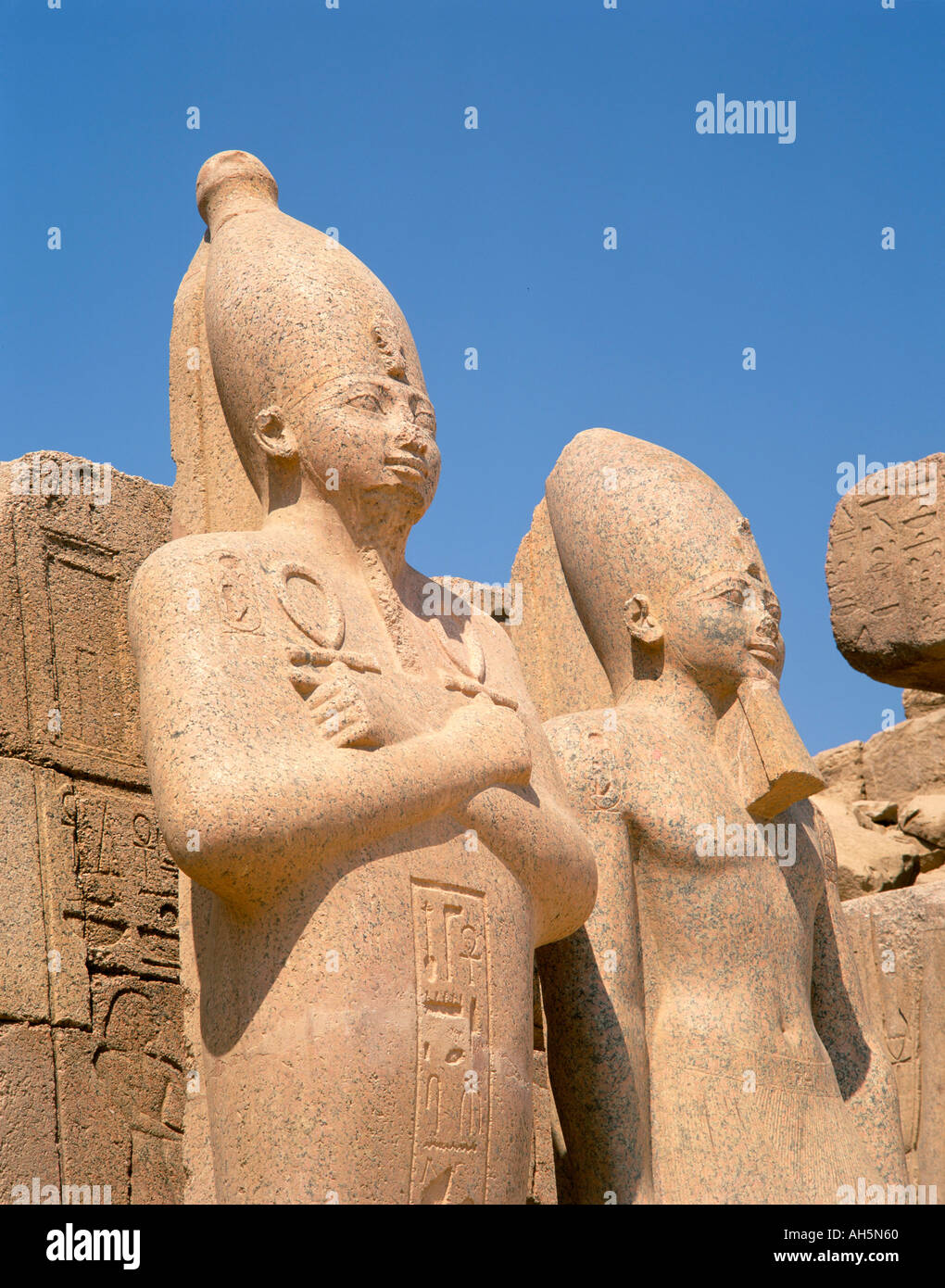 Statue of Middle Kingdom pharaoh Temple of Amun Karnak World Heritage Site Thebes Egypt North Africa Africa Stock Photohttps://www.alamy.com/image-license-details/?v=1https://www.alamy.com/statue-of-middle-kingdom-pharaoh-temple-of-amun-karnak-world-heritage-image4690271.html
Statue of Middle Kingdom pharaoh Temple of Amun Karnak World Heritage Site Thebes Egypt North Africa Africa Stock Photohttps://www.alamy.com/image-license-details/?v=1https://www.alamy.com/statue-of-middle-kingdom-pharaoh-temple-of-amun-karnak-world-heritage-image4690271.htmlRMAH5N60–Statue of Middle Kingdom pharaoh Temple of Amun Karnak World Heritage Site Thebes Egypt North Africa Africa
 Ancient Egypt: Bone and ivory inlays from Kerma. Middle Kingdom. Stock Photohttps://www.alamy.com/image-license-details/?v=1https://www.alamy.com/ancient-egypt-bone-and-ivory-inlays-from-kerma-middle-kingdom-image268827133.html
Ancient Egypt: Bone and ivory inlays from Kerma. Middle Kingdom. Stock Photohttps://www.alamy.com/image-license-details/?v=1https://www.alamy.com/ancient-egypt-bone-and-ivory-inlays-from-kerma-middle-kingdom-image268827133.htmlRMWHA3N1–Ancient Egypt: Bone and ivory inlays from Kerma. Middle Kingdom.
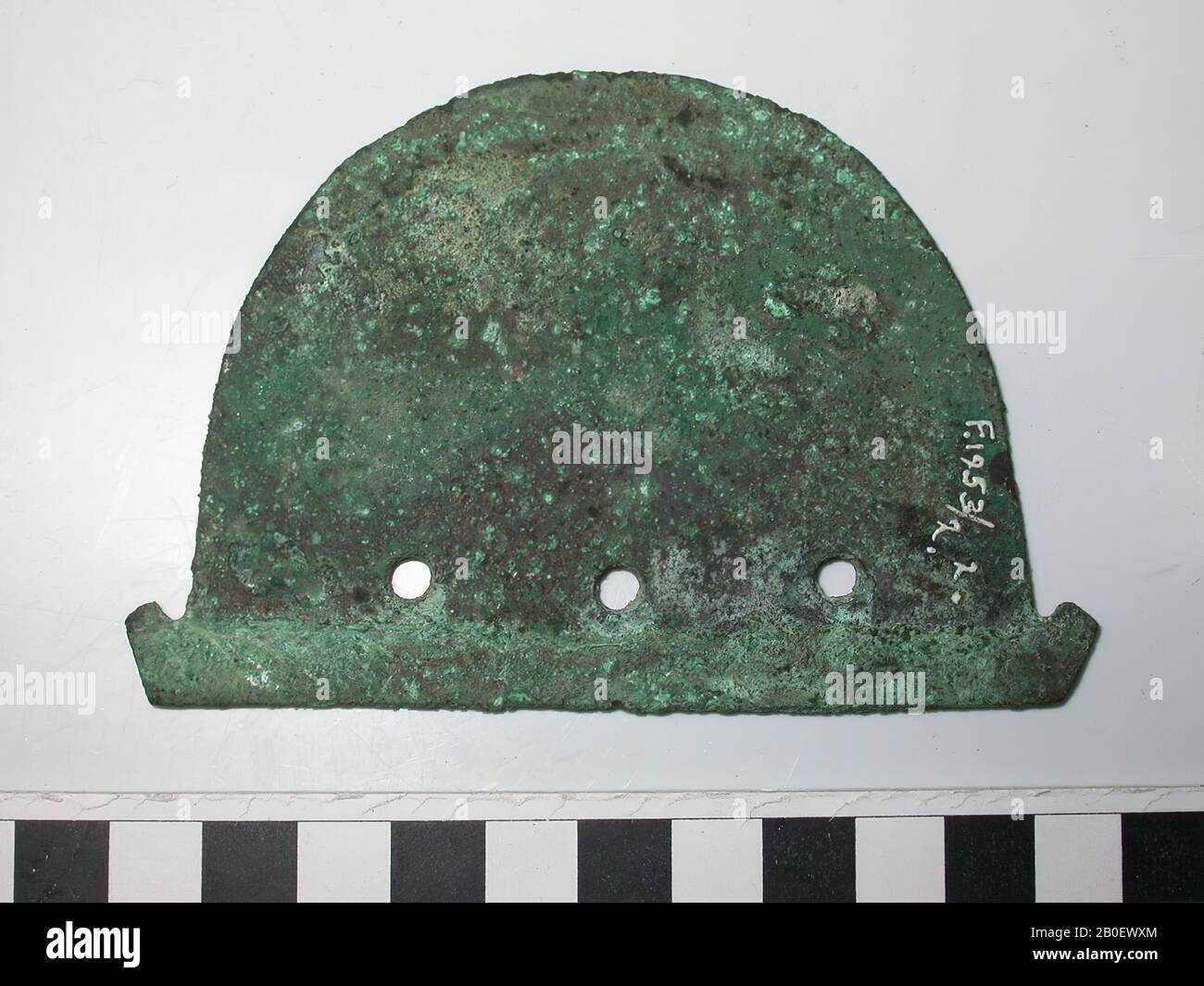 ax, ax, bronze, 10 x 7 cm, Middle Kingdom, Egypt Stock Photohttps://www.alamy.com/image-license-details/?v=1https://www.alamy.com/ax-ax-bronze-10-x-7-cm-middle-kingdom-egypt-image344535036.html
ax, ax, bronze, 10 x 7 cm, Middle Kingdom, Egypt Stock Photohttps://www.alamy.com/image-license-details/?v=1https://www.alamy.com/ax-ax-bronze-10-x-7-cm-middle-kingdom-egypt-image344535036.htmlRM2B0EWXM–ax, ax, bronze, 10 x 7 cm, Middle Kingdom, Egypt
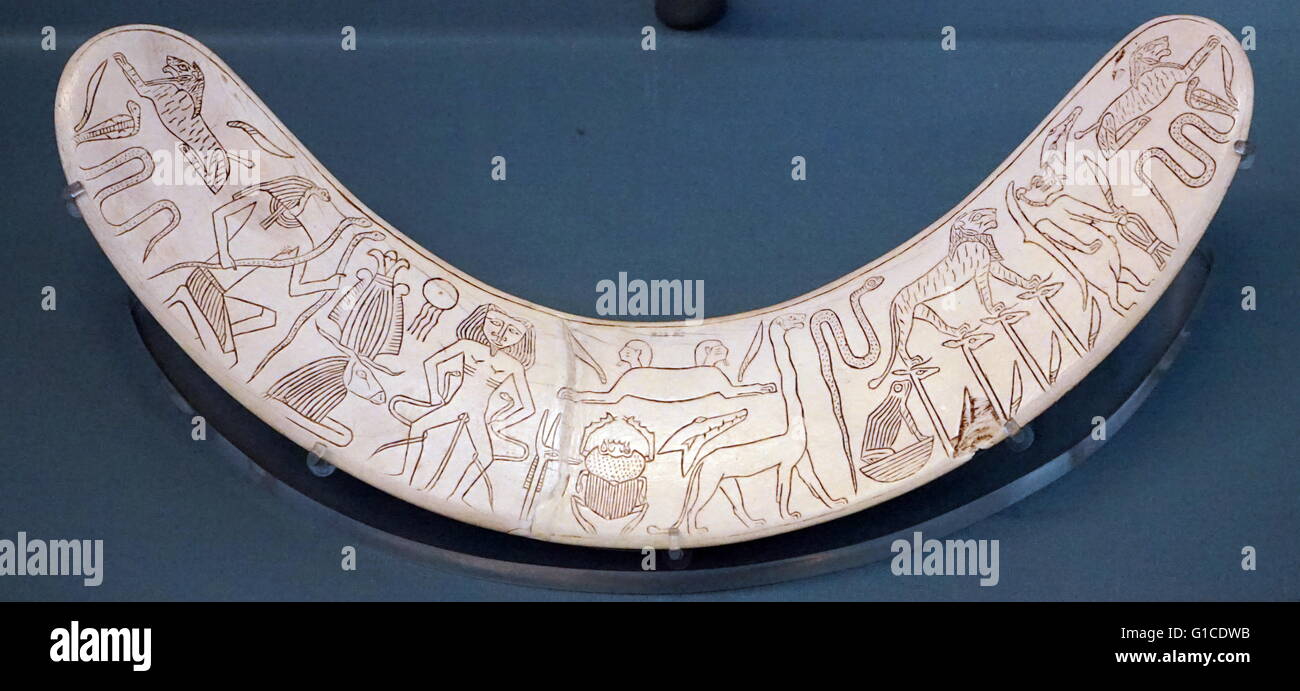 Hippopotamus ivory, Amuletic wand from the Middle Kingdom, Egypt. Stock Photohttps://www.alamy.com/image-license-details/?v=1https://www.alamy.com/stock-photo-hippopotamus-ivory-amuletic-wand-from-the-middle-kingdom-egypt-104151191.html
Hippopotamus ivory, Amuletic wand from the Middle Kingdom, Egypt. Stock Photohttps://www.alamy.com/image-license-details/?v=1https://www.alamy.com/stock-photo-hippopotamus-ivory-amuletic-wand-from-the-middle-kingdom-egypt-104151191.htmlRMG1CDWB–Hippopotamus ivory, Amuletic wand from the Middle Kingdom, Egypt.
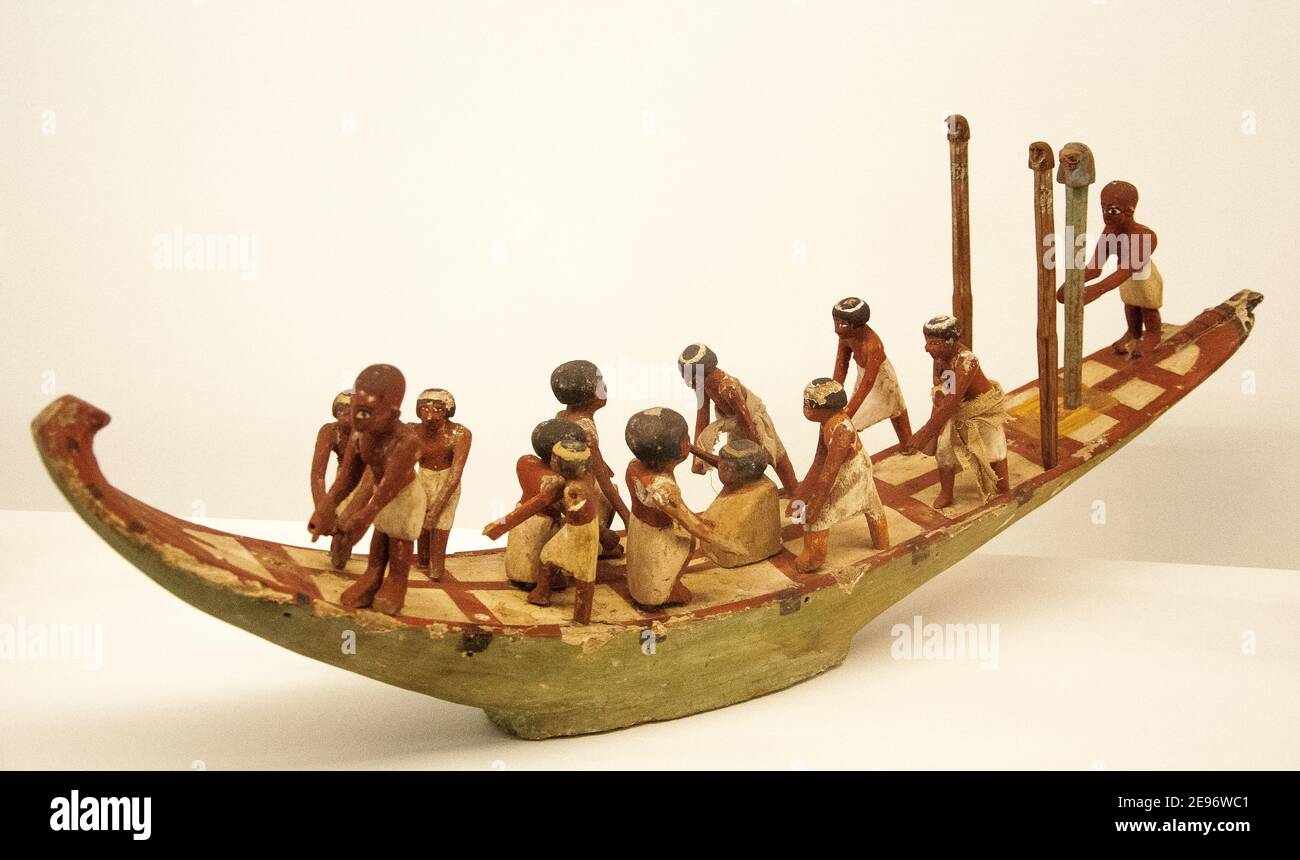 Funerary model of a boat with crew, Middle Kingdom, Ancient Egypt, National Gallery of Victoria, Melbourne, Australia Stock Photohttps://www.alamy.com/image-license-details/?v=1https://www.alamy.com/funerary-model-of-a-boat-with-crew-middle-kingdom-ancient-egypt-national-gallery-of-victoria-melbourne-australia-image401522017.html
Funerary model of a boat with crew, Middle Kingdom, Ancient Egypt, National Gallery of Victoria, Melbourne, Australia Stock Photohttps://www.alamy.com/image-license-details/?v=1https://www.alamy.com/funerary-model-of-a-boat-with-crew-middle-kingdom-ancient-egypt-national-gallery-of-victoria-melbourne-australia-image401522017.htmlRM2E96WC1–Funerary model of a boat with crew, Middle Kingdom, Ancient Egypt, National Gallery of Victoria, Melbourne, Australia
 Top: False vault fashioned of brick in Naga-ed-der. Bottom: Brick tomb vault with stairs in Naga-ed-der. The site of Naga ed-Deir (sometimes spelled Der) is located on the east bank of the Nile near Abydos. Beginning in 1901, George A. Reisner conducted a number of excavating campaigns in the neighborhood of the modern village of Naga ed-Deir in Upper Egypt, opposite the ancient city of Thinis. Naga-ed-Dêr is important because of a series of ancient cemeteries extending in time from the Predynastic period (c. 6000-3150 BC) to the Middle Kingdom (2030-1650 BC). Stock Photohttps://www.alamy.com/image-license-details/?v=1https://www.alamy.com/top-false-vault-fashioned-of-brick-in-naga-ed-der-bottom-brick-tomb-vault-with-stairs-in-naga-ed-der-the-site-of-naga-ed-deir-sometimes-spelled-der-is-located-on-the-east-bank-of-the-nile-near-abydos-beginning-in-1901-george-a-reisner-conducted-a-number-of-excavating-campaigns-in-the-neighborhood-of-the-modern-village-of-naga-ed-deir-in-upper-egypt-opposite-the-ancient-city-of-thinis-naga-ed-dr-is-important-because-of-a-series-of-ancient-cemeteries-extending-in-time-from-the-predynastic-period-c-6000-3150-bc-to-the-middle-kingdom-2030-1650-bc-image643792861.html
Top: False vault fashioned of brick in Naga-ed-der. Bottom: Brick tomb vault with stairs in Naga-ed-der. The site of Naga ed-Deir (sometimes spelled Der) is located on the east bank of the Nile near Abydos. Beginning in 1901, George A. Reisner conducted a number of excavating campaigns in the neighborhood of the modern village of Naga ed-Deir in Upper Egypt, opposite the ancient city of Thinis. Naga-ed-Dêr is important because of a series of ancient cemeteries extending in time from the Predynastic period (c. 6000-3150 BC) to the Middle Kingdom (2030-1650 BC). Stock Photohttps://www.alamy.com/image-license-details/?v=1https://www.alamy.com/top-false-vault-fashioned-of-brick-in-naga-ed-der-bottom-brick-tomb-vault-with-stairs-in-naga-ed-der-the-site-of-naga-ed-deir-sometimes-spelled-der-is-located-on-the-east-bank-of-the-nile-near-abydos-beginning-in-1901-george-a-reisner-conducted-a-number-of-excavating-campaigns-in-the-neighborhood-of-the-modern-village-of-naga-ed-deir-in-upper-egypt-opposite-the-ancient-city-of-thinis-naga-ed-dr-is-important-because-of-a-series-of-ancient-cemeteries-extending-in-time-from-the-predynastic-period-c-6000-3150-bc-to-the-middle-kingdom-2030-1650-bc-image643792861.htmlRF2SBB8A5–Top: False vault fashioned of brick in Naga-ed-der. Bottom: Brick tomb vault with stairs in Naga-ed-der. The site of Naga ed-Deir (sometimes spelled Der) is located on the east bank of the Nile near Abydos. Beginning in 1901, George A. Reisner conducted a number of excavating campaigns in the neighborhood of the modern village of Naga ed-Deir in Upper Egypt, opposite the ancient city of Thinis. Naga-ed-Dêr is important because of a series of ancient cemeteries extending in time from the Predynastic period (c. 6000-3150 BC) to the Middle Kingdom (2030-1650 BC).
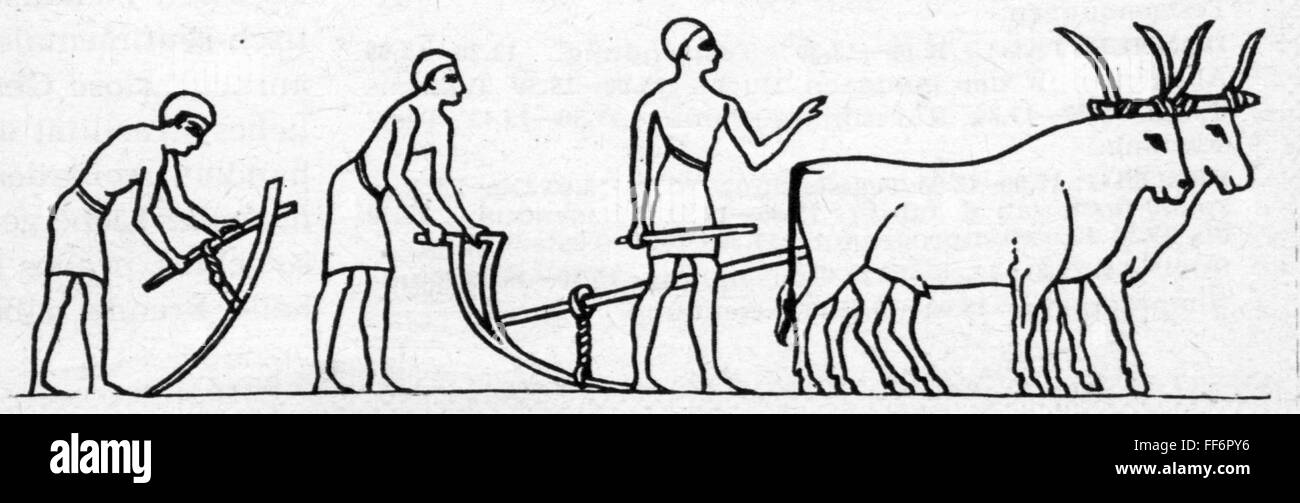 agriculture,agricultural work,plowing,working on the soil with hoe and plough,after relief,Egypt,circa 2000 BC,wood engraving,19th century,ploughing,plowing,people,men,man,Middle Kingdom of Egypt,farmer,farmers,prehistory,prehistoric times,early history,prehistorical,prehistoric,devices,device,tool,tools,technics,technology,technologies,draught animal,draught animals,working animal,work animal,working animals,cattle,tillage,tilth,arable farming,agriculture,farming,agricultural work,farm labour,farm labor,working on,wo,Additional-Rights-Clearences-Not Available Stock Photohttps://www.alamy.com/image-license-details/?v=1https://www.alamy.com/stock-photo-agricultureagricultural-workplowingworking-on-the-soil-with-hoe-and-95421402.html
agriculture,agricultural work,plowing,working on the soil with hoe and plough,after relief,Egypt,circa 2000 BC,wood engraving,19th century,ploughing,plowing,people,men,man,Middle Kingdom of Egypt,farmer,farmers,prehistory,prehistoric times,early history,prehistorical,prehistoric,devices,device,tool,tools,technics,technology,technologies,draught animal,draught animals,working animal,work animal,working animals,cattle,tillage,tilth,arable farming,agriculture,farming,agricultural work,farm labour,farm labor,working on,wo,Additional-Rights-Clearences-Not Available Stock Photohttps://www.alamy.com/image-license-details/?v=1https://www.alamy.com/stock-photo-agricultureagricultural-workplowingworking-on-the-soil-with-hoe-and-95421402.htmlRMFF6PY6–agriculture,agricultural work,plowing,working on the soil with hoe and plough,after relief,Egypt,circa 2000 BC,wood engraving,19th century,ploughing,plowing,people,men,man,Middle Kingdom of Egypt,farmer,farmers,prehistory,prehistoric times,early history,prehistorical,prehistoric,devices,device,tool,tools,technics,technology,technologies,draught animal,draught animals,working animal,work animal,working animals,cattle,tillage,tilth,arable farming,agriculture,farming,agricultural work,farm labour,farm labor,working on,wo,Additional-Rights-Clearences-Not Available
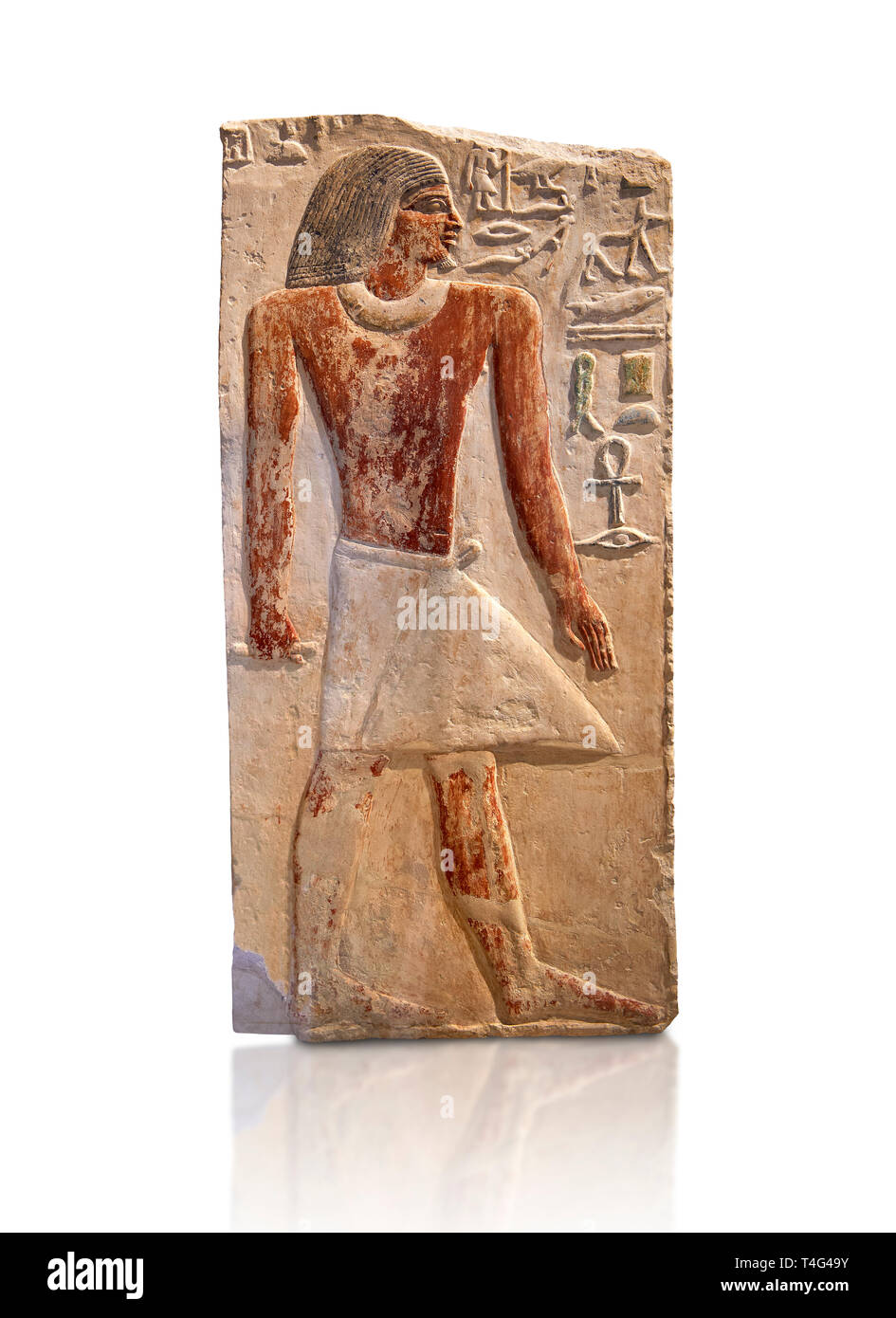 Ancient Egyptian tomb relief sculpture depicting the scribe and judge Ankhirptah. Middle Kingdom Egypt, 2170 BC. Neues Museum Berlin Cat No: AM 7337 Stock Photohttps://www.alamy.com/image-license-details/?v=1https://www.alamy.com/ancient-egyptian-tomb-relief-sculpture-depicting-the-scribe-and-judge-ankhirptah-middle-kingdom-egypt-2170-bc-neues-museum-berlin-cat-no-am-7337-image243758423.html
Ancient Egyptian tomb relief sculpture depicting the scribe and judge Ankhirptah. Middle Kingdom Egypt, 2170 BC. Neues Museum Berlin Cat No: AM 7337 Stock Photohttps://www.alamy.com/image-license-details/?v=1https://www.alamy.com/ancient-egyptian-tomb-relief-sculpture-depicting-the-scribe-and-judge-ankhirptah-middle-kingdom-egypt-2170-bc-neues-museum-berlin-cat-no-am-7337-image243758423.htmlRFT4G49Y–Ancient Egyptian tomb relief sculpture depicting the scribe and judge Ankhirptah. Middle Kingdom Egypt, 2170 BC. Neues Museum Berlin Cat No: AM 7337
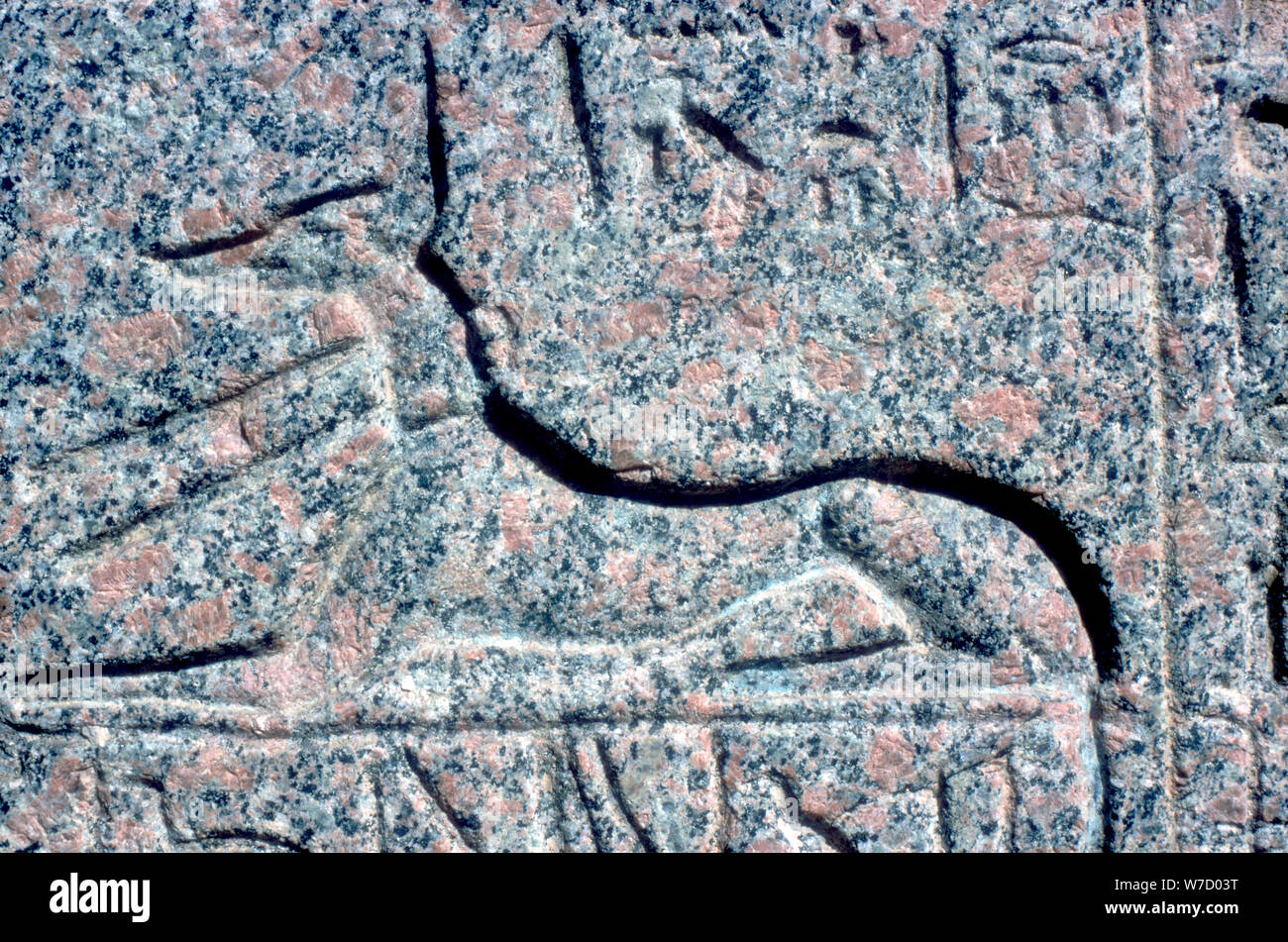 Detail from relief on granite sarcophagus of Anubis, Memphis, Egypt, Middle kingdom period. Artist: Unknown Stock Photohttps://www.alamy.com/image-license-details/?v=1https://www.alamy.com/detail-from-relief-on-granite-sarcophagus-of-anubis-memphis-egypt-middle-kingdom-period-artist-unknown-image262743596.html
Detail from relief on granite sarcophagus of Anubis, Memphis, Egypt, Middle kingdom period. Artist: Unknown Stock Photohttps://www.alamy.com/image-license-details/?v=1https://www.alamy.com/detail-from-relief-on-granite-sarcophagus-of-anubis-memphis-egypt-middle-kingdom-period-artist-unknown-image262743596.htmlRMW7D03T–Detail from relief on granite sarcophagus of Anubis, Memphis, Egypt, Middle kingdom period. Artist: Unknown
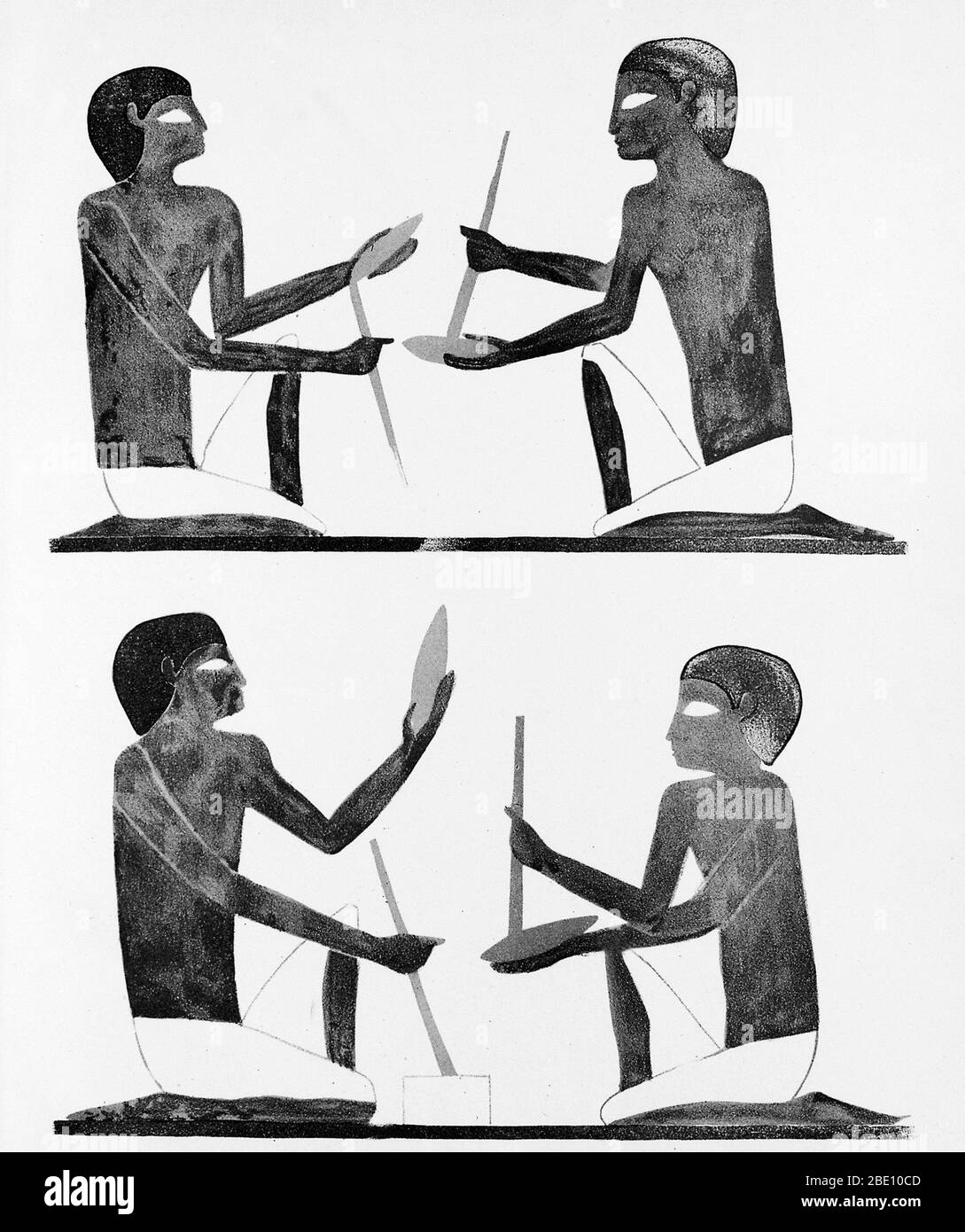 The manufacture of flint knives, as represented in the Ancient Egyptian Beni Hasan tomb, located south of modern-day Minya in the region known as Middle Egypt, the area between Asyut and Memphis. This site was primarily used during the Middle Kingdom, spanning the 21st to 17th centuries BCE (Middle Bronze Age). Stock Photohttps://www.alamy.com/image-license-details/?v=1https://www.alamy.com/the-manufacture-of-flint-knives-as-represented-in-the-ancient-egyptian-beni-hasan-tomb-located-south-of-modern-day-minya-in-the-region-known-as-middle-egypt-the-area-between-asyut-and-memphis-this-site-was-primarily-used-during-the-middle-kingdom-spanning-the-21st-to-17th-centuries-bce-middle-bronze-age-image352834845.html
The manufacture of flint knives, as represented in the Ancient Egyptian Beni Hasan tomb, located south of modern-day Minya in the region known as Middle Egypt, the area between Asyut and Memphis. This site was primarily used during the Middle Kingdom, spanning the 21st to 17th centuries BCE (Middle Bronze Age). Stock Photohttps://www.alamy.com/image-license-details/?v=1https://www.alamy.com/the-manufacture-of-flint-knives-as-represented-in-the-ancient-egyptian-beni-hasan-tomb-located-south-of-modern-day-minya-in-the-region-known-as-middle-egypt-the-area-between-asyut-and-memphis-this-site-was-primarily-used-during-the-middle-kingdom-spanning-the-21st-to-17th-centuries-bce-middle-bronze-age-image352834845.htmlRM2BE10CD–The manufacture of flint knives, as represented in the Ancient Egyptian Beni Hasan tomb, located south of modern-day Minya in the region known as Middle Egypt, the area between Asyut and Memphis. This site was primarily used during the Middle Kingdom, spanning the 21st to 17th centuries BCE (Middle Bronze Age).
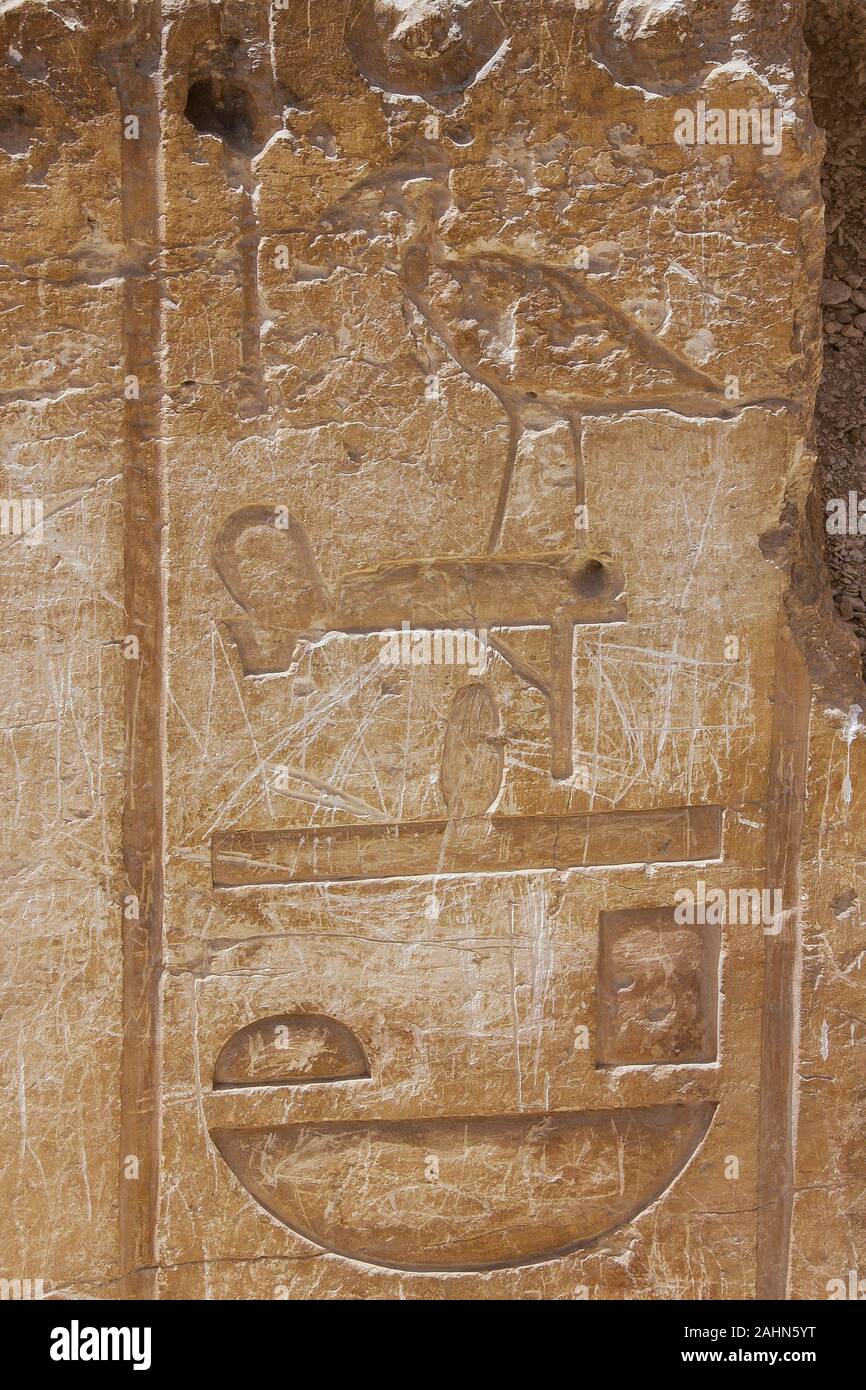 Middle Egypt, Deir el Bersha, the tomb of Djehutyhotep dates from the Middle Kingdom. The name 'Djehuty hotep' (God Djehuty is peaceful). Stock Photohttps://www.alamy.com/image-license-details/?v=1https://www.alamy.com/middle-egypt-deir-el-bersha-the-tomb-of-djehutyhotep-dates-from-the-middle-kingdom-the-name-djehuty-hotep-god-djehuty-is-peaceful-image337911836.html
Middle Egypt, Deir el Bersha, the tomb of Djehutyhotep dates from the Middle Kingdom. The name 'Djehuty hotep' (God Djehuty is peaceful). Stock Photohttps://www.alamy.com/image-license-details/?v=1https://www.alamy.com/middle-egypt-deir-el-bersha-the-tomb-of-djehutyhotep-dates-from-the-middle-kingdom-the-name-djehuty-hotep-god-djehuty-is-peaceful-image337911836.htmlRM2AHN5YT–Middle Egypt, Deir el Bersha, the tomb of Djehutyhotep dates from the Middle Kingdom. The name 'Djehuty hotep' (God Djehuty is peaceful).
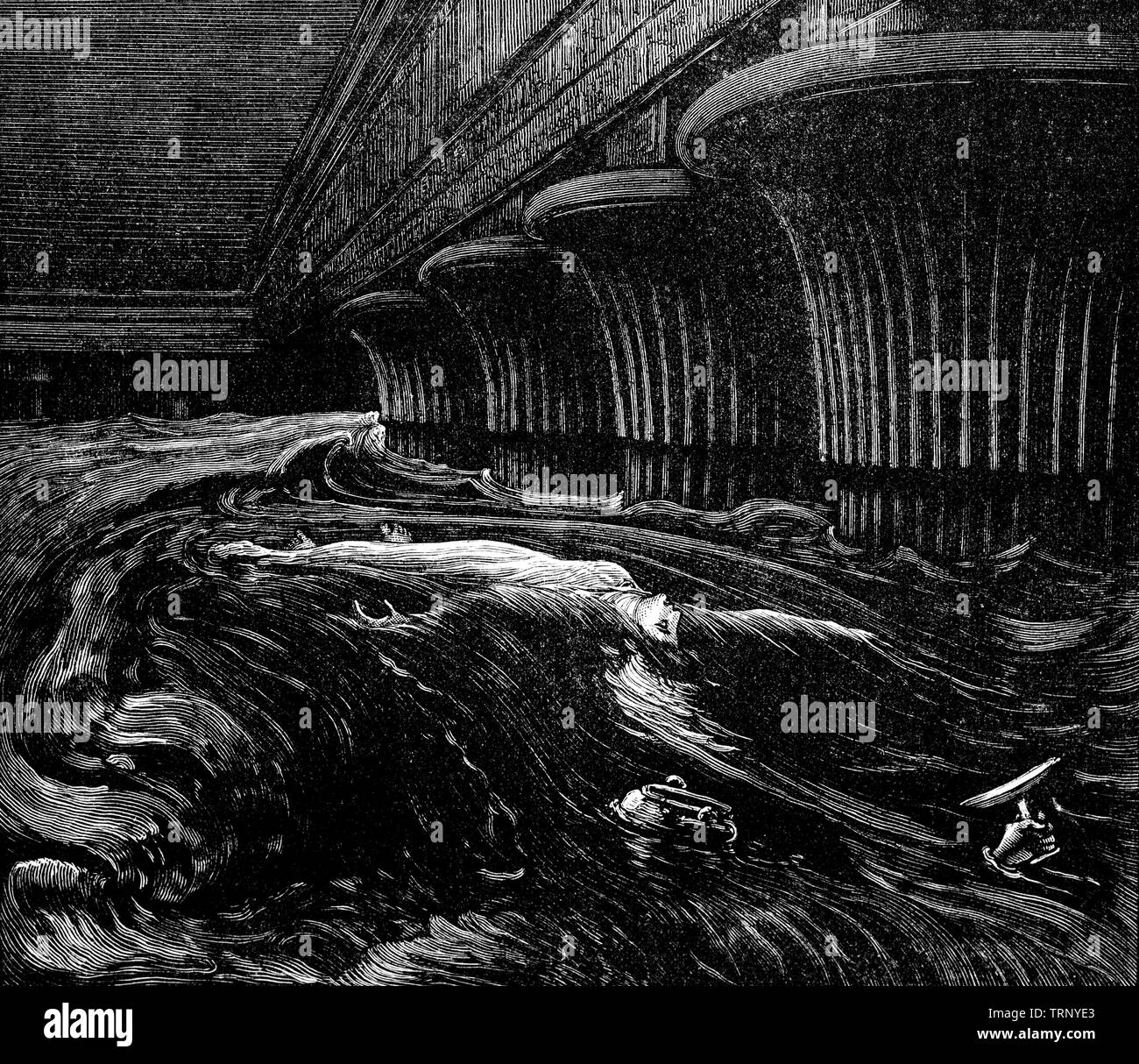 Nitocris, is claimed to have been the last pharaoh of ancient Egypt's Sixth Dynasty during the transition between the Old Kingdom and First Intermediate Period, around 2181BC. According to Herodotus, she constructed a spacious underground chamber and, on pretense of inaugurating it, threw a banquet, inviting all those whom she knew to have been responsible for the murder of her brother. Suddenly as they were feasting, she let the river in upon them by means of a large, secret duct and to avoid the other conspirators, committed suicide. Stock Photohttps://www.alamy.com/image-license-details/?v=1https://www.alamy.com/nitocris-is-claimed-to-have-been-the-last-pharaoh-of-ancient-egypts-sixth-dynasty-during-the-transition-between-the-old-kingdom-and-first-intermediate-period-around-2181bc-according-to-herodotus-she-constructed-a-spacious-underground-chamber-and-on-pretense-of-inaugurating-it-threw-a-banquet-inviting-all-those-whom-she-knew-to-have-been-responsible-for-the-murder-of-her-brother-suddenly-as-they-were-feasting-she-let-the-river-in-upon-them-by-means-of-a-large-secret-duct-and-to-avoid-the-other-conspirators-committed-suicide-image255564795.html
Nitocris, is claimed to have been the last pharaoh of ancient Egypt's Sixth Dynasty during the transition between the Old Kingdom and First Intermediate Period, around 2181BC. According to Herodotus, she constructed a spacious underground chamber and, on pretense of inaugurating it, threw a banquet, inviting all those whom she knew to have been responsible for the murder of her brother. Suddenly as they were feasting, she let the river in upon them by means of a large, secret duct and to avoid the other conspirators, committed suicide. Stock Photohttps://www.alamy.com/image-license-details/?v=1https://www.alamy.com/nitocris-is-claimed-to-have-been-the-last-pharaoh-of-ancient-egypts-sixth-dynasty-during-the-transition-between-the-old-kingdom-and-first-intermediate-period-around-2181bc-according-to-herodotus-she-constructed-a-spacious-underground-chamber-and-on-pretense-of-inaugurating-it-threw-a-banquet-inviting-all-those-whom-she-knew-to-have-been-responsible-for-the-murder-of-her-brother-suddenly-as-they-were-feasting-she-let-the-river-in-upon-them-by-means-of-a-large-secret-duct-and-to-avoid-the-other-conspirators-committed-suicide-image255564795.htmlRMTRNYE3–Nitocris, is claimed to have been the last pharaoh of ancient Egypt's Sixth Dynasty during the transition between the Old Kingdom and First Intermediate Period, around 2181BC. According to Herodotus, she constructed a spacious underground chamber and, on pretense of inaugurating it, threw a banquet, inviting all those whom she knew to have been responsible for the murder of her brother. Suddenly as they were feasting, she let the river in upon them by means of a large, secret duct and to avoid the other conspirators, committed suicide.
 EGYPT Nile Valley Karnak Precinct of Amun. Statues of Middle Kingdom Pharaohs in Cachette Court. Stock Photohttps://www.alamy.com/image-license-details/?v=1https://www.alamy.com/stock-photo-egypt-nile-valley-karnak-precinct-of-amun-statues-of-middle-kingdom-22864039.html
EGYPT Nile Valley Karnak Precinct of Amun. Statues of Middle Kingdom Pharaohs in Cachette Court. Stock Photohttps://www.alamy.com/image-license-details/?v=1https://www.alamy.com/stock-photo-egypt-nile-valley-karnak-precinct-of-amun-statues-of-middle-kingdom-22864039.htmlRMB95F8R–EGYPT Nile Valley Karnak Precinct of Amun. Statues of Middle Kingdom Pharaohs in Cachette Court.
 Art inspired by Kohl jar, Middle Kingdom, Dynasty 13–17, ca. 1800–1550 B.C., From Egypt, Anhydrite, Classic works modernized by Artotop with a splash of modernity. Shapes, color and value, eye-catching visual impact on art. Emotions through freedom of artworks in a contemporary way. A timeless message pursuing a wildly creative new direction. Artists turning to the digital medium and creating the Artotop NFT Stock Photohttps://www.alamy.com/image-license-details/?v=1https://www.alamy.com/art-inspired-by-kohl-jar-middle-kingdom-dynasty-1317-ca-18001550-bc-from-egypt-anhydrite-classic-works-modernized-by-artotop-with-a-splash-of-modernity-shapes-color-and-value-eye-catching-visual-impact-on-art-emotions-through-freedom-of-artworks-in-a-contemporary-way-a-timeless-message-pursuing-a-wildly-creative-new-direction-artists-turning-to-the-digital-medium-and-creating-the-artotop-nft-image462849021.html
Art inspired by Kohl jar, Middle Kingdom, Dynasty 13–17, ca. 1800–1550 B.C., From Egypt, Anhydrite, Classic works modernized by Artotop with a splash of modernity. Shapes, color and value, eye-catching visual impact on art. Emotions through freedom of artworks in a contemporary way. A timeless message pursuing a wildly creative new direction. Artists turning to the digital medium and creating the Artotop NFT Stock Photohttps://www.alamy.com/image-license-details/?v=1https://www.alamy.com/art-inspired-by-kohl-jar-middle-kingdom-dynasty-1317-ca-18001550-bc-from-egypt-anhydrite-classic-works-modernized-by-artotop-with-a-splash-of-modernity-shapes-color-and-value-eye-catching-visual-impact-on-art-emotions-through-freedom-of-artworks-in-a-contemporary-way-a-timeless-message-pursuing-a-wildly-creative-new-direction-artists-turning-to-the-digital-medium-and-creating-the-artotop-nft-image462849021.htmlRF2HW0GJ5–Art inspired by Kohl jar, Middle Kingdom, Dynasty 13–17, ca. 1800–1550 B.C., From Egypt, Anhydrite, Classic works modernized by Artotop with a splash of modernity. Shapes, color and value, eye-catching visual impact on art. Emotions through freedom of artworks in a contemporary way. A timeless message pursuing a wildly creative new direction. Artists turning to the digital medium and creating the Artotop NFT
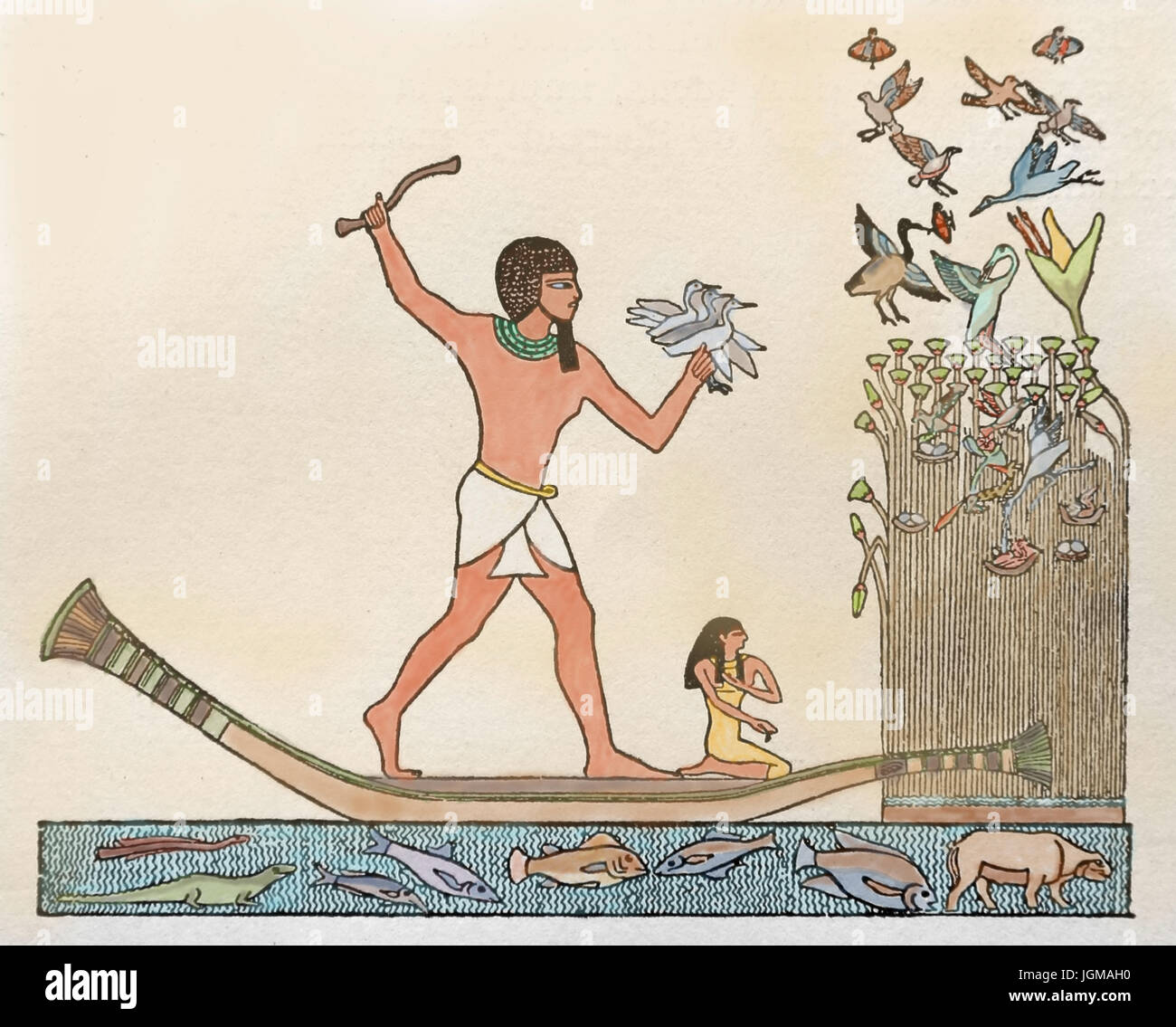 Relief illustration on a tomb. Hunting scene. Original carved in stone. Dinasty 12 (1850 b.c.) Middle Kingdom,Egypt. Engraving, later colouration. Stock Photohttps://www.alamy.com/image-license-details/?v=1https://www.alamy.com/stock-photo-relief-illustration-on-a-tomb-hunting-scene-original-carved-in-stone-147964796.html
Relief illustration on a tomb. Hunting scene. Original carved in stone. Dinasty 12 (1850 b.c.) Middle Kingdom,Egypt. Engraving, later colouration. Stock Photohttps://www.alamy.com/image-license-details/?v=1https://www.alamy.com/stock-photo-relief-illustration-on-a-tomb-hunting-scene-original-carved-in-stone-147964796.htmlRMJGMAH0–Relief illustration on a tomb. Hunting scene. Original carved in stone. Dinasty 12 (1850 b.c.) Middle Kingdom,Egypt. Engraving, later colouration.
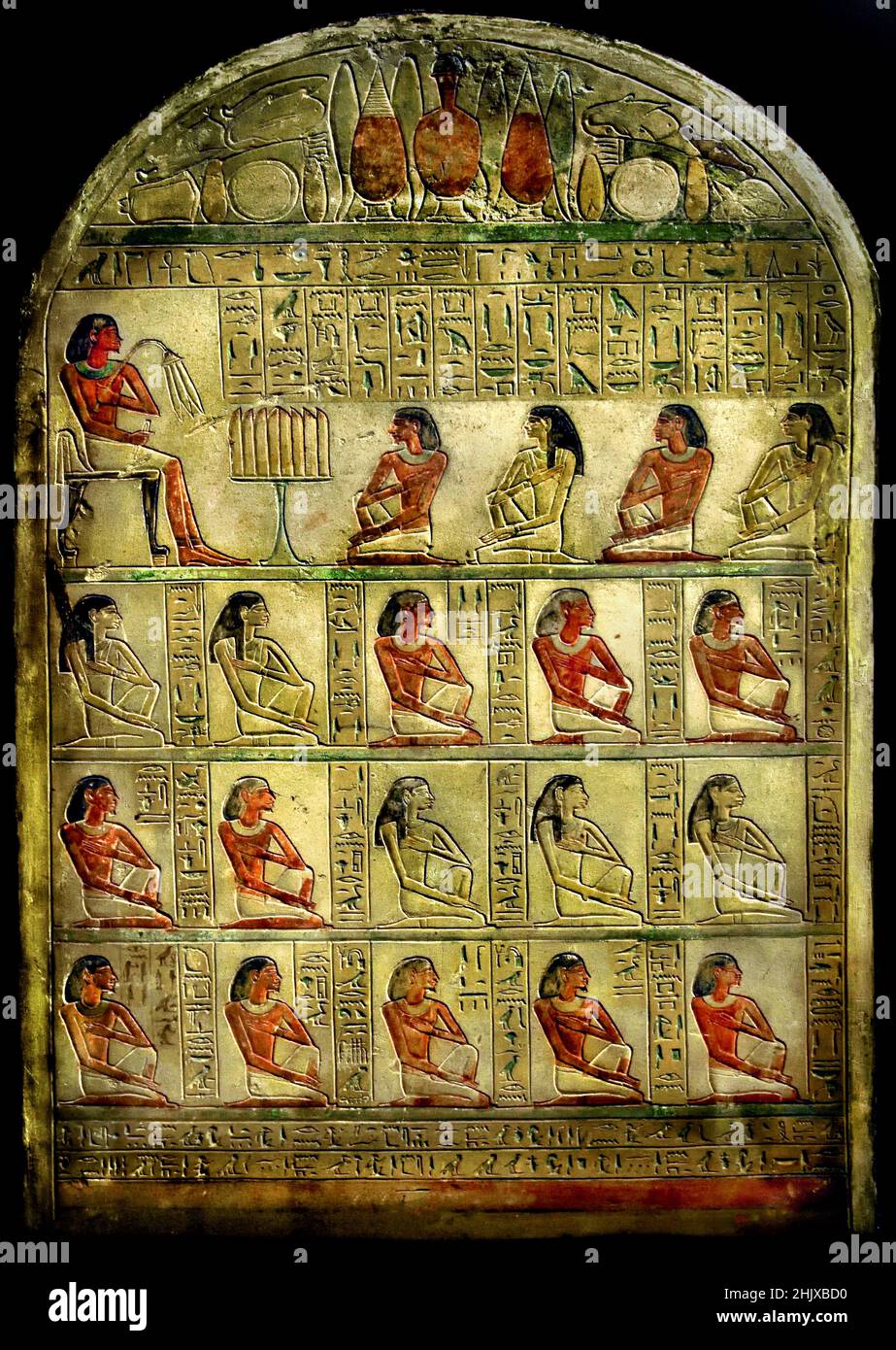 Family stela of the chief scribe Horhernakht, son of Khety , Stone / limestone, 69 x 45 x 9 cm, 1850–1759 BC, 12th, Twelfth ,Dynasty, Middle Kingdom, Egypt (Museo Egizio di Torino Italy) Stock Photohttps://www.alamy.com/image-license-details/?v=1https://www.alamy.com/family-stela-of-the-chief-scribe-horhernakht-son-of-khety-stone-limestone-69-x-45-x-9-cm-18501759-bc-12th-twelfth-dynasty-middle-kingdom-egypt-museo-egizio-di-torino-italy-image459113116.html
Family stela of the chief scribe Horhernakht, son of Khety , Stone / limestone, 69 x 45 x 9 cm, 1850–1759 BC, 12th, Twelfth ,Dynasty, Middle Kingdom, Egypt (Museo Egizio di Torino Italy) Stock Photohttps://www.alamy.com/image-license-details/?v=1https://www.alamy.com/family-stela-of-the-chief-scribe-horhernakht-son-of-khety-stone-limestone-69-x-45-x-9-cm-18501759-bc-12th-twelfth-dynasty-middle-kingdom-egypt-museo-egizio-di-torino-italy-image459113116.htmlRM2HJXBD0–Family stela of the chief scribe Horhernakht, son of Khety , Stone / limestone, 69 x 45 x 9 cm, 1850–1759 BC, 12th, Twelfth ,Dynasty, Middle Kingdom, Egypt (Museo Egizio di Torino Italy)
 Funerary stela of Sabu. Limestone. 1985-1795 BC. 12th Dynasty. Middle Kingdom. Origin unknown. Stock Photohttps://www.alamy.com/image-license-details/?v=1https://www.alamy.com/stock-photo-funerary-stela-of-sabu-limestone-1985-1795-bc-12th-dynasty-middle-47872524.html
Funerary stela of Sabu. Limestone. 1985-1795 BC. 12th Dynasty. Middle Kingdom. Origin unknown. Stock Photohttps://www.alamy.com/image-license-details/?v=1https://www.alamy.com/stock-photo-funerary-stela-of-sabu-limestone-1985-1795-bc-12th-dynasty-middle-47872524.htmlRMCNTNW0–Funerary stela of Sabu. Limestone. 1985-1795 BC. 12th Dynasty. Middle Kingdom. Origin unknown.
 Ancient Egypt. The Middle Kingdom. The twelfth dynasty period (XX-XVIII centuries BC). Capstone of the pyramid of Amenemhet III, at Dashur Stock Photohttps://www.alamy.com/image-license-details/?v=1https://www.alamy.com/ancient-egypt-the-middle-kingdom-the-twelfth-dynasty-period-xx-xviii-centuries-bc-capstone-of-the-pyramid-of-amenemhet-iii-at-dashur-image465662441.html
Ancient Egypt. The Middle Kingdom. The twelfth dynasty period (XX-XVIII centuries BC). Capstone of the pyramid of Amenemhet III, at Dashur Stock Photohttps://www.alamy.com/image-license-details/?v=1https://www.alamy.com/ancient-egypt-the-middle-kingdom-the-twelfth-dynasty-period-xx-xviii-centuries-bc-capstone-of-the-pyramid-of-amenemhet-iii-at-dashur-image465662441.htmlRM2J1GN5D–Ancient Egypt. The Middle Kingdom. The twelfth dynasty period (XX-XVIII centuries BC). Capstone of the pyramid of Amenemhet III, at Dashur
 Berlin, Germany. 27th Aug, 2016. Visitors photograph a figurine of Mentuhotep with Hes Vase (Middle Kingdom Egypt, early 12th Dynasty, 195 - 1911 BC) in the Neue Museum in Berlin, Germany, 27 August 2016. The building is open for the Lange Nacht der Museen (lt. Long Night of Museums) event. Photo: Klaus-Dietmar Gabbert/dpa./dpa/Alamy Live News Stock Photohttps://www.alamy.com/image-license-details/?v=1https://www.alamy.com/stock-photo-berlin-germany-27th-aug-2016-visitors-photograph-a-figurine-of-mentuhotep-116232241.html
Berlin, Germany. 27th Aug, 2016. Visitors photograph a figurine of Mentuhotep with Hes Vase (Middle Kingdom Egypt, early 12th Dynasty, 195 - 1911 BC) in the Neue Museum in Berlin, Germany, 27 August 2016. The building is open for the Lange Nacht der Museen (lt. Long Night of Museums) event. Photo: Klaus-Dietmar Gabbert/dpa./dpa/Alamy Live News Stock Photohttps://www.alamy.com/image-license-details/?v=1https://www.alamy.com/stock-photo-berlin-germany-27th-aug-2016-visitors-photograph-a-figurine-of-mentuhotep-116232241.htmlRMGN2RBD–Berlin, Germany. 27th Aug, 2016. Visitors photograph a figurine of Mentuhotep with Hes Vase (Middle Kingdom Egypt, early 12th Dynasty, 195 - 1911 BC) in the Neue Museum in Berlin, Germany, 27 August 2016. The building is open for the Lange Nacht der Museen (lt. Long Night of Museums) event. Photo: Klaus-Dietmar Gabbert/dpa./dpa/Alamy Live News
 Egypt: Temple mural of two girls dancing, Tomb of Nebamun, c. 1350 BCE. Nebamun (fl. 1350 BCE) was a middle-ranking official during the period of the New Kingdom in ancient Egypt, serving as a scribe and grain accountant at the god Amun's temple complex near Thebes (modern-day Luxor). In ancient Egypt entertainment by dancers was common, but mixed gender dancing is not represented in murals and frescoes. Egyptian dancing may have been influenced by the Nubian tradition, which became very popular in Rome during the days of the empire, and is still alive in parts of the Sudan today. Stock Photohttps://www.alamy.com/image-license-details/?v=1https://www.alamy.com/egypt-temple-mural-of-two-girls-dancing-tomb-of-nebamun-c-1350-bce-nebamun-fl-1350-bce-was-a-middle-ranking-official-during-the-period-of-the-new-kingdom-in-ancient-egypt-serving-as-a-scribe-and-grain-accountant-at-the-god-amuns-temple-complex-near-thebes-modern-day-luxor-in-ancient-egypt-entertainment-by-dancers-was-common-but-mixed-gender-dancing-is-not-represented-in-murals-and-frescoes-egyptian-dancing-may-have-been-influenced-by-the-nubian-tradition-which-became-very-popular-in-rome-during-the-days-of-the-empire-and-is-still-alive-in-parts-of-the-sudan-today-image344239829.html
Egypt: Temple mural of two girls dancing, Tomb of Nebamun, c. 1350 BCE. Nebamun (fl. 1350 BCE) was a middle-ranking official during the period of the New Kingdom in ancient Egypt, serving as a scribe and grain accountant at the god Amun's temple complex near Thebes (modern-day Luxor). In ancient Egypt entertainment by dancers was common, but mixed gender dancing is not represented in murals and frescoes. Egyptian dancing may have been influenced by the Nubian tradition, which became very popular in Rome during the days of the empire, and is still alive in parts of the Sudan today. Stock Photohttps://www.alamy.com/image-license-details/?v=1https://www.alamy.com/egypt-temple-mural-of-two-girls-dancing-tomb-of-nebamun-c-1350-bce-nebamun-fl-1350-bce-was-a-middle-ranking-official-during-the-period-of-the-new-kingdom-in-ancient-egypt-serving-as-a-scribe-and-grain-accountant-at-the-god-amuns-temple-complex-near-thebes-modern-day-luxor-in-ancient-egypt-entertainment-by-dancers-was-common-but-mixed-gender-dancing-is-not-represented-in-murals-and-frescoes-egyptian-dancing-may-have-been-influenced-by-the-nubian-tradition-which-became-very-popular-in-rome-during-the-days-of-the-empire-and-is-still-alive-in-parts-of-the-sudan-today-image344239829.htmlRM2B01DBH–Egypt: Temple mural of two girls dancing, Tomb of Nebamun, c. 1350 BCE. Nebamun (fl. 1350 BCE) was a middle-ranking official during the period of the New Kingdom in ancient Egypt, serving as a scribe and grain accountant at the god Amun's temple complex near Thebes (modern-day Luxor). In ancient Egypt entertainment by dancers was common, but mixed gender dancing is not represented in murals and frescoes. Egyptian dancing may have been influenced by the Nubian tradition, which became very popular in Rome during the days of the empire, and is still alive in parts of the Sudan today.
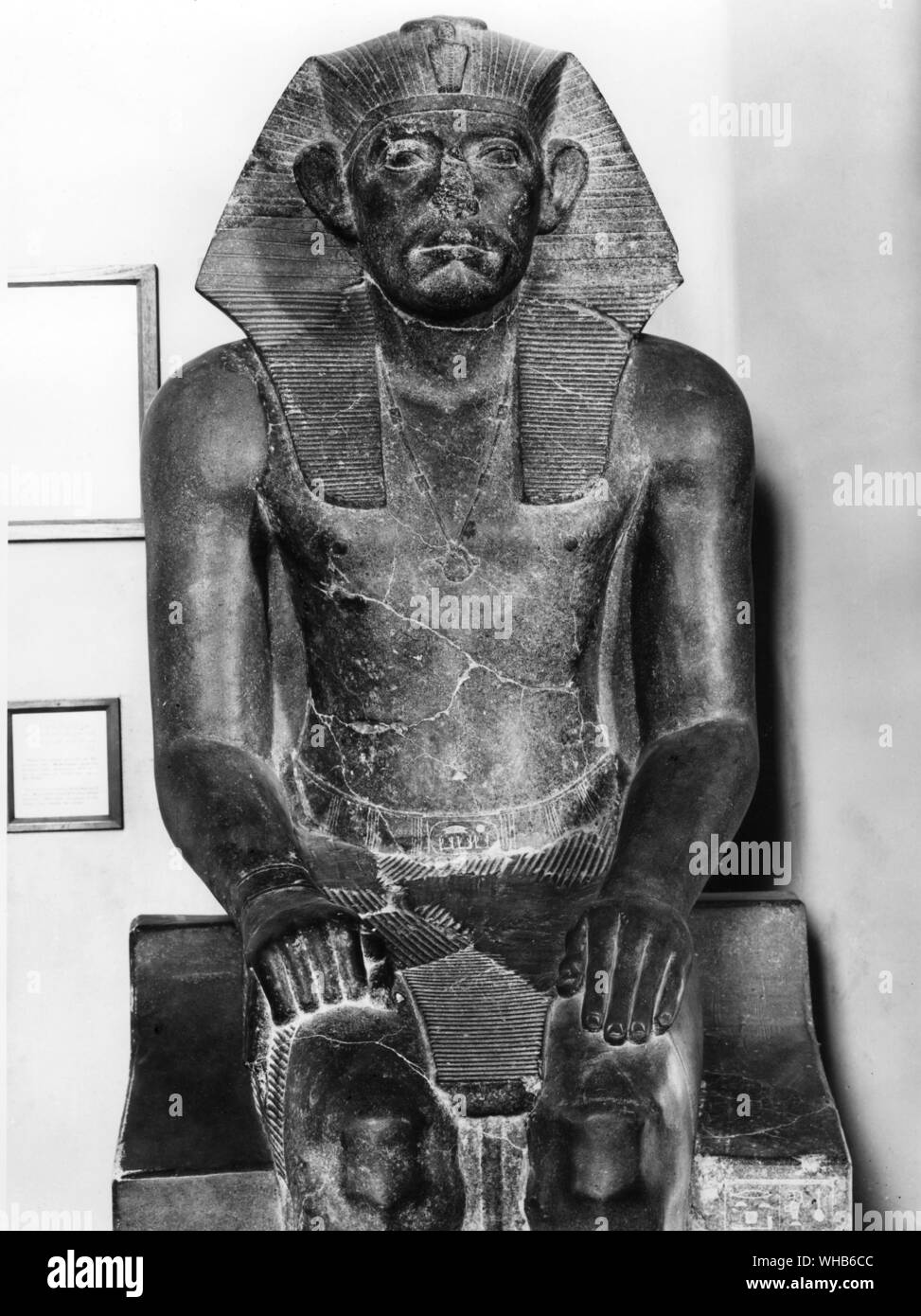 Sphinx of Senusret III Middle Kingdom XII Dynasty (1878-1843 BC ?) - Khakhaure Senusret III (also written as Senwosret III or Sesostris III) was a pharaoh of Egypt. He ruled from 1878 BC to 1839 BC, and was the fifth monarch of the Twelfth Dynasty of the Middle Kingdom. He was a Great Pharaoh of the twelfth Dynasty and is supposed to be the most powerful Egyptian ruler of this time. For this, he is regarded as one of the sources for the legend about Sesostris.. Stock Photohttps://www.alamy.com/image-license-details/?v=1https://www.alamy.com/sphinx-of-senusret-iii-middle-kingdom-xii-dynasty-1878-1843-bc-khakhaure-senusret-iii-also-written-as-senwosret-iii-or-sesostris-iii-was-a-pharaoh-of-egypt-he-ruled-from-1878-bc-to-1839-bc-and-was-the-fifth-monarch-of-the-twelfth-dynasty-of-the-middle-kingdom-he-was-a-great-pharaoh-of-the-twelfth-dynasty-and-is-supposed-to-be-the-most-powerful-egyptian-ruler-of-this-time-for-this-he-is-regarded-as-one-of-the-sources-for-the-legend-about-sesostris-image268851196.html
Sphinx of Senusret III Middle Kingdom XII Dynasty (1878-1843 BC ?) - Khakhaure Senusret III (also written as Senwosret III or Sesostris III) was a pharaoh of Egypt. He ruled from 1878 BC to 1839 BC, and was the fifth monarch of the Twelfth Dynasty of the Middle Kingdom. He was a Great Pharaoh of the twelfth Dynasty and is supposed to be the most powerful Egyptian ruler of this time. For this, he is regarded as one of the sources for the legend about Sesostris.. Stock Photohttps://www.alamy.com/image-license-details/?v=1https://www.alamy.com/sphinx-of-senusret-iii-middle-kingdom-xii-dynasty-1878-1843-bc-khakhaure-senusret-iii-also-written-as-senwosret-iii-or-sesostris-iii-was-a-pharaoh-of-egypt-he-ruled-from-1878-bc-to-1839-bc-and-was-the-fifth-monarch-of-the-twelfth-dynasty-of-the-middle-kingdom-he-was-a-great-pharaoh-of-the-twelfth-dynasty-and-is-supposed-to-be-the-most-powerful-egyptian-ruler-of-this-time-for-this-he-is-regarded-as-one-of-the-sources-for-the-legend-about-sesostris-image268851196.htmlRMWHB6CC–Sphinx of Senusret III Middle Kingdom XII Dynasty (1878-1843 BC ?) - Khakhaure Senusret III (also written as Senwosret III or Sesostris III) was a pharaoh of Egypt. He ruled from 1878 BC to 1839 BC, and was the fifth monarch of the Twelfth Dynasty of the Middle Kingdom. He was a Great Pharaoh of the twelfth Dynasty and is supposed to be the most powerful Egyptian ruler of this time. For this, he is regarded as one of the sources for the legend about Sesostris..
 chisel, round, chisel, bronze, length: 23 cm, Middle Kingdom, Egypt Stock Photohttps://www.alamy.com/image-license-details/?v=1https://www.alamy.com/chisel-round-chisel-bronze-length-23-cm-middle-kingdom-egypt-image344497579.html
chisel, round, chisel, bronze, length: 23 cm, Middle Kingdom, Egypt Stock Photohttps://www.alamy.com/image-license-details/?v=1https://www.alamy.com/chisel-round-chisel-bronze-length-23-cm-middle-kingdom-egypt-image344497579.htmlRM2B0D64Y–chisel, round, chisel, bronze, length: 23 cm, Middle Kingdom, Egypt
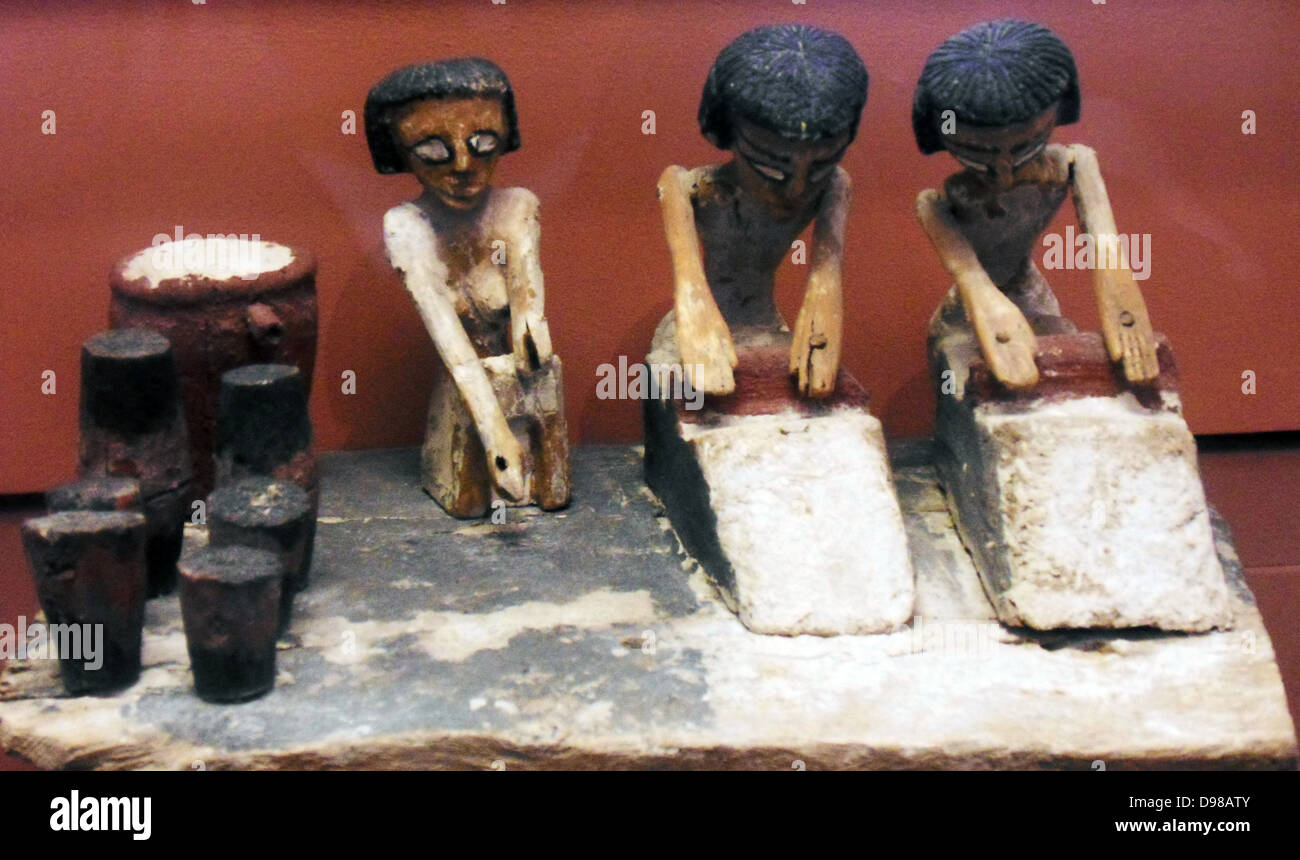 Scene in a bakery in ancient Egypt, Middle Kingdom, 2033-1710 BC Painted wood Stock Photohttps://www.alamy.com/image-license-details/?v=1https://www.alamy.com/stock-photo-scene-in-a-bakery-in-ancient-egypt-middle-kingdom-2033-1710-bc-painted-57347163.html
Scene in a bakery in ancient Egypt, Middle Kingdom, 2033-1710 BC Painted wood Stock Photohttps://www.alamy.com/image-license-details/?v=1https://www.alamy.com/stock-photo-scene-in-a-bakery-in-ancient-egypt-middle-kingdom-2033-1710-bc-painted-57347163.htmlRMD98ATY–Scene in a bakery in ancient Egypt, Middle Kingdom, 2033-1710 BC Painted wood
 Cloaked Official Middle Kingdom, early Dynasty 13, circa 1759-1675 B.C.E. Provenance not known. Red quartzite. Brooklyn Museum, NYC. The Twelfth and early Thirteenth Dynasties comprised one of the most creative artistic epochs in Egyptian history. Stock Photohttps://www.alamy.com/image-license-details/?v=1https://www.alamy.com/cloaked-official-middle-kingdom-early-dynasty-13-circa-1759-1675-bce-provenance-not-known-red-quartzite-brooklyn-museum-nyc-the-twelfth-and-early-thirteenth-dynasties-comprised-one-of-the-most-creative-artistic-epochs-in-egyptian-history-image561452894.html
Cloaked Official Middle Kingdom, early Dynasty 13, circa 1759-1675 B.C.E. Provenance not known. Red quartzite. Brooklyn Museum, NYC. The Twelfth and early Thirteenth Dynasties comprised one of the most creative artistic epochs in Egyptian history. Stock Photohttps://www.alamy.com/image-license-details/?v=1https://www.alamy.com/cloaked-official-middle-kingdom-early-dynasty-13-circa-1759-1675-bce-provenance-not-known-red-quartzite-brooklyn-museum-nyc-the-twelfth-and-early-thirteenth-dynasties-comprised-one-of-the-most-creative-artistic-epochs-in-egyptian-history-image561452894.htmlRM2RHCAW2–Cloaked Official Middle Kingdom, early Dynasty 13, circa 1759-1675 B.C.E. Provenance not known. Red quartzite. Brooklyn Museum, NYC. The Twelfth and early Thirteenth Dynasties comprised one of the most creative artistic epochs in Egyptian history.
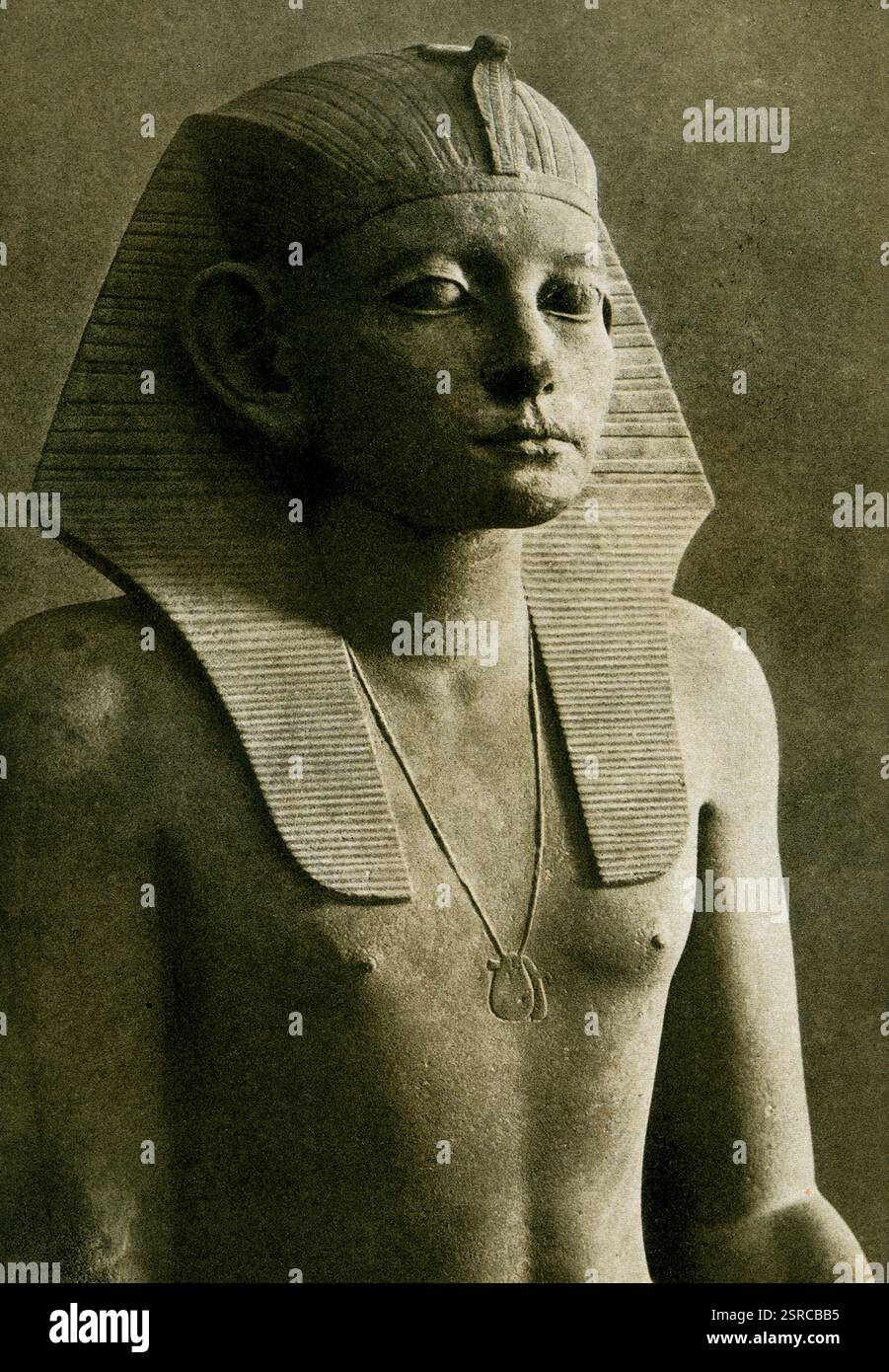 Hawara. It was taken to the Cairo Museum. Amenemhat (III) Nimaatre (1807/06-1798/97 BC was a king of the Twelfth Dynasty. He reigned about 45 years and is famous as builder of the mortuary complex of the king at Hawara, at the entrance to the Fayum, probably the 'Labyrinth' that so impressed ancient Greek authors Stock Photohttps://www.alamy.com/image-license-details/?v=1https://www.alamy.com/hawara-it-was-taken-to-the-cairo-museum-amenemhat-iii-nimaatre-180706-179897-bc-was-a-king-of-the-twelfth-dynasty-he-reigned-about-45-years-and-is-famous-as-builder-of-the-mortuary-complex-of-the-king-at-hawara-at-the-entrance-to-the-fayum-probably-the-labyrinth-that-so-impressed-ancient-greek-authors-image651193065.html
Hawara. It was taken to the Cairo Museum. Amenemhat (III) Nimaatre (1807/06-1798/97 BC was a king of the Twelfth Dynasty. He reigned about 45 years and is famous as builder of the mortuary complex of the king at Hawara, at the entrance to the Fayum, probably the 'Labyrinth' that so impressed ancient Greek authors Stock Photohttps://www.alamy.com/image-license-details/?v=1https://www.alamy.com/hawara-it-was-taken-to-the-cairo-museum-amenemhat-iii-nimaatre-180706-179897-bc-was-a-king-of-the-twelfth-dynasty-he-reigned-about-45-years-and-is-famous-as-builder-of-the-mortuary-complex-of-the-king-at-hawara-at-the-entrance-to-the-fayum-probably-the-labyrinth-that-so-impressed-ancient-greek-authors-image651193065.htmlRF2SRCBB5–Hawara. It was taken to the Cairo Museum. Amenemhat (III) Nimaatre (1807/06-1798/97 BC was a king of the Twelfth Dynasty. He reigned about 45 years and is famous as builder of the mortuary complex of the king at Hawara, at the entrance to the Fayum, probably the 'Labyrinth' that so impressed ancient Greek authors
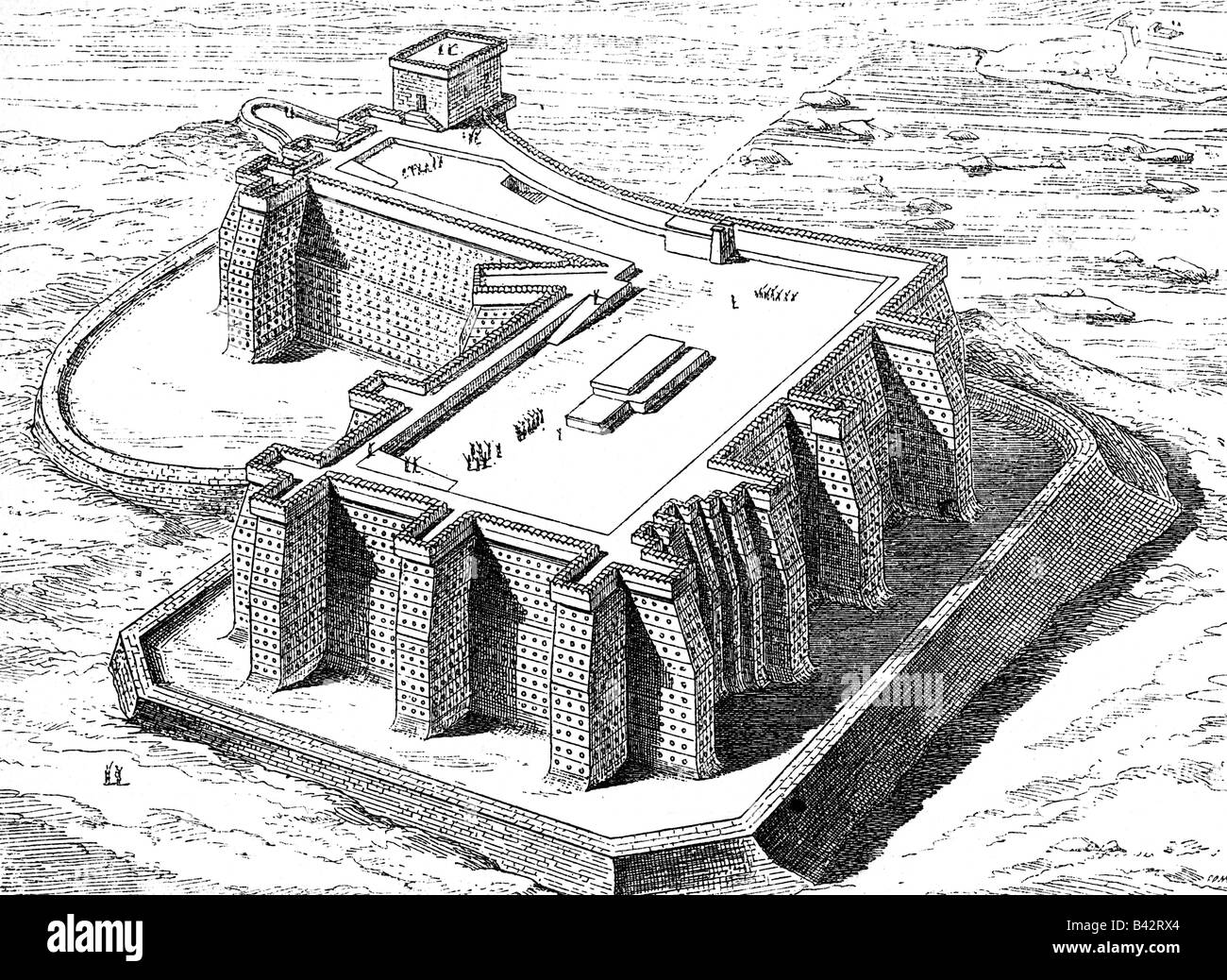 geography / travel, Egypt, architecture, fortress Semna in Nubia, Middle Kingdom (circa 1648 - 1550 BC), recosntruction by Charles Chipiez, 19th century, military, border, ancient world, antiquity, Africa, historic, historical, ancient world, people, Stock Photohttps://www.alamy.com/image-license-details/?v=1https://www.alamy.com/stock-photo-geography-travel-egypt-architecture-fortress-semna-in-nubia-middle-19731660.html
geography / travel, Egypt, architecture, fortress Semna in Nubia, Middle Kingdom (circa 1648 - 1550 BC), recosntruction by Charles Chipiez, 19th century, military, border, ancient world, antiquity, Africa, historic, historical, ancient world, people, Stock Photohttps://www.alamy.com/image-license-details/?v=1https://www.alamy.com/stock-photo-geography-travel-egypt-architecture-fortress-semna-in-nubia-middle-19731660.htmlRMB42RX4–geography / travel, Egypt, architecture, fortress Semna in Nubia, Middle Kingdom (circa 1648 - 1550 BC), recosntruction by Charles Chipiez, 19th century, military, border, ancient world, antiquity, Africa, historic, historical, ancient world, people,
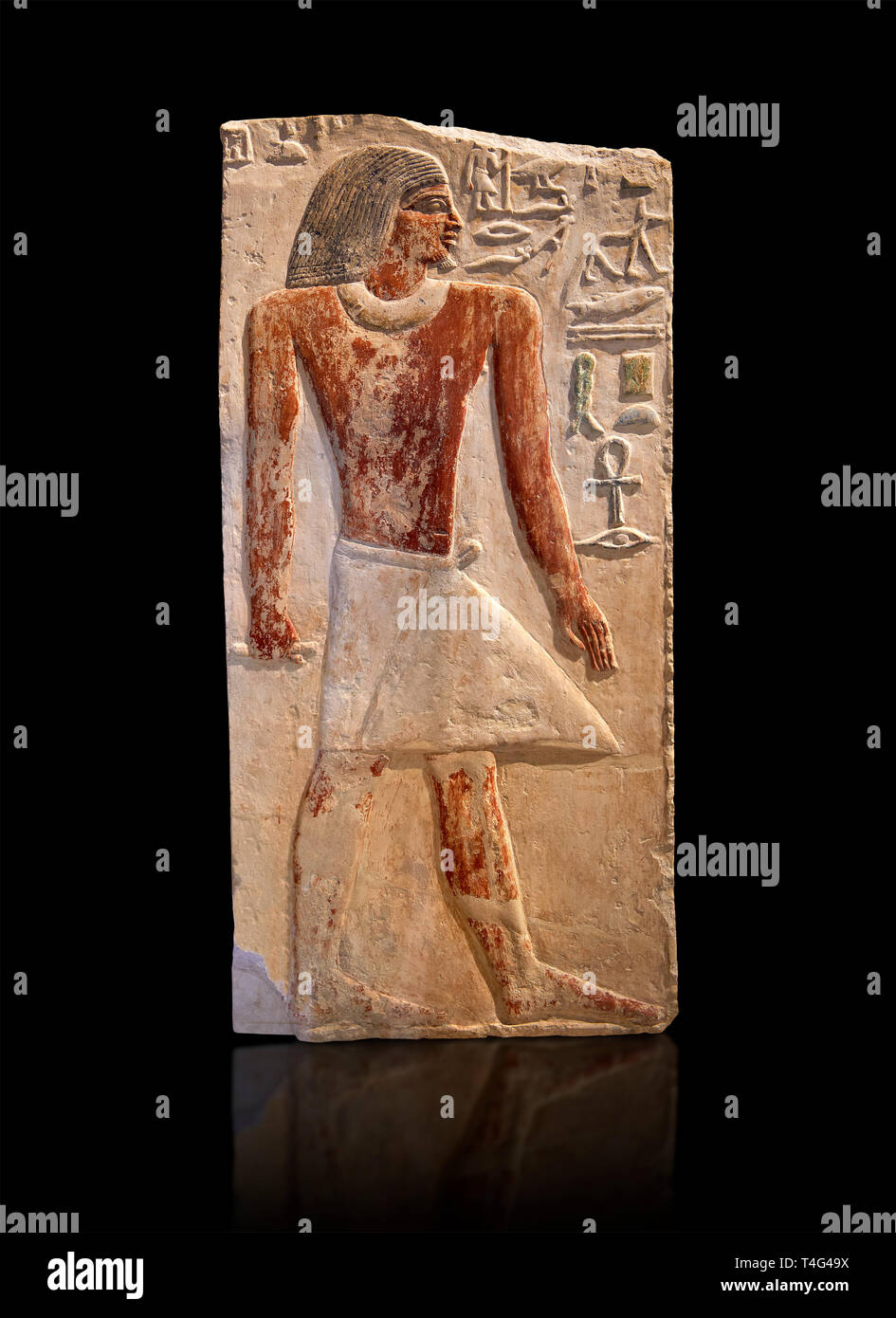 Ancient Egyptian tomb relief sculpture depicting the scribe and judge Ankhirptah. Middle Kingdom Egypt, 2170 BC. Neues Museum Berlin Cat No: AM 7337 Stock Photohttps://www.alamy.com/image-license-details/?v=1https://www.alamy.com/ancient-egyptian-tomb-relief-sculpture-depicting-the-scribe-and-judge-ankhirptah-middle-kingdom-egypt-2170-bc-neues-museum-berlin-cat-no-am-7337-image243758422.html
Ancient Egyptian tomb relief sculpture depicting the scribe and judge Ankhirptah. Middle Kingdom Egypt, 2170 BC. Neues Museum Berlin Cat No: AM 7337 Stock Photohttps://www.alamy.com/image-license-details/?v=1https://www.alamy.com/ancient-egyptian-tomb-relief-sculpture-depicting-the-scribe-and-judge-ankhirptah-middle-kingdom-egypt-2170-bc-neues-museum-berlin-cat-no-am-7337-image243758422.htmlRFT4G49X–Ancient Egyptian tomb relief sculpture depicting the scribe and judge Ankhirptah. Middle Kingdom Egypt, 2170 BC. Neues Museum Berlin Cat No: AM 7337
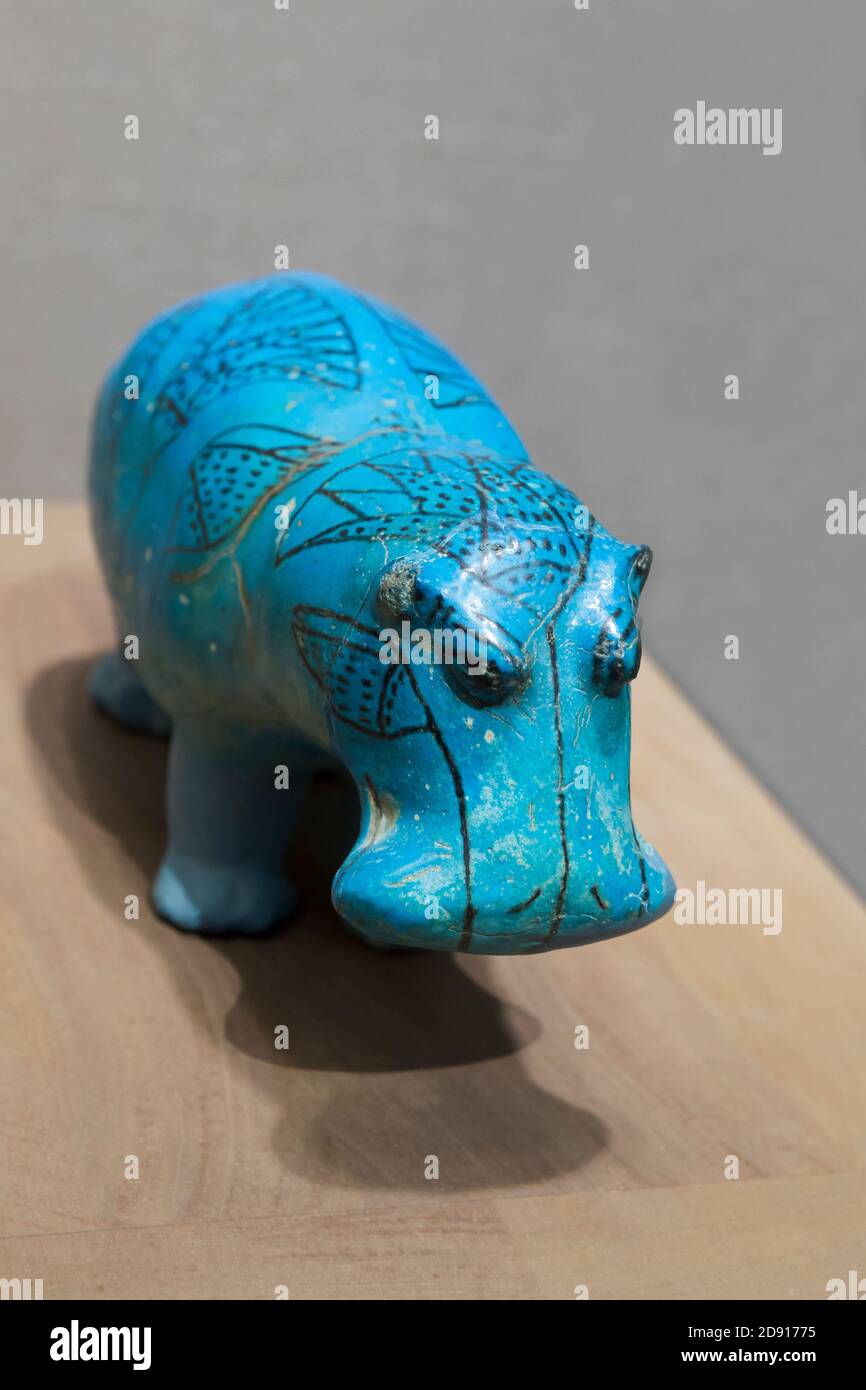 William, faience hippopotamus, Middle Kingdom of Egypt, tomb chapel of The Steward Senbi, Meir, Upper Egypt, circa 1961–1878 B.C, Metropolitan Museu Stock Photohttps://www.alamy.com/image-license-details/?v=1https://www.alamy.com/william-faience-hippopotamus-middle-kingdom-of-egypt-tomb-chapel-of-the-steward-senbi-meir-upper-egypt-circa-19611878-bc-metropolitan-museu-image384187641.html
William, faience hippopotamus, Middle Kingdom of Egypt, tomb chapel of The Steward Senbi, Meir, Upper Egypt, circa 1961–1878 B.C, Metropolitan Museu Stock Photohttps://www.alamy.com/image-license-details/?v=1https://www.alamy.com/william-faience-hippopotamus-middle-kingdom-of-egypt-tomb-chapel-of-the-steward-senbi-meir-upper-egypt-circa-19611878-bc-metropolitan-museu-image384187641.htmlRM2D91775–William, faience hippopotamus, Middle Kingdom of Egypt, tomb chapel of The Steward Senbi, Meir, Upper Egypt, circa 1961–1878 B.C, Metropolitan Museu
 Ancient Egypt, rock cut tomb at Beni-Hassan, cemetery with Middle Kingdom burials Stock Photohttps://www.alamy.com/image-license-details/?v=1https://www.alamy.com/ancient-egypt-rock-cut-tomb-at-beni-hassan-cemetery-with-middle-kingdom-burials-image446373792.html
Ancient Egypt, rock cut tomb at Beni-Hassan, cemetery with Middle Kingdom burials Stock Photohttps://www.alamy.com/image-license-details/?v=1https://www.alamy.com/ancient-egypt-rock-cut-tomb-at-beni-hassan-cemetery-with-middle-kingdom-burials-image446373792.htmlRM2GX6294–Ancient Egypt, rock cut tomb at Beni-Hassan, cemetery with Middle Kingdom burials
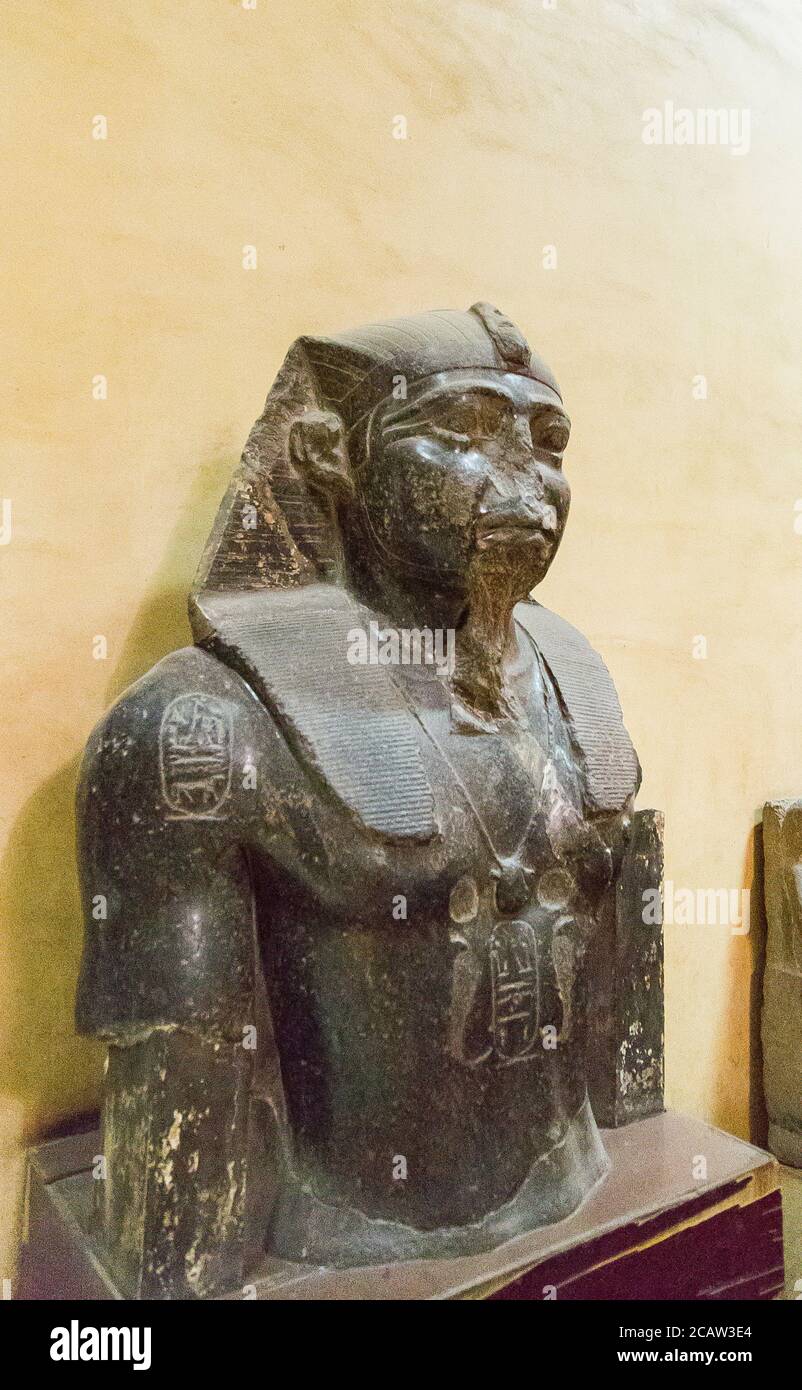 Egypt, Cairo, Egyptian Museum, statue of the Middle Kingdom (Dynasty 12), usurped by Merenptah (New Kingdom - Dynasty 19). Stock Photohttps://www.alamy.com/image-license-details/?v=1https://www.alamy.com/egypt-cairo-egyptian-museum-statue-of-the-middle-kingdom-dynasty-12-usurped-by-merenptah-new-kingdom-dynasty-19-image368115836.html
Egypt, Cairo, Egyptian Museum, statue of the Middle Kingdom (Dynasty 12), usurped by Merenptah (New Kingdom - Dynasty 19). Stock Photohttps://www.alamy.com/image-license-details/?v=1https://www.alamy.com/egypt-cairo-egyptian-museum-statue-of-the-middle-kingdom-dynasty-12-usurped-by-merenptah-new-kingdom-dynasty-19-image368115836.htmlRM2CAW3E4–Egypt, Cairo, Egyptian Museum, statue of the Middle Kingdom (Dynasty 12), usurped by Merenptah (New Kingdom - Dynasty 19).
 The rock tombs of Beni Hassan between Minya and Mallawi, Middle Egypt Stock Photohttps://www.alamy.com/image-license-details/?v=1https://www.alamy.com/stock-photo-the-rock-tombs-of-beni-hassan-between-minya-and-mallawi-middle-egypt-89484697.html
The rock tombs of Beni Hassan between Minya and Mallawi, Middle Egypt Stock Photohttps://www.alamy.com/image-license-details/?v=1https://www.alamy.com/stock-photo-the-rock-tombs-of-beni-hassan-between-minya-and-mallawi-middle-egypt-89484697.htmlRFF5GAJ1–The rock tombs of Beni Hassan between Minya and Mallawi, Middle Egypt
 A frieze in the precinct of Amun Re Temple at the Karnak temple complex Luxor Egypt Stock Photohttps://www.alamy.com/image-license-details/?v=1https://www.alamy.com/stock-photo-a-frieze-in-the-precinct-of-amun-re-temple-at-the-karnak-temple-complex-55190786.html
A frieze in the precinct of Amun Re Temple at the Karnak temple complex Luxor Egypt Stock Photohttps://www.alamy.com/image-license-details/?v=1https://www.alamy.com/stock-photo-a-frieze-in-the-precinct-of-amun-re-temple-at-the-karnak-temple-complex-55190786.htmlRMD5P4BE–A frieze in the precinct of Amun Re Temple at the Karnak temple complex Luxor Egypt
 Inspired by The Wilbour Papyrus, Papyrus, ink, Middle Egypt, Egypt, ca. 1147 B.C.E., Dynasty 20, New Kingdom, Glass: 13 x 18 1/8 in., 33 x 46 cm, Reimagined by Artotop. Classic art reinvented with a modern twist. Design of warm cheerful glowing of brightness and light ray radiance. Photography inspired by surrealism and futurism, embracing dynamic energy of modern technology, movement, speed and revolutionize culture Stock Photohttps://www.alamy.com/image-license-details/?v=1https://www.alamy.com/inspired-by-the-wilbour-papyrus-papyrus-ink-middle-egypt-egypt-ca-1147-bce-dynasty-20-new-kingdom-glass-13-x-18-18-in-33-x-46-cm-reimagined-by-artotop-classic-art-reinvented-with-a-modern-twist-design-of-warm-cheerful-glowing-of-brightness-and-light-ray-radiance-photography-inspired-by-surrealism-and-futurism-embracing-dynamic-energy-of-modern-technology-movement-speed-and-revolutionize-culture-image459264446.html
Inspired by The Wilbour Papyrus, Papyrus, ink, Middle Egypt, Egypt, ca. 1147 B.C.E., Dynasty 20, New Kingdom, Glass: 13 x 18 1/8 in., 33 x 46 cm, Reimagined by Artotop. Classic art reinvented with a modern twist. Design of warm cheerful glowing of brightness and light ray radiance. Photography inspired by surrealism and futurism, embracing dynamic energy of modern technology, movement, speed and revolutionize culture Stock Photohttps://www.alamy.com/image-license-details/?v=1https://www.alamy.com/inspired-by-the-wilbour-papyrus-papyrus-ink-middle-egypt-egypt-ca-1147-bce-dynasty-20-new-kingdom-glass-13-x-18-18-in-33-x-46-cm-reimagined-by-artotop-classic-art-reinvented-with-a-modern-twist-design-of-warm-cheerful-glowing-of-brightness-and-light-ray-radiance-photography-inspired-by-surrealism-and-futurism-embracing-dynamic-energy-of-modern-technology-movement-speed-and-revolutionize-culture-image459264446.htmlRF2HK58DJ–Inspired by The Wilbour Papyrus, Papyrus, ink, Middle Egypt, Egypt, ca. 1147 B.C.E., Dynasty 20, New Kingdom, Glass: 13 x 18 1/8 in., 33 x 46 cm, Reimagined by Artotop. Classic art reinvented with a modern twist. Design of warm cheerful glowing of brightness and light ray radiance. Photography inspired by surrealism and futurism, embracing dynamic energy of modern technology, movement, speed and revolutionize culture
 Model of with oarsmen. Wood. Middle Kingdom. Egypt. Egyptian Museum of Turin. Italy. Stock Photohttps://www.alamy.com/image-license-details/?v=1https://www.alamy.com/model-of-with-oarsmen-wood-middle-kingdom-egypt-egyptian-museum-of-turin-italy-image640449452.html
Model of with oarsmen. Wood. Middle Kingdom. Egypt. Egyptian Museum of Turin. Italy. Stock Photohttps://www.alamy.com/image-license-details/?v=1https://www.alamy.com/model-of-with-oarsmen-wood-middle-kingdom-egypt-egyptian-museum-of-turin-italy-image640449452.htmlRM2S5XYPM–Model of with oarsmen. Wood. Middle Kingdom. Egypt. Egyptian Museum of Turin. Italy.
 Family stela of the chief scribe Horhernakht, son of Khety , Stone / limestone, 69 x 45 x 9 cm, 1850–1759 BC, 12th, Twelfth ,Dynasty, Middle Kingdom, Egypt (Museo Egizio di Torino Italy) Stock Photohttps://www.alamy.com/image-license-details/?v=1https://www.alamy.com/family-stela-of-the-chief-scribe-horhernakht-son-of-khety-stone-limestone-69-x-45-x-9-cm-18501759-bc-12th-twelfth-dynasty-middle-kingdom-egypt-museo-egizio-di-torino-italy-image459113119.html
Family stela of the chief scribe Horhernakht, son of Khety , Stone / limestone, 69 x 45 x 9 cm, 1850–1759 BC, 12th, Twelfth ,Dynasty, Middle Kingdom, Egypt (Museo Egizio di Torino Italy) Stock Photohttps://www.alamy.com/image-license-details/?v=1https://www.alamy.com/family-stela-of-the-chief-scribe-horhernakht-son-of-khety-stone-limestone-69-x-45-x-9-cm-18501759-bc-12th-twelfth-dynasty-middle-kingdom-egypt-museo-egizio-di-torino-italy-image459113119.htmlRM2HJXBD3–Family stela of the chief scribe Horhernakht, son of Khety , Stone / limestone, 69 x 45 x 9 cm, 1850–1759 BC, 12th, Twelfth ,Dynasty, Middle Kingdom, Egypt (Museo Egizio di Torino Italy)
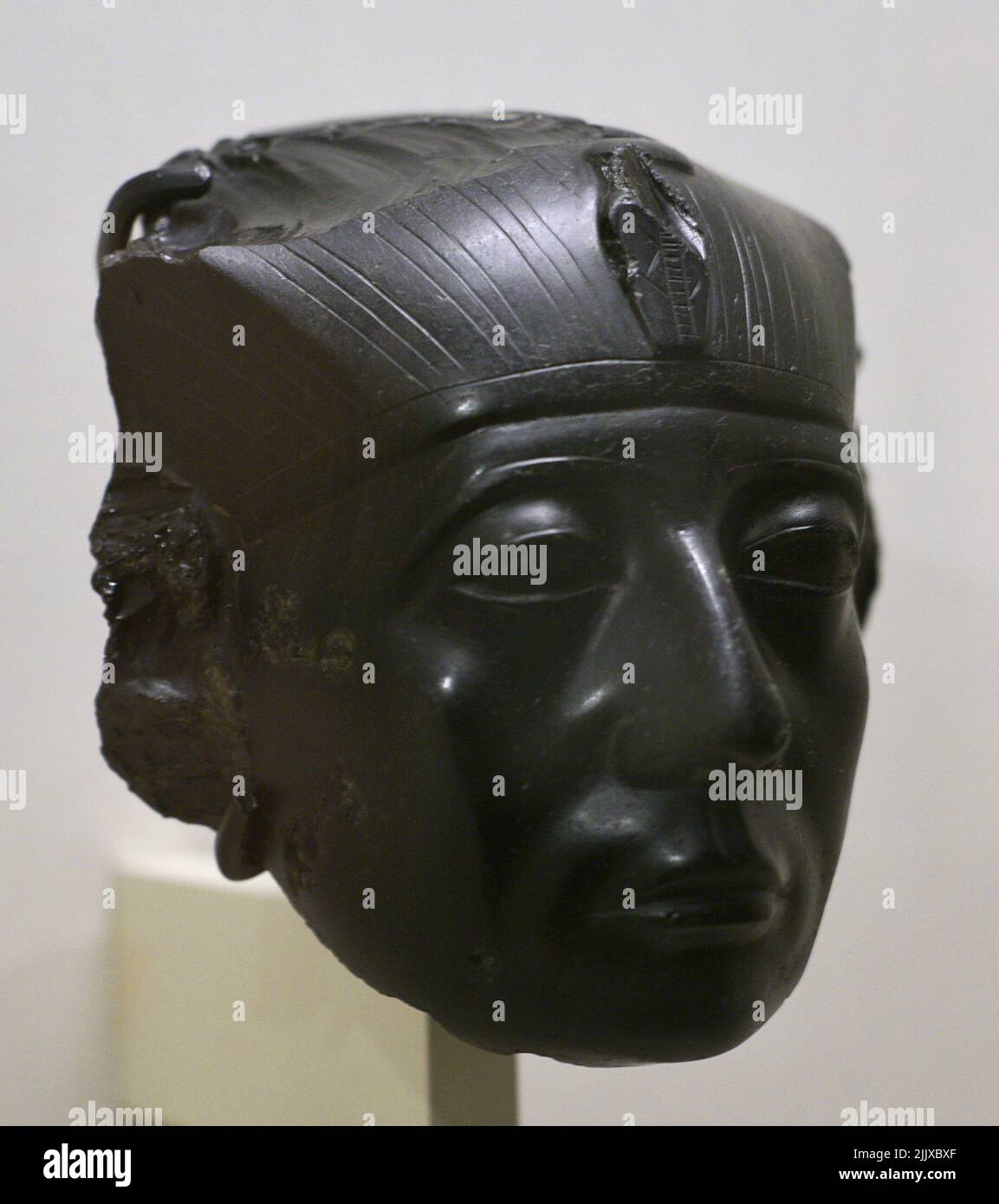 Egypt. Head of King Senwosret III. Middle Kingdom. 12th dynasty, ca. 1860 BC. Obsidian. Calouste Gulbenkian Museum. Lisbon, Portugal. Stock Photohttps://www.alamy.com/image-license-details/?v=1https://www.alamy.com/egypt-head-of-king-senwosret-iii-middle-kingdom-12th-dynasty-ca-1860-bc-obsidian-calouste-gulbenkian-museum-lisbon-portugal-image476323863.html
Egypt. Head of King Senwosret III. Middle Kingdom. 12th dynasty, ca. 1860 BC. Obsidian. Calouste Gulbenkian Museum. Lisbon, Portugal. Stock Photohttps://www.alamy.com/image-license-details/?v=1https://www.alamy.com/egypt-head-of-king-senwosret-iii-middle-kingdom-12th-dynasty-ca-1860-bc-obsidian-calouste-gulbenkian-museum-lisbon-portugal-image476323863.htmlRM2JJXBXF–Egypt. Head of King Senwosret III. Middle Kingdom. 12th dynasty, ca. 1860 BC. Obsidian. Calouste Gulbenkian Museum. Lisbon, Portugal.
 Ancient Egypt. Fall of Middle Kingdom: the Hyksos. Fragment of a sitting colossus of Khian, in granite. (Found at Bubastis). 1912 Stock Photohttps://www.alamy.com/image-license-details/?v=1https://www.alamy.com/ancient-egypt-fall-of-middle-kingdom-the-hyksos-fragment-of-a-sitting-colossus-of-khian-in-granite-found-at-bubastis-1912-image433344335.html
Ancient Egypt. Fall of Middle Kingdom: the Hyksos. Fragment of a sitting colossus of Khian, in granite. (Found at Bubastis). 1912 Stock Photohttps://www.alamy.com/image-license-details/?v=1https://www.alamy.com/ancient-egypt-fall-of-middle-kingdom-the-hyksos-fragment-of-a-sitting-colossus-of-khian-in-granite-found-at-bubastis-1912-image433344335.htmlRM2G50F3B–Ancient Egypt. Fall of Middle Kingdom: the Hyksos. Fragment of a sitting colossus of Khian, in granite. (Found at Bubastis). 1912
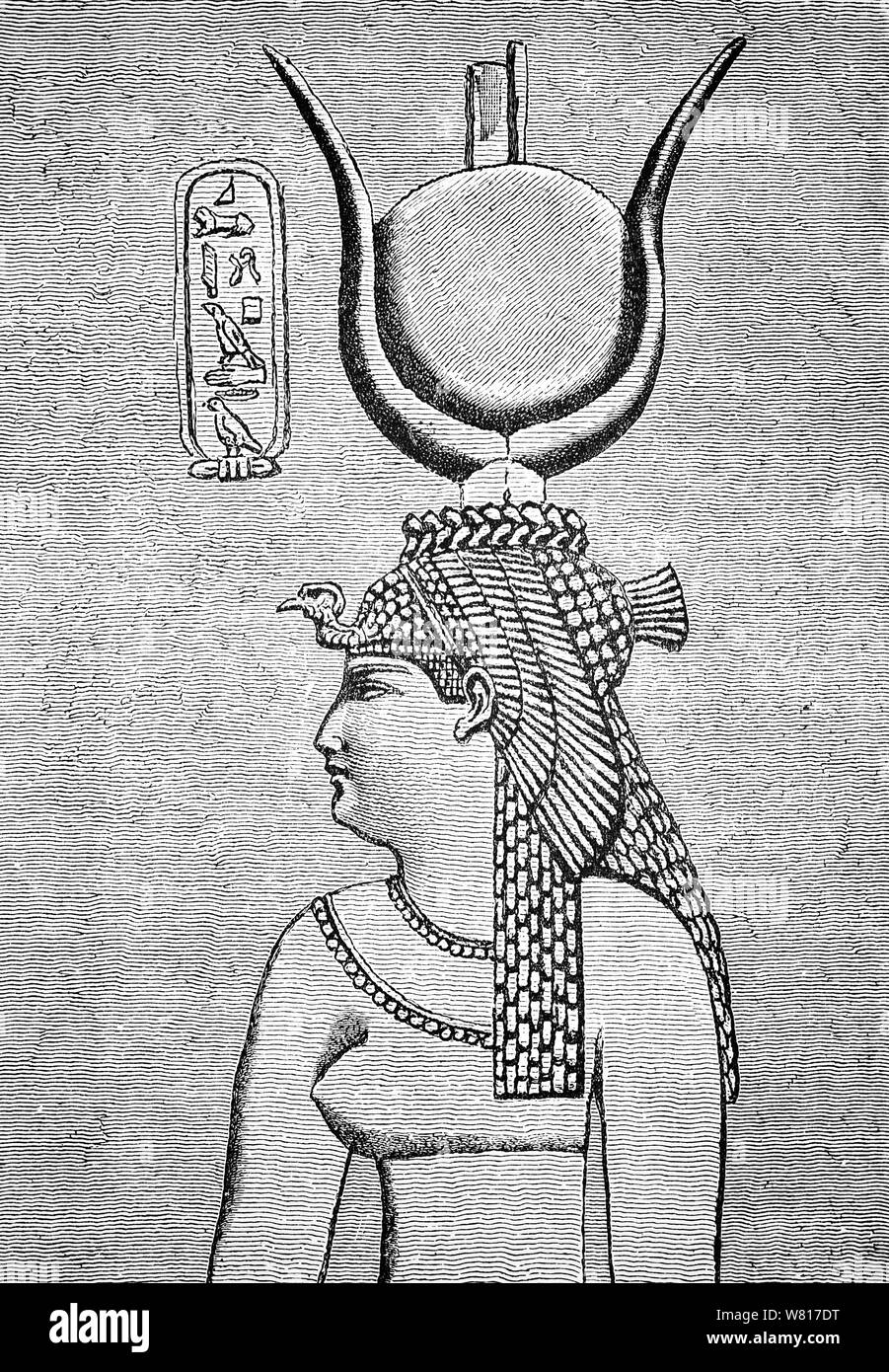 An Egyptian bas-relief of Cleopatra VII Philopator (69 – 30 BCE), the last active ruler of the Ptolemaic Kingdom of Egypt. As a member of the Ptolemaic dynasty, she was a descendant of its founder Ptolemy I Soter, a Macedonian Greek general and companion of Alexander the Great. After the death of Cleopatra, Egypt became a province of the Roman Empire, marking the end of the Hellenistic period that had lasted since the reign of Alexander (336–323 BC). Her native language was Koine Greek and she was the first Ptolemaic ruler to learn the Egyptian language. Stock Photohttps://www.alamy.com/image-license-details/?v=1https://www.alamy.com/an-egyptian-bas-relief-of-cleopatra-vii-philopator-69-30-bce-the-last-active-ruler-of-the-ptolemaic-kingdom-of-egypt-as-a-member-of-the-ptolemaic-dynasty-she-was-a-descendant-of-its-founder-ptolemy-i-soter-a-macedonian-greek-general-and-companion-of-alexander-the-great-after-the-death-of-cleopatra-egypt-became-a-province-of-the-roman-empire-marking-the-end-of-the-hellenistic-period-that-had-lasted-since-the-reign-of-alexander-336323-bc-her-native-language-was-koine-greek-and-she-was-the-first-ptolemaic-ruler-to-learn-the-egyptian-language-image263100596.html
An Egyptian bas-relief of Cleopatra VII Philopator (69 – 30 BCE), the last active ruler of the Ptolemaic Kingdom of Egypt. As a member of the Ptolemaic dynasty, she was a descendant of its founder Ptolemy I Soter, a Macedonian Greek general and companion of Alexander the Great. After the death of Cleopatra, Egypt became a province of the Roman Empire, marking the end of the Hellenistic period that had lasted since the reign of Alexander (336–323 BC). Her native language was Koine Greek and she was the first Ptolemaic ruler to learn the Egyptian language. Stock Photohttps://www.alamy.com/image-license-details/?v=1https://www.alamy.com/an-egyptian-bas-relief-of-cleopatra-vii-philopator-69-30-bce-the-last-active-ruler-of-the-ptolemaic-kingdom-of-egypt-as-a-member-of-the-ptolemaic-dynasty-she-was-a-descendant-of-its-founder-ptolemy-i-soter-a-macedonian-greek-general-and-companion-of-alexander-the-great-after-the-death-of-cleopatra-egypt-became-a-province-of-the-roman-empire-marking-the-end-of-the-hellenistic-period-that-had-lasted-since-the-reign-of-alexander-336323-bc-her-native-language-was-koine-greek-and-she-was-the-first-ptolemaic-ruler-to-learn-the-egyptian-language-image263100596.htmlRMW817DT–An Egyptian bas-relief of Cleopatra VII Philopator (69 – 30 BCE), the last active ruler of the Ptolemaic Kingdom of Egypt. As a member of the Ptolemaic dynasty, she was a descendant of its founder Ptolemy I Soter, a Macedonian Greek general and companion of Alexander the Great. After the death of Cleopatra, Egypt became a province of the Roman Empire, marking the end of the Hellenistic period that had lasted since the reign of Alexander (336–323 BC). Her native language was Koine Greek and she was the first Ptolemaic ruler to learn the Egyptian language.
 Funerary stele on limestone, Edfu, Middle Kingdom, Museum, The Faiyum, Egypt, Africa Stock Photohttps://www.alamy.com/image-license-details/?v=1https://www.alamy.com/stock-photo-funerary-stele-on-limestone-edfu-middle-kingdom-museum-the-faiyum-95465673.html
Funerary stele on limestone, Edfu, Middle Kingdom, Museum, The Faiyum, Egypt, Africa Stock Photohttps://www.alamy.com/image-license-details/?v=1https://www.alamy.com/stock-photo-funerary-stele-on-limestone-edfu-middle-kingdom-museum-the-faiyum-95465673.htmlRMFF8RC9–Funerary stele on limestone, Edfu, Middle Kingdom, Museum, The Faiyum, Egypt, Africa
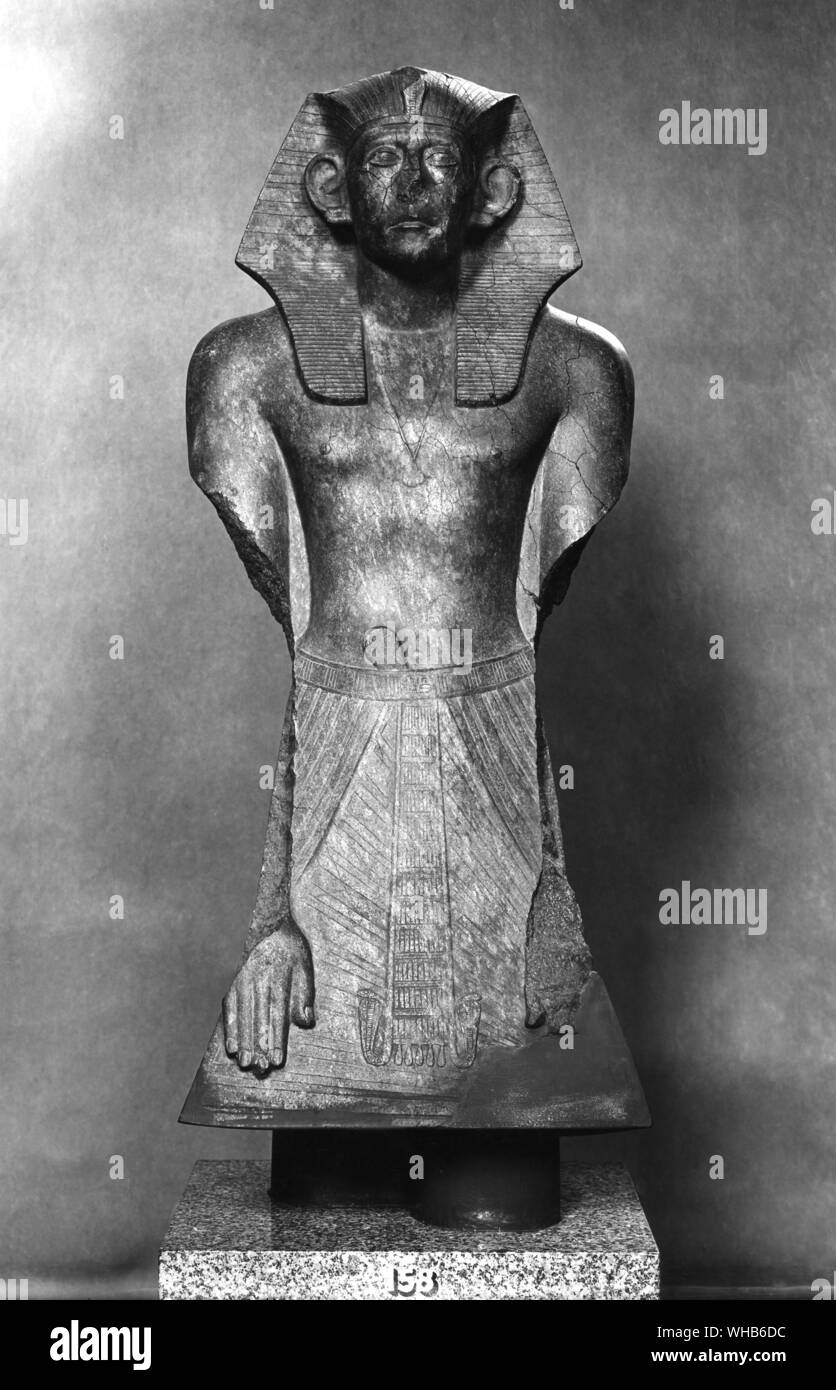 Statue of Senusret III Middle Kingdom XII Dynasty (1878-1843 BC ?) - Khakhaure Senusret III (also written as Senwosret III or Sesostris III) was a pharaoh of Egypt. He ruled from 1878 BC to 1839 BC, and was the fifth monarch of the Twelfth Dynasty of the Middle Kingdom. He was a Great Pharaoh of the twelfth Dynasty and is supposed to be the most powerful Egyptian ruler of this time. For this, he is regarded as one of the sources for the legend about Sesostris.. Stock Photohttps://www.alamy.com/image-license-details/?v=1https://www.alamy.com/statue-of-senusret-iii-middle-kingdom-xii-dynasty-1878-1843-bc-khakhaure-senusret-iii-also-written-as-senwosret-iii-or-sesostris-iii-was-a-pharaoh-of-egypt-he-ruled-from-1878-bc-to-1839-bc-and-was-the-fifth-monarch-of-the-twelfth-dynasty-of-the-middle-kingdom-he-was-a-great-pharaoh-of-the-twelfth-dynasty-and-is-supposed-to-be-the-most-powerful-egyptian-ruler-of-this-time-for-this-he-is-regarded-as-one-of-the-sources-for-the-legend-about-sesostris-image268851224.html
Statue of Senusret III Middle Kingdom XII Dynasty (1878-1843 BC ?) - Khakhaure Senusret III (also written as Senwosret III or Sesostris III) was a pharaoh of Egypt. He ruled from 1878 BC to 1839 BC, and was the fifth monarch of the Twelfth Dynasty of the Middle Kingdom. He was a Great Pharaoh of the twelfth Dynasty and is supposed to be the most powerful Egyptian ruler of this time. For this, he is regarded as one of the sources for the legend about Sesostris.. Stock Photohttps://www.alamy.com/image-license-details/?v=1https://www.alamy.com/statue-of-senusret-iii-middle-kingdom-xii-dynasty-1878-1843-bc-khakhaure-senusret-iii-also-written-as-senwosret-iii-or-sesostris-iii-was-a-pharaoh-of-egypt-he-ruled-from-1878-bc-to-1839-bc-and-was-the-fifth-monarch-of-the-twelfth-dynasty-of-the-middle-kingdom-he-was-a-great-pharaoh-of-the-twelfth-dynasty-and-is-supposed-to-be-the-most-powerful-egyptian-ruler-of-this-time-for-this-he-is-regarded-as-one-of-the-sources-for-the-legend-about-sesostris-image268851224.htmlRMWHB6DC–Statue of Senusret III Middle Kingdom XII Dynasty (1878-1843 BC ?) - Khakhaure Senusret III (also written as Senwosret III or Sesostris III) was a pharaoh of Egypt. He ruled from 1878 BC to 1839 BC, and was the fifth monarch of the Twelfth Dynasty of the Middle Kingdom. He was a Great Pharaoh of the twelfth Dynasty and is supposed to be the most powerful Egyptian ruler of this time. For this, he is regarded as one of the sources for the legend about Sesostris..
 male, standing, small statue, wood, 23 cm, Middle Kingdom, Egypt Stock Photohttps://www.alamy.com/image-license-details/?v=1https://www.alamy.com/male-standing-small-statue-wood-23-cm-middle-kingdom-egypt-image344482553.html
male, standing, small statue, wood, 23 cm, Middle Kingdom, Egypt Stock Photohttps://www.alamy.com/image-license-details/?v=1https://www.alamy.com/male-standing-small-statue-wood-23-cm-middle-kingdom-egypt-image344482553.htmlRM2B0CF09–male, standing, small statue, wood, 23 cm, Middle Kingdom, Egypt
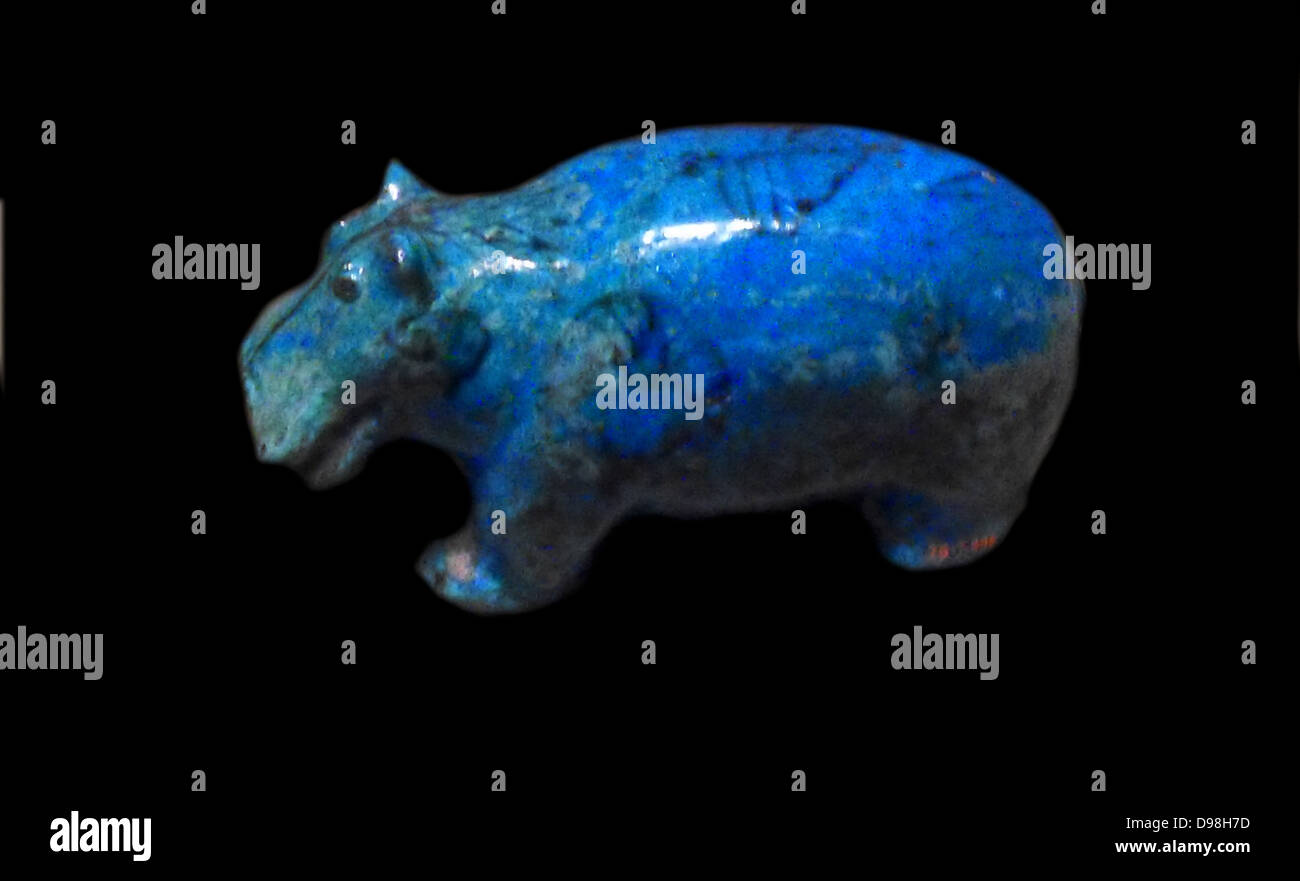 Faience Hippopotamus from Egypt. Middle Kingdom 12th Dynasty ca. 1981–1885 B.C.Tomb of Senbi, Burial 3, pit 1, Khashaba 1910 Stock Photohttps://www.alamy.com/image-license-details/?v=1https://www.alamy.com/stock-photo-faience-hippopotamus-from-egypt-middle-kingdom-12th-dynasty-ca-19811885-57352161.html
Faience Hippopotamus from Egypt. Middle Kingdom 12th Dynasty ca. 1981–1885 B.C.Tomb of Senbi, Burial 3, pit 1, Khashaba 1910 Stock Photohttps://www.alamy.com/image-license-details/?v=1https://www.alamy.com/stock-photo-faience-hippopotamus-from-egypt-middle-kingdom-12th-dynasty-ca-19811885-57352161.htmlRMD98H7D–Faience Hippopotamus from Egypt. Middle Kingdom 12th Dynasty ca. 1981–1885 B.C.Tomb of Senbi, Burial 3, pit 1, Khashaba 1910
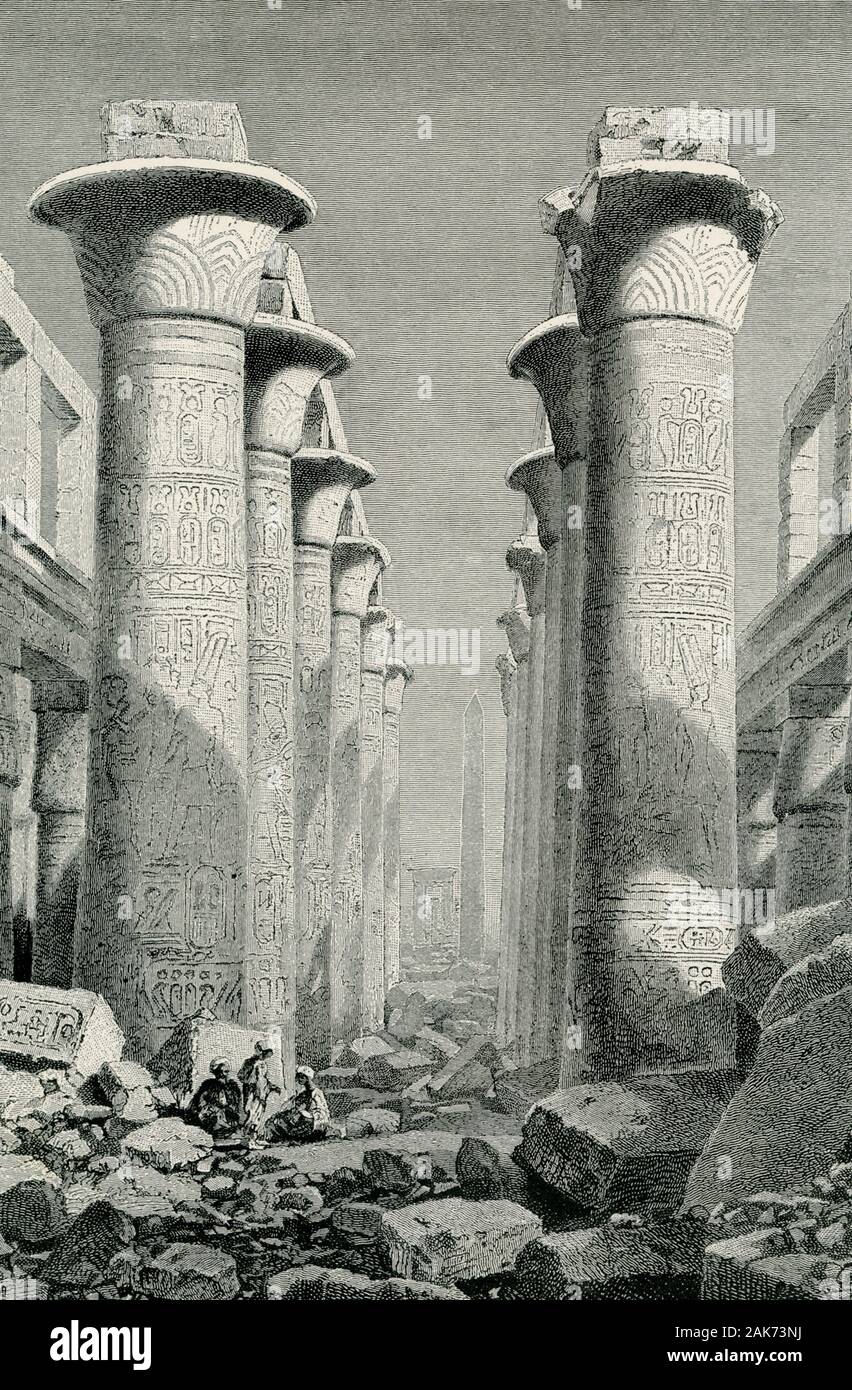 This illustration of the ruins of the Hall of Columns at Karnak dates to the early 1900s. The Great Hypostyle Hall Karnak is composed of 134 giant sandstone columns in the form of papyrus stalks. Twelve great columns in its central nave are 70-plus feet in height and are capped by huge open papyrus blossom capitals. The main east-west axis of the Hypostyle Hall is dominated by a double row of 12 giant columns. Stock Photohttps://www.alamy.com/image-license-details/?v=1https://www.alamy.com/this-illustration-of-the-ruins-of-the-hall-of-columns-at-karnak-dates-to-the-early-1900s-the-great-hypostyle-hall-karnak-is-composed-of-134-giant-sandstone-columns-in-the-form-of-papyrus-stalks-twelve-great-columns-in-its-central-nave-are-70-plus-feet-in-height-and-are-capped-by-huge-open-papyrus-blossom-capitals-the-main-east-west-axis-of-the-hypostyle-hall-is-dominated-by-a-double-row-of-12-giant-columns-image338832078.html
This illustration of the ruins of the Hall of Columns at Karnak dates to the early 1900s. The Great Hypostyle Hall Karnak is composed of 134 giant sandstone columns in the form of papyrus stalks. Twelve great columns in its central nave are 70-plus feet in height and are capped by huge open papyrus blossom capitals. The main east-west axis of the Hypostyle Hall is dominated by a double row of 12 giant columns. Stock Photohttps://www.alamy.com/image-license-details/?v=1https://www.alamy.com/this-illustration-of-the-ruins-of-the-hall-of-columns-at-karnak-dates-to-the-early-1900s-the-great-hypostyle-hall-karnak-is-composed-of-134-giant-sandstone-columns-in-the-form-of-papyrus-stalks-twelve-great-columns-in-its-central-nave-are-70-plus-feet-in-height-and-are-capped-by-huge-open-papyrus-blossom-capitals-the-main-east-west-axis-of-the-hypostyle-hall-is-dominated-by-a-double-row-of-12-giant-columns-image338832078.htmlRF2AK73NJ–This illustration of the ruins of the Hall of Columns at Karnak dates to the early 1900s. The Great Hypostyle Hall Karnak is composed of 134 giant sandstone columns in the form of papyrus stalks. Twelve great columns in its central nave are 70-plus feet in height and are capped by huge open papyrus blossom capitals. The main east-west axis of the Hypostyle Hall is dominated by a double row of 12 giant columns.
 gastronomy, eating, eating men, drawing, 19th century, after relief, Egypt, circa 2000 BC, people, eating, eat, fruit, fig, figs, bunch of grapes, bunches of grapes, grapes, grape, poultry, goose, geese, gander, meat, fish, drinking, drink, beer, beers, Middle Kingdom of Egypt, prehistory, prehistoric times, historic, historical, ancient world, Additional-Rights-Clearences-Not Available Stock Photohttps://www.alamy.com/image-license-details/?v=1https://www.alamy.com/stock-photo-gastronomy-eating-eating-men-drawing-19th-century-after-relief-egypt-58499172.html
gastronomy, eating, eating men, drawing, 19th century, after relief, Egypt, circa 2000 BC, people, eating, eat, fruit, fig, figs, bunch of grapes, bunches of grapes, grapes, grape, poultry, goose, geese, gander, meat, fish, drinking, drink, beer, beers, Middle Kingdom of Egypt, prehistory, prehistoric times, historic, historical, ancient world, Additional-Rights-Clearences-Not Available Stock Photohttps://www.alamy.com/image-license-details/?v=1https://www.alamy.com/stock-photo-gastronomy-eating-eating-men-drawing-19th-century-after-relief-egypt-58499172.htmlRMDB4T84–gastronomy, eating, eating men, drawing, 19th century, after relief, Egypt, circa 2000 BC, people, eating, eat, fruit, fig, figs, bunch of grapes, bunches of grapes, grapes, grape, poultry, goose, geese, gander, meat, fish, drinking, drink, beer, beers, Middle Kingdom of Egypt, prehistory, prehistoric times, historic, historical, ancient world, Additional-Rights-Clearences-Not Available
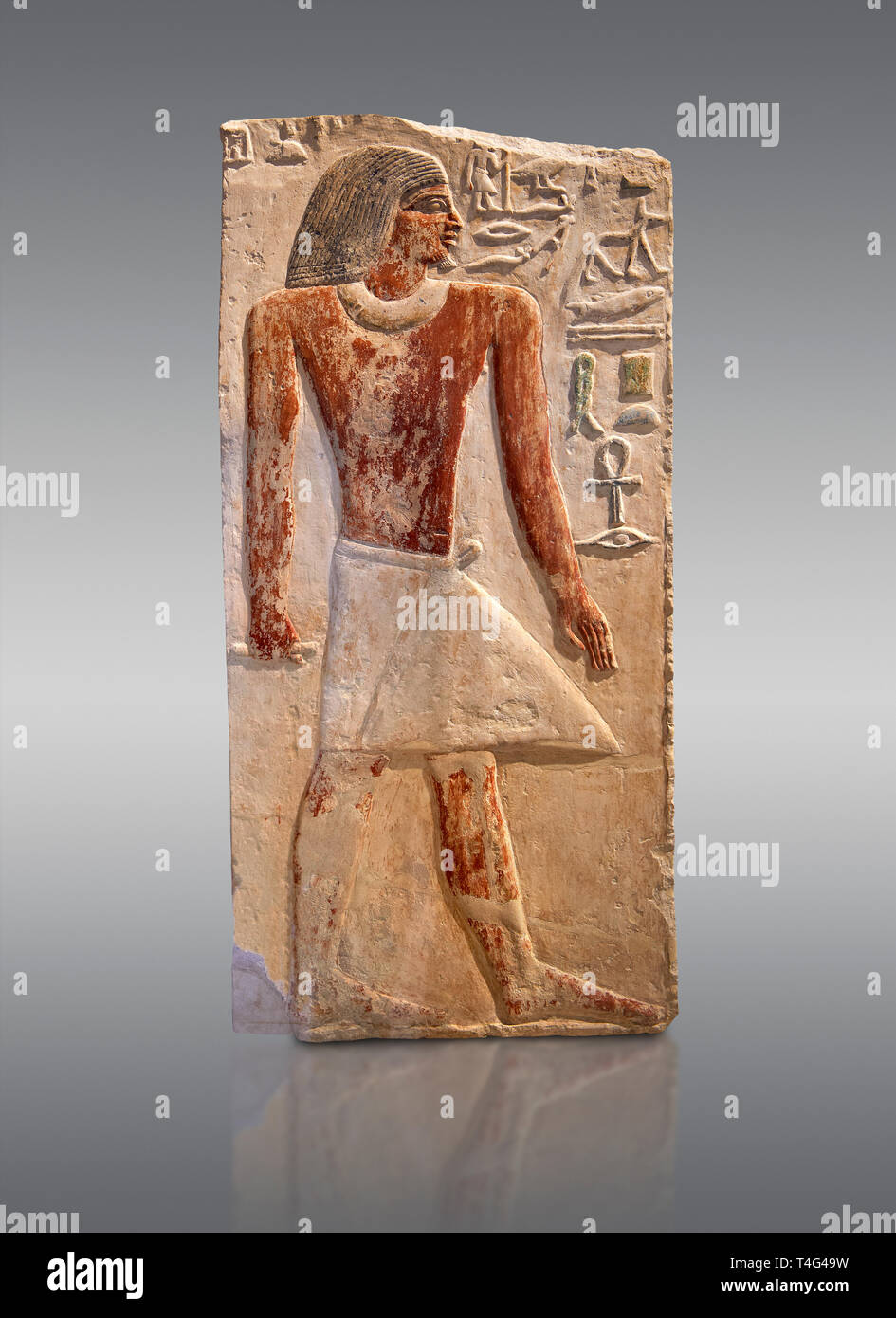 Ancient Egyptian tomb relief sculpture depicting the scribe and judge Ankhirptah. Middle Kingdom Egypt, 2170 BC. Neues Museum Berlin Cat No: AM 7337 Stock Photohttps://www.alamy.com/image-license-details/?v=1https://www.alamy.com/ancient-egyptian-tomb-relief-sculpture-depicting-the-scribe-and-judge-ankhirptah-middle-kingdom-egypt-2170-bc-neues-museum-berlin-cat-no-am-7337-image243758421.html
Ancient Egyptian tomb relief sculpture depicting the scribe and judge Ankhirptah. Middle Kingdom Egypt, 2170 BC. Neues Museum Berlin Cat No: AM 7337 Stock Photohttps://www.alamy.com/image-license-details/?v=1https://www.alamy.com/ancient-egyptian-tomb-relief-sculpture-depicting-the-scribe-and-judge-ankhirptah-middle-kingdom-egypt-2170-bc-neues-museum-berlin-cat-no-am-7337-image243758421.htmlRFT4G49W–Ancient Egyptian tomb relief sculpture depicting the scribe and judge Ankhirptah. Middle Kingdom Egypt, 2170 BC. Neues Museum Berlin Cat No: AM 7337
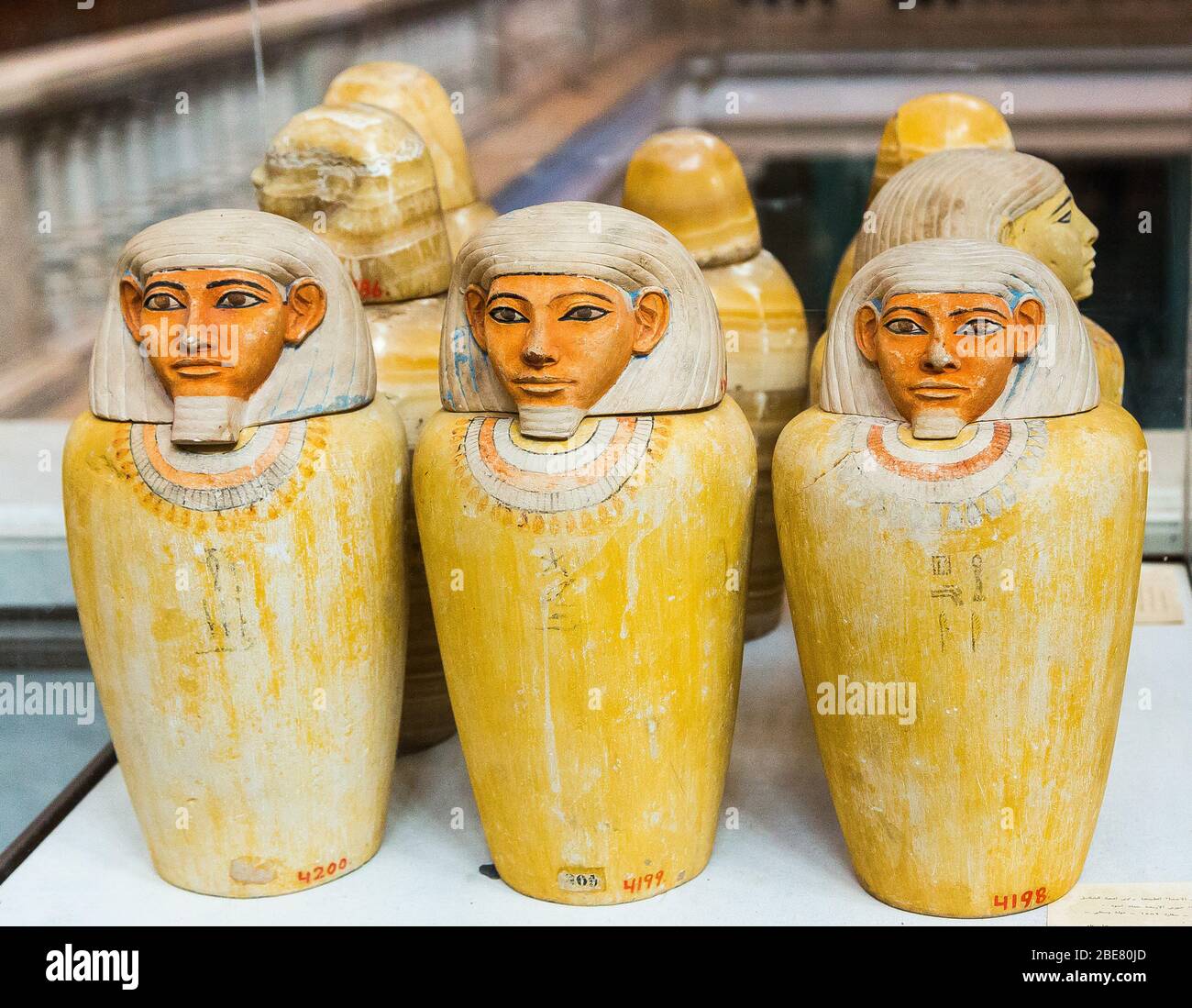 Egypt, Cairo, Egyptian Museum, 3 canopic jars, found in Saqqara, dating from the Middle Kingdom. The jars in limestone. Stock Photohttps://www.alamy.com/image-license-details/?v=1https://www.alamy.com/egypt-cairo-egyptian-museum-3-canopic-jars-found-in-saqqara-dating-from-the-middle-kingdom-the-jars-in-limestone-image352988677.html
Egypt, Cairo, Egyptian Museum, 3 canopic jars, found in Saqqara, dating from the Middle Kingdom. The jars in limestone. Stock Photohttps://www.alamy.com/image-license-details/?v=1https://www.alamy.com/egypt-cairo-egyptian-museum-3-canopic-jars-found-in-saqqara-dating-from-the-middle-kingdom-the-jars-in-limestone-image352988677.htmlRM2BE80JD–Egypt, Cairo, Egyptian Museum, 3 canopic jars, found in Saqqara, dating from the Middle Kingdom. The jars in limestone.
 The ruins of the enclosure walls and mound and modern village in background of Kom el Sultan at Abydos Middle Egypt Stock Photohttps://www.alamy.com/image-license-details/?v=1https://www.alamy.com/stock-photo-the-ruins-of-the-enclosure-walls-and-mound-and-modern-village-in-background-41820765.html
The ruins of the enclosure walls and mound and modern village in background of Kom el Sultan at Abydos Middle Egypt Stock Photohttps://www.alamy.com/image-license-details/?v=1https://www.alamy.com/stock-photo-the-ruins-of-the-enclosure-walls-and-mound-and-modern-village-in-background-41820765.htmlRFCC12PN–The ruins of the enclosure walls and mound and modern village in background of Kom el Sultan at Abydos Middle Egypt
 Inspired by The Wilbour Papyrus, Papyrus, ink, Middle Egypt, Egypt, ca. 1147 B.C.E., Dynasty 20, New Kingdom, Glass: 13 x 18 1/8 in., 33 x 46 cm, Reimagined by Artotop. Classic art reinvented with a modern twist. Design of warm cheerful glowing of brightness and light ray radiance. Photography inspired by surrealism and futurism, embracing dynamic energy of modern technology, movement, speed and revolutionize culture Stock Photohttps://www.alamy.com/image-license-details/?v=1https://www.alamy.com/inspired-by-the-wilbour-papyrus-papyrus-ink-middle-egypt-egypt-ca-1147-bce-dynasty-20-new-kingdom-glass-13-x-18-18-in-33-x-46-cm-reimagined-by-artotop-classic-art-reinvented-with-a-modern-twist-design-of-warm-cheerful-glowing-of-brightness-and-light-ray-radiance-photography-inspired-by-surrealism-and-futurism-embracing-dynamic-energy-of-modern-technology-movement-speed-and-revolutionize-culture-image459264442.html
Inspired by The Wilbour Papyrus, Papyrus, ink, Middle Egypt, Egypt, ca. 1147 B.C.E., Dynasty 20, New Kingdom, Glass: 13 x 18 1/8 in., 33 x 46 cm, Reimagined by Artotop. Classic art reinvented with a modern twist. Design of warm cheerful glowing of brightness and light ray radiance. Photography inspired by surrealism and futurism, embracing dynamic energy of modern technology, movement, speed and revolutionize culture Stock Photohttps://www.alamy.com/image-license-details/?v=1https://www.alamy.com/inspired-by-the-wilbour-papyrus-papyrus-ink-middle-egypt-egypt-ca-1147-bce-dynasty-20-new-kingdom-glass-13-x-18-18-in-33-x-46-cm-reimagined-by-artotop-classic-art-reinvented-with-a-modern-twist-design-of-warm-cheerful-glowing-of-brightness-and-light-ray-radiance-photography-inspired-by-surrealism-and-futurism-embracing-dynamic-energy-of-modern-technology-movement-speed-and-revolutionize-culture-image459264442.htmlRF2HK58DE–Inspired by The Wilbour Papyrus, Papyrus, ink, Middle Egypt, Egypt, ca. 1147 B.C.E., Dynasty 20, New Kingdom, Glass: 13 x 18 1/8 in., 33 x 46 cm, Reimagined by Artotop. Classic art reinvented with a modern twist. Design of warm cheerful glowing of brightness and light ray radiance. Photography inspired by surrealism and futurism, embracing dynamic energy of modern technology, movement, speed and revolutionize culture
 Family stela of the chief scribe Horhernakht, son of Khety. Limestone, Middle Kingdom, second half of the 12th Dynasty. Egypt. Egyptian Museum of Turi Stock Photohttps://www.alamy.com/image-license-details/?v=1https://www.alamy.com/family-stela-of-the-chief-scribe-horhernakht-son-of-khety-limestone-middle-kingdom-second-half-of-the-12th-dynasty-egypt-egyptian-museum-of-turi-image638751548.html
Family stela of the chief scribe Horhernakht, son of Khety. Limestone, Middle Kingdom, second half of the 12th Dynasty. Egypt. Egyptian Museum of Turi Stock Photohttps://www.alamy.com/image-license-details/?v=1https://www.alamy.com/family-stela-of-the-chief-scribe-horhernakht-son-of-khety-limestone-middle-kingdom-second-half-of-the-12th-dynasty-egypt-egyptian-museum-of-turi-image638751548.htmlRM2S35J38–Family stela of the chief scribe Horhernakht, son of Khety. Limestone, Middle Kingdom, second half of the 12th Dynasty. Egypt. Egyptian Museum of Turi
 Stela of the overseer, of the,Inner Palace, Senbef, son of Itu, Stone / limestone, 1759–1700 BC, Thirteenth Dynasty, Middle Kingdom, Egypt (Museo Egizio di Torino Italy) Stock Photohttps://www.alamy.com/image-license-details/?v=1https://www.alamy.com/stela-of-the-overseer-of-theinner-palace-senbef-son-of-itu-stone-limestone-17591700-bc-thirteenth-dynasty-middle-kingdom-egypt-museo-egizio-di-torino-italy-image459148654.html
Stela of the overseer, of the,Inner Palace, Senbef, son of Itu, Stone / limestone, 1759–1700 BC, Thirteenth Dynasty, Middle Kingdom, Egypt (Museo Egizio di Torino Italy) Stock Photohttps://www.alamy.com/image-license-details/?v=1https://www.alamy.com/stela-of-the-overseer-of-theinner-palace-senbef-son-of-itu-stone-limestone-17591700-bc-thirteenth-dynasty-middle-kingdom-egypt-museo-egizio-di-torino-italy-image459148654.htmlRM2HK00P6–Stela of the overseer, of the,Inner Palace, Senbef, son of Itu, Stone / limestone, 1759–1700 BC, Thirteenth Dynasty, Middle Kingdom, Egypt (Museo Egizio di Torino Italy)
 Egypt. Stele of General Intef (Antef). Detail. C. 2050 B.C. 11th Dynasty. Middle Kingdom. Stock Photohttps://www.alamy.com/image-license-details/?v=1https://www.alamy.com/stock-photo-egypt-stele-of-general-intef-antef-detail-c-2050-bc-11th-dynasty-middle-50199277.html
Egypt. Stele of General Intef (Antef). Detail. C. 2050 B.C. 11th Dynasty. Middle Kingdom. Stock Photohttps://www.alamy.com/image-license-details/?v=1https://www.alamy.com/stock-photo-egypt-stele-of-general-intef-antef-detail-c-2050-bc-11th-dynasty-middle-50199277.htmlRMCWJNK9–Egypt. Stele of General Intef (Antef). Detail. C. 2050 B.C. 11th Dynasty. Middle Kingdom.
 Ancient Egypt. Middle Kingdom, the Twelfth Dynasty. Section of the burial chamber in the pyramid of Hawara. (After Petrie). 1912 book illustration Stock Photohttps://www.alamy.com/image-license-details/?v=1https://www.alamy.com/ancient-egypt-middle-kingdom-the-twelfth-dynasty-section-of-the-burial-chamber-in-the-pyramid-of-hawara-after-petrie-1912-book-illustration-image433344320.html
Ancient Egypt. Middle Kingdom, the Twelfth Dynasty. Section of the burial chamber in the pyramid of Hawara. (After Petrie). 1912 book illustration Stock Photohttps://www.alamy.com/image-license-details/?v=1https://www.alamy.com/ancient-egypt-middle-kingdom-the-twelfth-dynasty-section-of-the-burial-chamber-in-the-pyramid-of-hawara-after-petrie-1912-book-illustration-image433344320.htmlRM2G50F2T–Ancient Egypt. Middle Kingdom, the Twelfth Dynasty. Section of the burial chamber in the pyramid of Hawara. (After Petrie). 1912 book illustration
 alabaster, 2 knobbells, alabaster, alabaster, 6,5 cm, Middle Kingdom, Egypt Stock Photohttps://www.alamy.com/image-license-details/?v=1https://www.alamy.com/alabaster-2-knobbells-alabaster-alabaster-65-cm-middle-kingdom-egypt-image344523920.html
alabaster, 2 knobbells, alabaster, alabaster, 6,5 cm, Middle Kingdom, Egypt Stock Photohttps://www.alamy.com/image-license-details/?v=1https://www.alamy.com/alabaster-2-knobbells-alabaster-alabaster-65-cm-middle-kingdom-egypt-image344523920.htmlRM2B0EBNM–alabaster, 2 knobbells, alabaster, alabaster, 6,5 cm, Middle Kingdom, Egypt
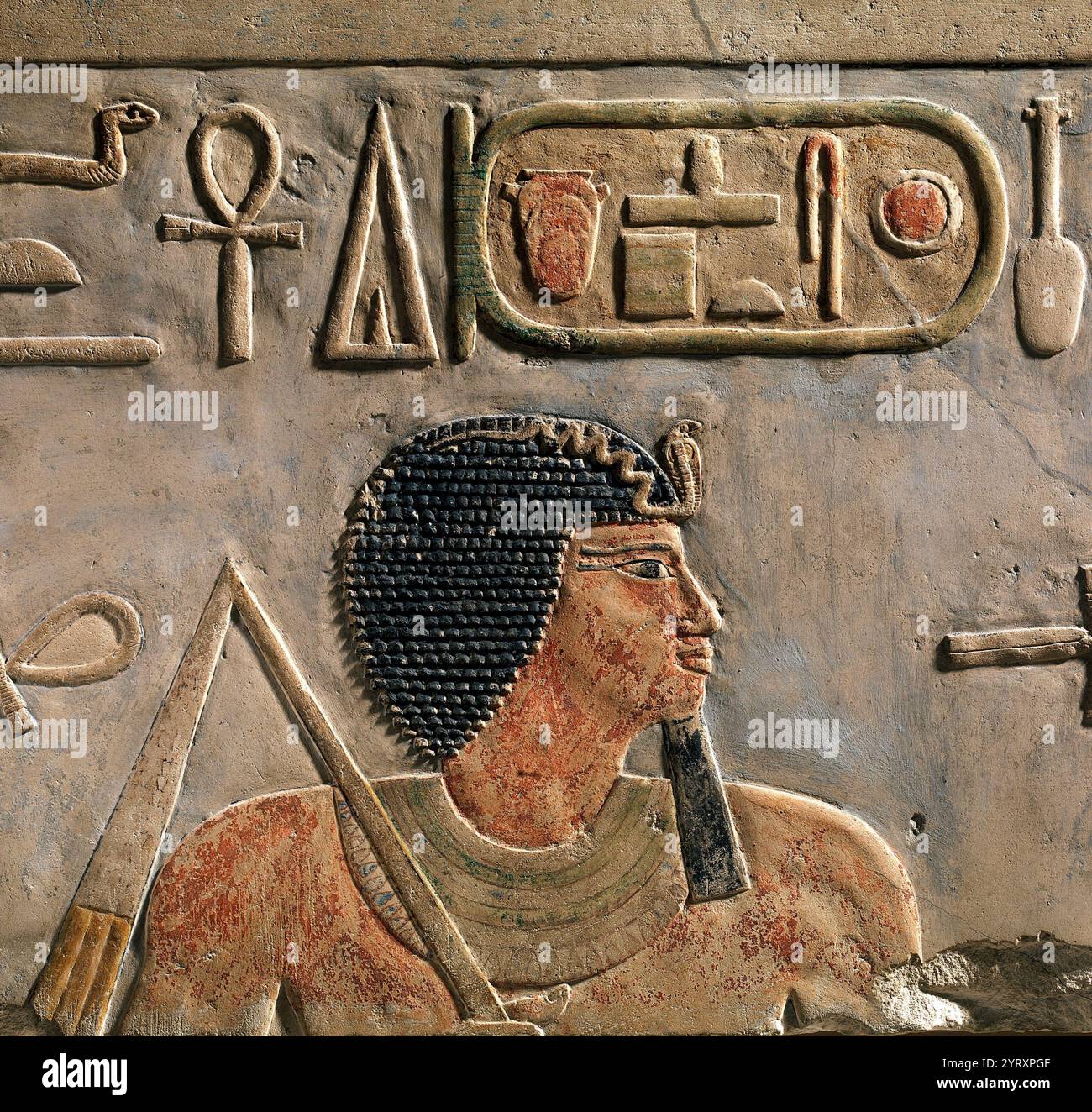 Relief of Amenemhat I from his pyramid complex at El Lisht. Amenemhat I, also known as Amenemhet I, was a pharaoh of ancient Egypt and the first king of the Twelfth Dynasty of the Middle Kingdom. Stock Photohttps://www.alamy.com/image-license-details/?v=1https://www.alamy.com/relief-of-amenemhat-i-from-his-pyramid-complex-at-el-lisht-amenemhat-i-also-known-as-amenemhet-i-was-a-pharaoh-of-ancient-egypt-and-the-first-king-of-the-twelfth-dynasty-of-the-middle-kingdom-image634298799.html
Relief of Amenemhat I from his pyramid complex at El Lisht. Amenemhat I, also known as Amenemhet I, was a pharaoh of ancient Egypt and the first king of the Twelfth Dynasty of the Middle Kingdom. Stock Photohttps://www.alamy.com/image-license-details/?v=1https://www.alamy.com/relief-of-amenemhat-i-from-his-pyramid-complex-at-el-lisht-amenemhat-i-also-known-as-amenemhet-i-was-a-pharaoh-of-ancient-egypt-and-the-first-king-of-the-twelfth-dynasty-of-the-middle-kingdom-image634298799.htmlRM2YRXPGF–Relief of Amenemhat I from his pyramid complex at El Lisht. Amenemhat I, also known as Amenemhet I, was a pharaoh of ancient Egypt and the first king of the Twelfth Dynasty of the Middle Kingdom.
 This 1925 image shows the fortress Semne at the Second Cataract (restored view) and the mortuary temple of King Mentuhotep III and IV in Thebes (restored). Semna South is located along one of the narrowest parts of the Nile River, south of Wadi Halfa and north of Abri. The numerous excavations of Semna South have shown that this site includes a fortress that was likely used for trade along the Nile at the Second Cataract. It dates to the Middle Kingdom 12th Dynasty. The region of Semna is 15 miles south of Wadi Halfa and is situated where rocks cross the Nile narrowing its flow—the Semna Cata Stock Photohttps://www.alamy.com/image-license-details/?v=1https://www.alamy.com/this-1925-image-shows-the-fortress-semne-at-the-second-cataract-restored-view-and-the-mortuary-temple-of-king-mentuhotep-iii-and-iv-in-thebes-restored-semna-south-is-located-along-one-of-the-narrowest-parts-of-the-nile-river-south-of-wadi-halfa-and-north-of-abri-the-numerous-excavations-of-semna-south-have-shown-that-this-site-includes-a-fortress-that-was-likely-used-for-trade-along-the-nile-at-the-second-cataract-it-dates-to-the-middle-kingdom-12th-dynasty-the-region-of-semna-is-15-miles-south-of-wadi-halfa-and-is-situated-where-rocks-cross-the-nile-narrowing-its-flowthe-semna-cata-image651192904.html
This 1925 image shows the fortress Semne at the Second Cataract (restored view) and the mortuary temple of King Mentuhotep III and IV in Thebes (restored). Semna South is located along one of the narrowest parts of the Nile River, south of Wadi Halfa and north of Abri. The numerous excavations of Semna South have shown that this site includes a fortress that was likely used for trade along the Nile at the Second Cataract. It dates to the Middle Kingdom 12th Dynasty. The region of Semna is 15 miles south of Wadi Halfa and is situated where rocks cross the Nile narrowing its flow—the Semna Cata Stock Photohttps://www.alamy.com/image-license-details/?v=1https://www.alamy.com/this-1925-image-shows-the-fortress-semne-at-the-second-cataract-restored-view-and-the-mortuary-temple-of-king-mentuhotep-iii-and-iv-in-thebes-restored-semna-south-is-located-along-one-of-the-narrowest-parts-of-the-nile-river-south-of-wadi-halfa-and-north-of-abri-the-numerous-excavations-of-semna-south-have-shown-that-this-site-includes-a-fortress-that-was-likely-used-for-trade-along-the-nile-at-the-second-cataract-it-dates-to-the-middle-kingdom-12th-dynasty-the-region-of-semna-is-15-miles-south-of-wadi-halfa-and-is-situated-where-rocks-cross-the-nile-narrowing-its-flowthe-semna-cata-image651192904.htmlRF2SRCB5C–This 1925 image shows the fortress Semne at the Second Cataract (restored view) and the mortuary temple of King Mentuhotep III and IV in Thebes (restored). Semna South is located along one of the narrowest parts of the Nile River, south of Wadi Halfa and north of Abri. The numerous excavations of Semna South have shown that this site includes a fortress that was likely used for trade along the Nile at the Second Cataract. It dates to the Middle Kingdom 12th Dynasty. The region of Semna is 15 miles south of Wadi Halfa and is situated where rocks cross the Nile narrowing its flow—the Semna Cata
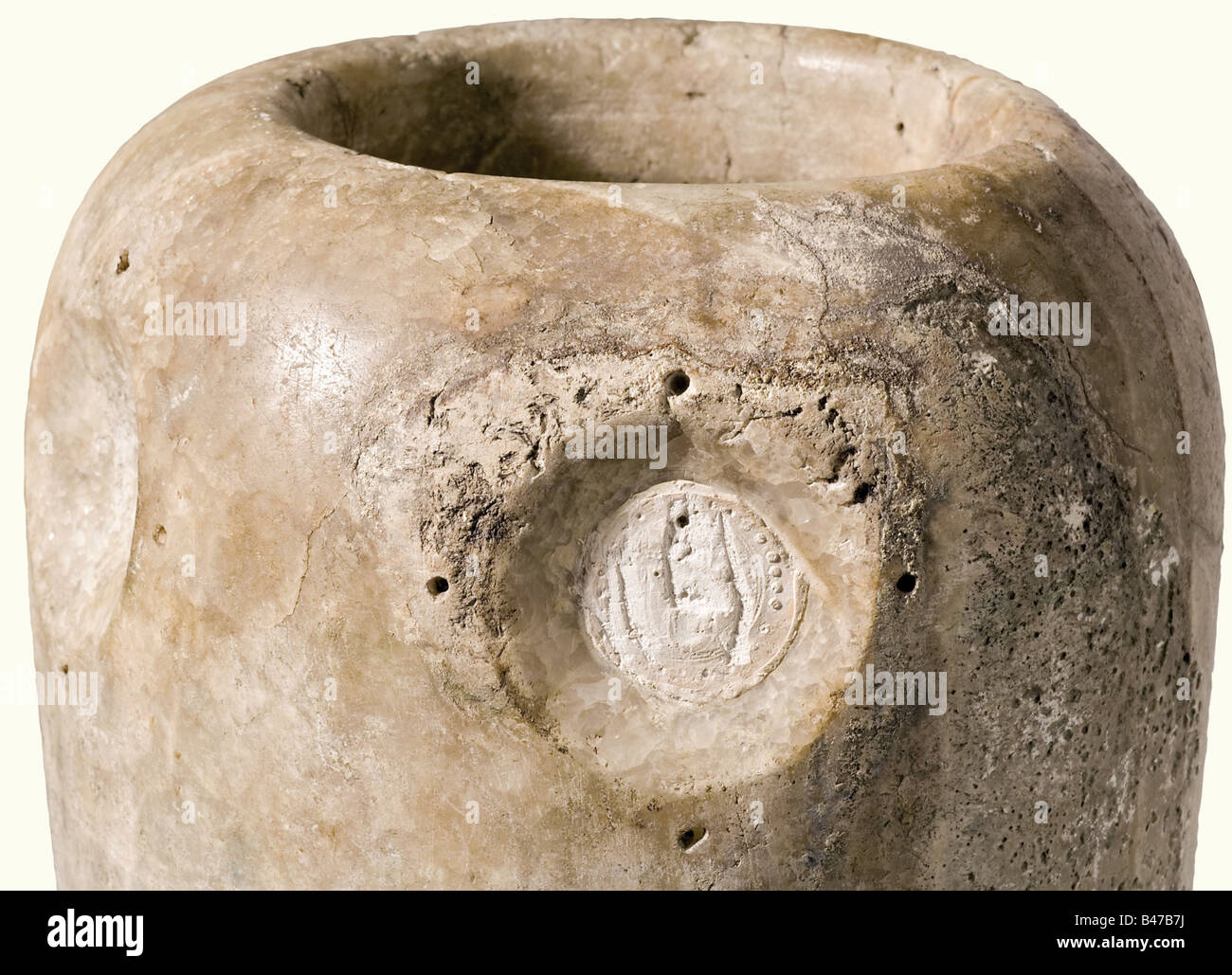 An alabaster canopic jar, Egypt, Middle Kingdom 2040 - 1782 B.C. The light grey alabaster body of the jar is slightly conical. There are three round depressions on the obverse side, and remnants of a gypsum(?) seal on the upper right. Small break on the lower rim. Height 37 cm. historic, historical, ancient world, ancient world, ancient times, object, objects, stills, clipping, cut out, cut-out, cut-outs, vessel, vessels, Stock Photohttps://www.alamy.com/image-license-details/?v=1https://www.alamy.com/stock-photo-an-alabaster-canopic-jar-egypt-middle-kingdom-2040-1782-bc-the-light-19831494.html
An alabaster canopic jar, Egypt, Middle Kingdom 2040 - 1782 B.C. The light grey alabaster body of the jar is slightly conical. There are three round depressions on the obverse side, and remnants of a gypsum(?) seal on the upper right. Small break on the lower rim. Height 37 cm. historic, historical, ancient world, ancient world, ancient times, object, objects, stills, clipping, cut out, cut-out, cut-outs, vessel, vessels, Stock Photohttps://www.alamy.com/image-license-details/?v=1https://www.alamy.com/stock-photo-an-alabaster-canopic-jar-egypt-middle-kingdom-2040-1782-bc-the-light-19831494.htmlRMB47B7J–An alabaster canopic jar, Egypt, Middle Kingdom 2040 - 1782 B.C. The light grey alabaster body of the jar is slightly conical. There are three round depressions on the obverse side, and remnants of a gypsum(?) seal on the upper right. Small break on the lower rim. Height 37 cm. historic, historical, ancient world, ancient world, ancient times, object, objects, stills, clipping, cut out, cut-out, cut-outs, vessel, vessels,
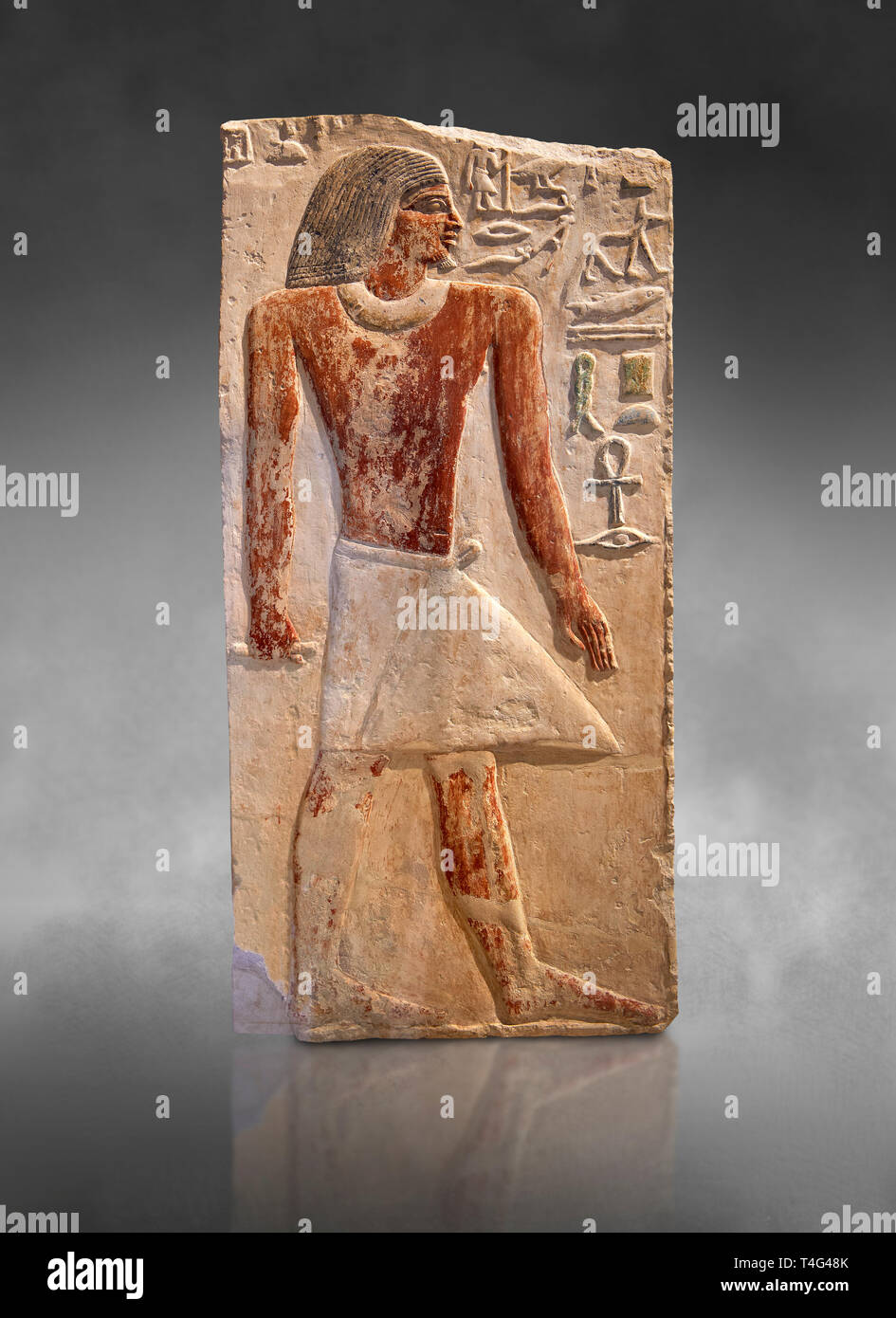 Ancient Egyptian tomb relief sculpture depicting the scribe and judge Ankhirptah. Middle Kingdom Egypt, 2170 BC. Neues Museum Berlin Cat No: AM 7337 Stock Photohttps://www.alamy.com/image-license-details/?v=1https://www.alamy.com/ancient-egyptian-tomb-relief-sculpture-depicting-the-scribe-and-judge-ankhirptah-middle-kingdom-egypt-2170-bc-neues-museum-berlin-cat-no-am-7337-image243758387.html
Ancient Egyptian tomb relief sculpture depicting the scribe and judge Ankhirptah. Middle Kingdom Egypt, 2170 BC. Neues Museum Berlin Cat No: AM 7337 Stock Photohttps://www.alamy.com/image-license-details/?v=1https://www.alamy.com/ancient-egyptian-tomb-relief-sculpture-depicting-the-scribe-and-judge-ankhirptah-middle-kingdom-egypt-2170-bc-neues-museum-berlin-cat-no-am-7337-image243758387.htmlRFT4G48K–Ancient Egyptian tomb relief sculpture depicting the scribe and judge Ankhirptah. Middle Kingdom Egypt, 2170 BC. Neues Museum Berlin Cat No: AM 7337
 Egypt, Cairo, Egyptian Museum, a canopic jar, found in Saqqara, dating from the Middle Kingdom. Limestone, covered with the head of a son of Horus. Stock Photohttps://www.alamy.com/image-license-details/?v=1https://www.alamy.com/egypt-cairo-egyptian-museum-a-canopic-jar-found-in-saqqara-dating-from-the-middle-kingdom-limestone-covered-with-the-head-of-a-son-of-horus-image368049464.html
Egypt, Cairo, Egyptian Museum, a canopic jar, found in Saqqara, dating from the Middle Kingdom. Limestone, covered with the head of a son of Horus. Stock Photohttps://www.alamy.com/image-license-details/?v=1https://www.alamy.com/egypt-cairo-egyptian-museum-a-canopic-jar-found-in-saqqara-dating-from-the-middle-kingdom-limestone-covered-with-the-head-of-a-son-of-horus-image368049464.htmlRM2CAP2RM–Egypt, Cairo, Egyptian Museum, a canopic jar, found in Saqqara, dating from the Middle Kingdom. Limestone, covered with the head of a son of Horus.
 The ruins of the enclosure walls and mound and modern village in background of Kom el Sultan at Abydos Middle Egypt Stock Photohttps://www.alamy.com/image-license-details/?v=1https://www.alamy.com/stock-photo-the-ruins-of-the-enclosure-walls-and-mound-and-modern-village-in-background-41820731.html
The ruins of the enclosure walls and mound and modern village in background of Kom el Sultan at Abydos Middle Egypt Stock Photohttps://www.alamy.com/image-license-details/?v=1https://www.alamy.com/stock-photo-the-ruins-of-the-enclosure-walls-and-mound-and-modern-village-in-background-41820731.htmlRFCC12NF–The ruins of the enclosure walls and mound and modern village in background of Kom el Sultan at Abydos Middle Egypt
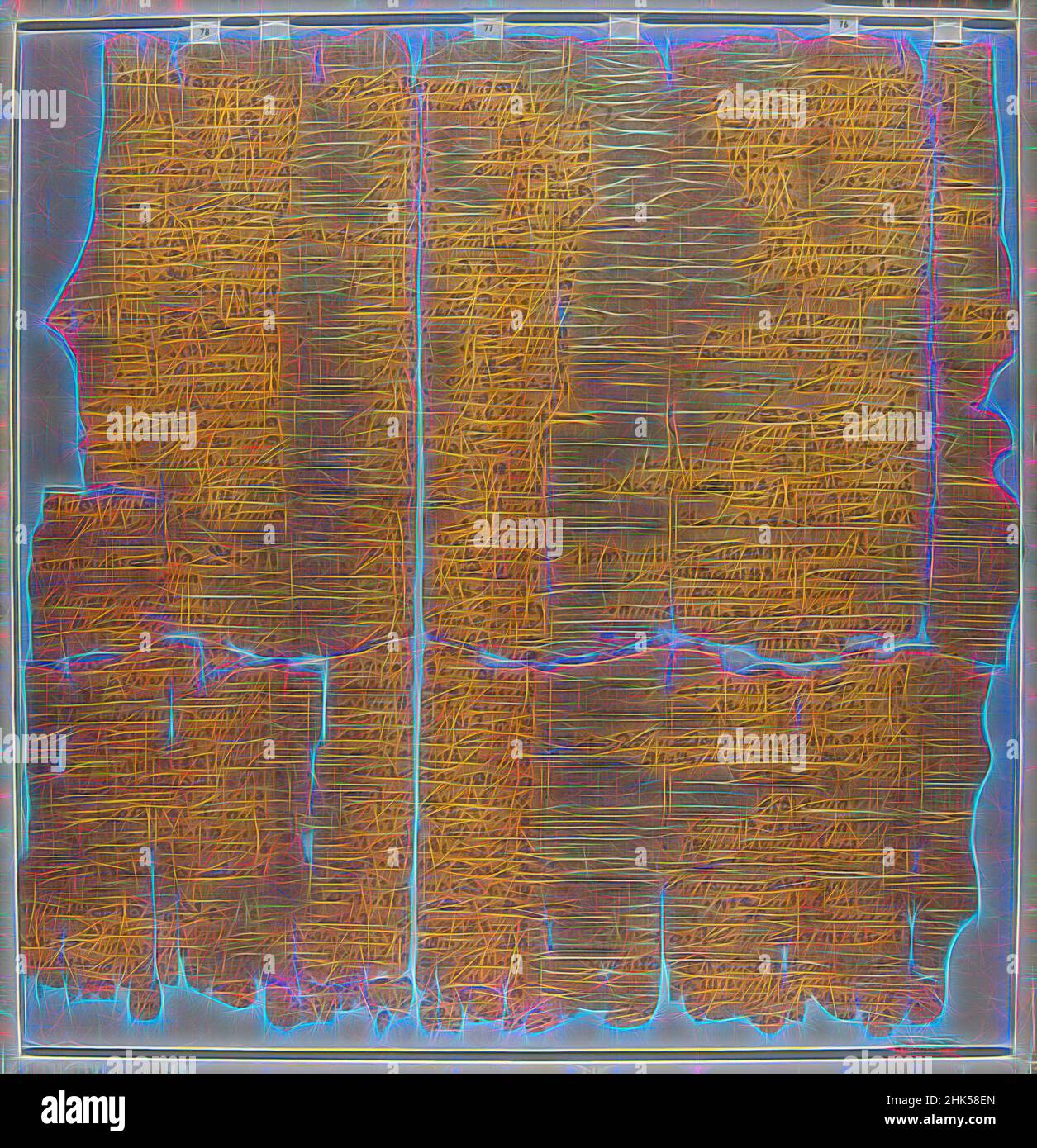 Inspired by The Wilbour Papyrus, Papyrus, ink, Middle Egypt, Egypt, ca. 1147 B.C.E., Dynasty 20, New Kingdom, Glass: 17 5/16 x 18 1/8 in., 44 x 46 cm, Reimagined by Artotop. Classic art reinvented with a modern twist. Design of warm cheerful glowing of brightness and light ray radiance. Photography inspired by surrealism and futurism, embracing dynamic energy of modern technology, movement, speed and revolutionize culture Stock Photohttps://www.alamy.com/image-license-details/?v=1https://www.alamy.com/inspired-by-the-wilbour-papyrus-papyrus-ink-middle-egypt-egypt-ca-1147-bce-dynasty-20-new-kingdom-glass-17-516-x-18-18-in-44-x-46-cm-reimagined-by-artotop-classic-art-reinvented-with-a-modern-twist-design-of-warm-cheerful-glowing-of-brightness-and-light-ray-radiance-photography-inspired-by-surrealism-and-futurism-embracing-dynamic-energy-of-modern-technology-movement-speed-and-revolutionize-culture-image459264477.html
Inspired by The Wilbour Papyrus, Papyrus, ink, Middle Egypt, Egypt, ca. 1147 B.C.E., Dynasty 20, New Kingdom, Glass: 17 5/16 x 18 1/8 in., 44 x 46 cm, Reimagined by Artotop. Classic art reinvented with a modern twist. Design of warm cheerful glowing of brightness and light ray radiance. Photography inspired by surrealism and futurism, embracing dynamic energy of modern technology, movement, speed and revolutionize culture Stock Photohttps://www.alamy.com/image-license-details/?v=1https://www.alamy.com/inspired-by-the-wilbour-papyrus-papyrus-ink-middle-egypt-egypt-ca-1147-bce-dynasty-20-new-kingdom-glass-17-516-x-18-18-in-44-x-46-cm-reimagined-by-artotop-classic-art-reinvented-with-a-modern-twist-design-of-warm-cheerful-glowing-of-brightness-and-light-ray-radiance-photography-inspired-by-surrealism-and-futurism-embracing-dynamic-energy-of-modern-technology-movement-speed-and-revolutionize-culture-image459264477.htmlRF2HK58EN–Inspired by The Wilbour Papyrus, Papyrus, ink, Middle Egypt, Egypt, ca. 1147 B.C.E., Dynasty 20, New Kingdom, Glass: 17 5/16 x 18 1/8 in., 44 x 46 cm, Reimagined by Artotop. Classic art reinvented with a modern twist. Design of warm cheerful glowing of brightness and light ray radiance. Photography inspired by surrealism and futurism, embracing dynamic energy of modern technology, movement, speed and revolutionize culture
 Family stela of the chief scribe Horhernakht, son of Khety. Limestone, Middle Kingdom, second half of the 12th Dynasty. Egypt. Egyptian Museum of Turi Stock Photohttps://www.alamy.com/image-license-details/?v=1https://www.alamy.com/family-stela-of-the-chief-scribe-horhernakht-son-of-khety-limestone-middle-kingdom-second-half-of-the-12th-dynasty-egypt-egyptian-museum-of-turi-image638751549.html
Family stela of the chief scribe Horhernakht, son of Khety. Limestone, Middle Kingdom, second half of the 12th Dynasty. Egypt. Egyptian Museum of Turi Stock Photohttps://www.alamy.com/image-license-details/?v=1https://www.alamy.com/family-stela-of-the-chief-scribe-horhernakht-son-of-khety-limestone-middle-kingdom-second-half-of-the-12th-dynasty-egypt-egyptian-museum-of-turi-image638751549.htmlRM2S35J39–Family stela of the chief scribe Horhernakht, son of Khety. Limestone, Middle Kingdom, second half of the 12th Dynasty. Egypt. Egyptian Museum of Turi
 Stela of the overseer, of the,Inner Palace, Senbef, son of Itu, Stone / limestone, 1759–1700 BC, Thirteenth Dynasty, Middle Kingdom, Egypt (Museo Egizio di Torino Italy) Stock Photohttps://www.alamy.com/image-license-details/?v=1https://www.alamy.com/stela-of-the-overseer-of-theinner-palace-senbef-son-of-itu-stone-limestone-17591700-bc-thirteenth-dynasty-middle-kingdom-egypt-museo-egizio-di-torino-italy-image459148660.html
Stela of the overseer, of the,Inner Palace, Senbef, son of Itu, Stone / limestone, 1759–1700 BC, Thirteenth Dynasty, Middle Kingdom, Egypt (Museo Egizio di Torino Italy) Stock Photohttps://www.alamy.com/image-license-details/?v=1https://www.alamy.com/stela-of-the-overseer-of-theinner-palace-senbef-son-of-itu-stone-limestone-17591700-bc-thirteenth-dynasty-middle-kingdom-egypt-museo-egizio-di-torino-italy-image459148660.htmlRM2HK00PC–Stela of the overseer, of the,Inner Palace, Senbef, son of Itu, Stone / limestone, 1759–1700 BC, Thirteenth Dynasty, Middle Kingdom, Egypt (Museo Egizio di Torino Italy)
 Egypt. Seated statue of Chertihotep dated ca. 1850 BC. Quartzite. Middle Kingdom. 12th Dynasty. Altes Museum. Stock Photohttps://www.alamy.com/image-license-details/?v=1https://www.alamy.com/stock-photo-egypt-seated-statue-of-chertihotep-dated-ca-1850-bc-quartzite-middle-52252228.html
Egypt. Seated statue of Chertihotep dated ca. 1850 BC. Quartzite. Middle Kingdom. 12th Dynasty. Altes Museum. Stock Photohttps://www.alamy.com/image-license-details/?v=1https://www.alamy.com/stock-photo-egypt-seated-statue-of-chertihotep-dated-ca-1850-bc-quartzite-middle-52252228.htmlRMD10870–Egypt. Seated statue of Chertihotep dated ca. 1850 BC. Quartzite. Middle Kingdom. 12th Dynasty. Altes Museum.
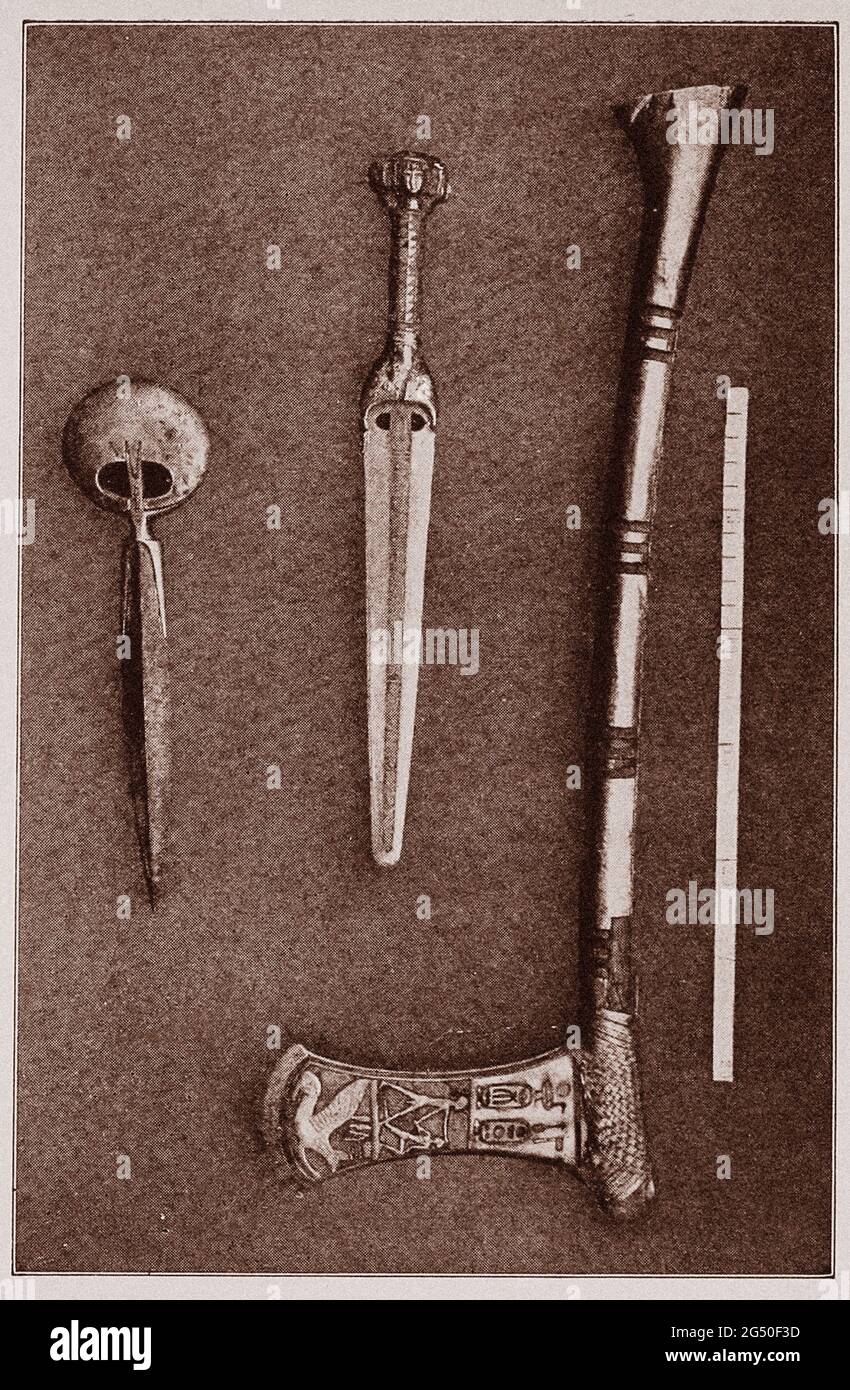 Ancient Egypt. Fall of Middle Kingdom: the Hyksos. Bronze weapons of Ahmose I. They are damascened with designs in gold, and set with costly stones). Stock Photohttps://www.alamy.com/image-license-details/?v=1https://www.alamy.com/ancient-egypt-fall-of-middle-kingdom-the-hyksos-bronze-weapons-of-ahmose-i-they-are-damascened-with-designs-in-gold-and-set-with-costly-stones-image433344337.html
Ancient Egypt. Fall of Middle Kingdom: the Hyksos. Bronze weapons of Ahmose I. They are damascened with designs in gold, and set with costly stones). Stock Photohttps://www.alamy.com/image-license-details/?v=1https://www.alamy.com/ancient-egypt-fall-of-middle-kingdom-the-hyksos-bronze-weapons-of-ahmose-i-they-are-damascened-with-designs-in-gold-and-set-with-costly-stones-image433344337.htmlRM2G50F3D–Ancient Egypt. Fall of Middle Kingdom: the Hyksos. Bronze weapons of Ahmose I. They are damascened with designs in gold, and set with costly stones).
 ax, brand X, ax, bronze, length: 13 cm, Middle Kingdom, Egypt Stock Photohttps://www.alamy.com/image-license-details/?v=1https://www.alamy.com/ax-brand-x-ax-bronze-length-13-cm-middle-kingdom-egypt-image344535032.html
ax, brand X, ax, bronze, length: 13 cm, Middle Kingdom, Egypt Stock Photohttps://www.alamy.com/image-license-details/?v=1https://www.alamy.com/ax-brand-x-ax-bronze-length-13-cm-middle-kingdom-egypt-image344535032.htmlRM2B0EWXG–ax, brand X, ax, bronze, length: 13 cm, Middle Kingdom, Egypt
 Mirror of the Cupbearer Kemeni. Egypt; Middle Kingdom, 12–13th Dynasty. ca. 1810–1700 B.C. Upper Egypt; Thebes, el-Asasif, Tomb of Reniseneb (CC 25), Inside box of Kemeni, Bronze or copper alloy, gold, ebony Stock Photohttps://www.alamy.com/image-license-details/?v=1https://www.alamy.com/stock-photo-mirror-of-the-cupbearer-kemeni-egypt-middle-kingdom-1213th-dynasty-57352162.html
Mirror of the Cupbearer Kemeni. Egypt; Middle Kingdom, 12–13th Dynasty. ca. 1810–1700 B.C. Upper Egypt; Thebes, el-Asasif, Tomb of Reniseneb (CC 25), Inside box of Kemeni, Bronze or copper alloy, gold, ebony Stock Photohttps://www.alamy.com/image-license-details/?v=1https://www.alamy.com/stock-photo-mirror-of-the-cupbearer-kemeni-egypt-middle-kingdom-1213th-dynasty-57352162.htmlRMD98H7E–Mirror of the Cupbearer Kemeni. Egypt; Middle Kingdom, 12–13th Dynasty. ca. 1810–1700 B.C. Upper Egypt; Thebes, el-Asasif, Tomb of Reniseneb (CC 25), Inside box of Kemeni, Bronze or copper alloy, gold, ebony
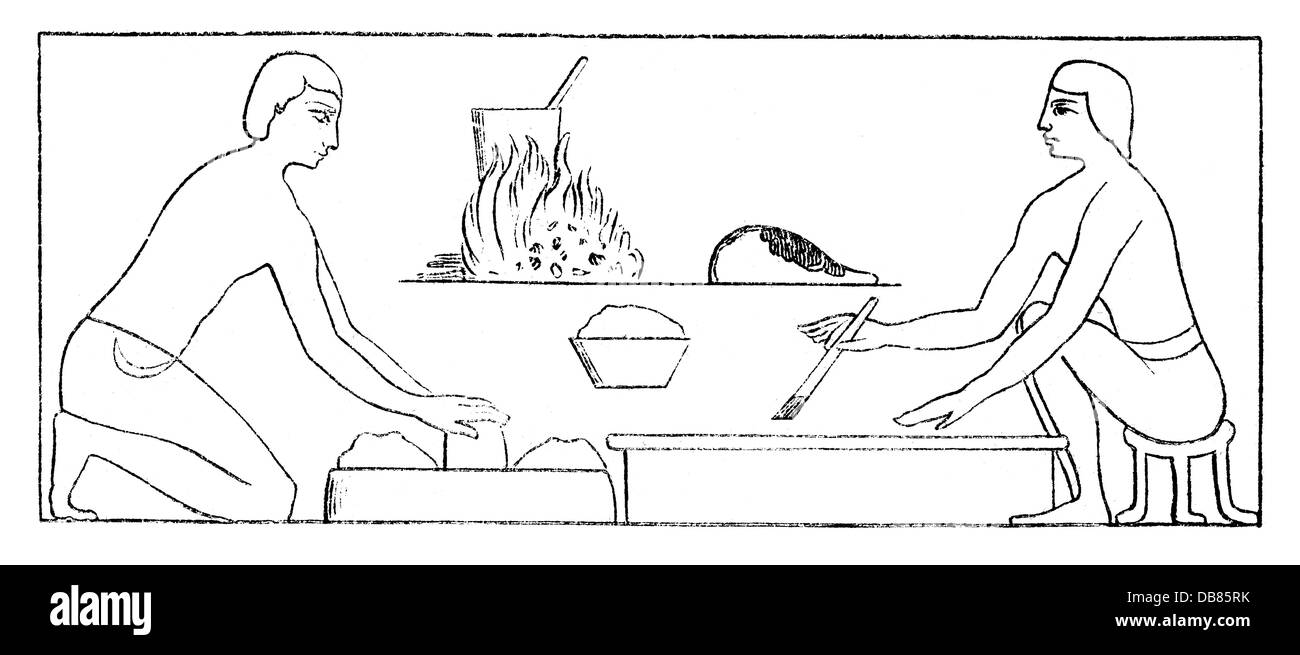 handicraft, prehistory, Egypt, colour grinder, mural painting, Middle Kingdom of Egypt, circa 2216 - 1781 BC, wood engraving, 19th century, people, man, men, colours, colors, colour, color, grind, grinding, grinds, ground, colour production, manufacture, production, fabrication, workers, worker, working, work, labouring, laboring, labour, labor, Egyptian, handicraft, handcraft, craft, prehistory, prehistoric times, mural painting, wall painting, murals, mural paintings, wall paintings, wallpainting, wallpaintings, historic, historical, ancient world, m, Artist's Copyright has not to be cleared Stock Photohttps://www.alamy.com/image-license-details/?v=1https://www.alamy.com/stock-photo-handicraft-prehistory-egypt-colour-grinder-mural-painting-middle-kingdom-58572519.html
handicraft, prehistory, Egypt, colour grinder, mural painting, Middle Kingdom of Egypt, circa 2216 - 1781 BC, wood engraving, 19th century, people, man, men, colours, colors, colour, color, grind, grinding, grinds, ground, colour production, manufacture, production, fabrication, workers, worker, working, work, labouring, laboring, labour, labor, Egyptian, handicraft, handcraft, craft, prehistory, prehistoric times, mural painting, wall painting, murals, mural paintings, wall paintings, wallpainting, wallpaintings, historic, historical, ancient world, m, Artist's Copyright has not to be cleared Stock Photohttps://www.alamy.com/image-license-details/?v=1https://www.alamy.com/stock-photo-handicraft-prehistory-egypt-colour-grinder-mural-painting-middle-kingdom-58572519.htmlRMDB85RK–handicraft, prehistory, Egypt, colour grinder, mural painting, Middle Kingdom of Egypt, circa 2216 - 1781 BC, wood engraving, 19th century, people, man, men, colours, colors, colour, color, grind, grinding, grinds, ground, colour production, manufacture, production, fabrication, workers, worker, working, work, labouring, laboring, labour, labor, Egyptian, handicraft, handcraft, craft, prehistory, prehistoric times, mural painting, wall painting, murals, mural paintings, wall paintings, wallpainting, wallpaintings, historic, historical, ancient world, m, Artist's Copyright has not to be cleared
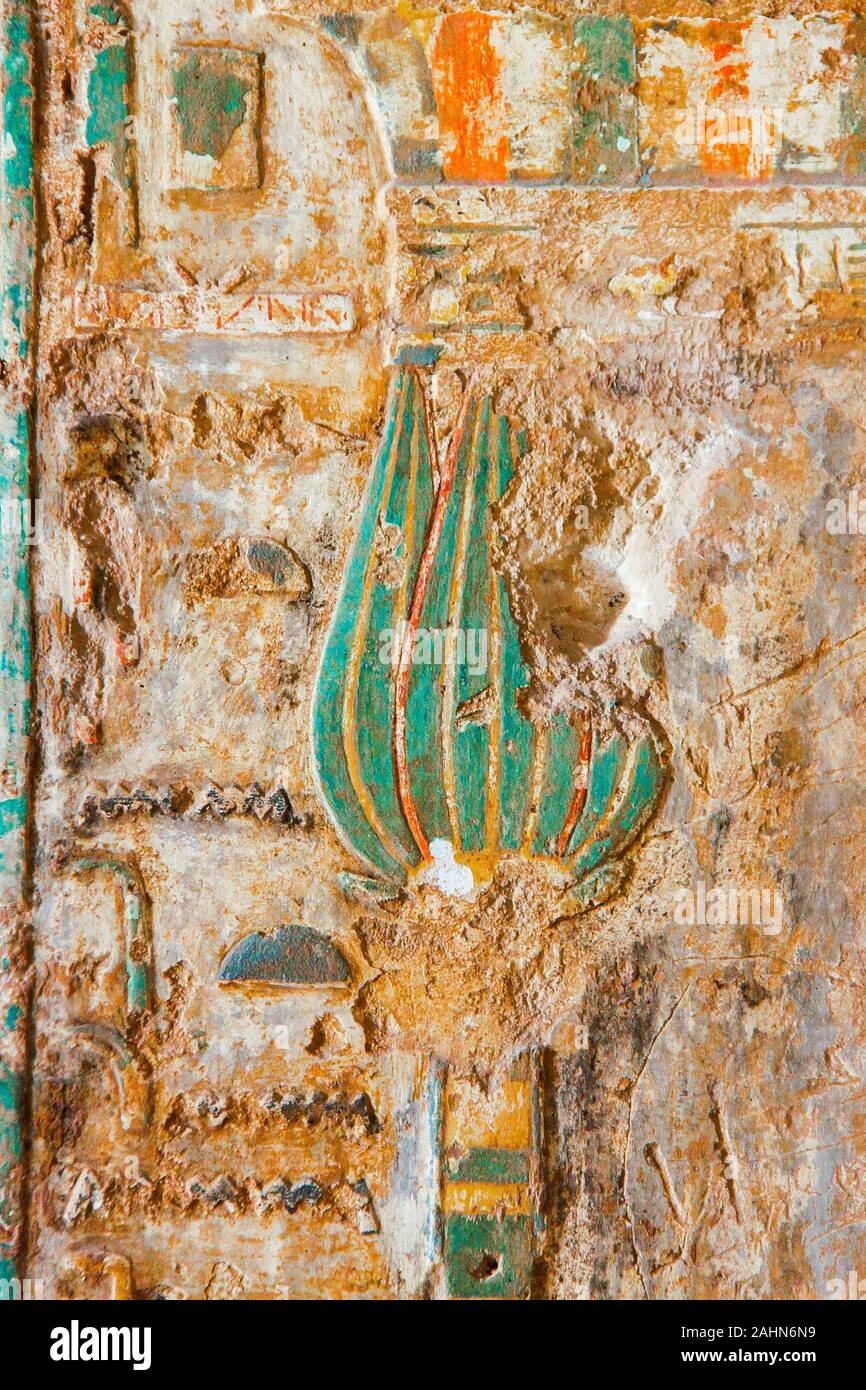 Middle Egypt, Deir el Bersha, the tomb of Djehutyhotep dates from the Middle Kingdom. Main room, detail of a kiosk pole in the form of a lotus bud. Stock Photohttps://www.alamy.com/image-license-details/?v=1https://www.alamy.com/middle-egypt-deir-el-bersha-the-tomb-of-djehutyhotep-dates-from-the-middle-kingdom-main-room-detail-of-a-kiosk-pole-in-the-form-of-a-lotus-bud-image337912437.html
Middle Egypt, Deir el Bersha, the tomb of Djehutyhotep dates from the Middle Kingdom. Main room, detail of a kiosk pole in the form of a lotus bud. Stock Photohttps://www.alamy.com/image-license-details/?v=1https://www.alamy.com/middle-egypt-deir-el-bersha-the-tomb-of-djehutyhotep-dates-from-the-middle-kingdom-main-room-detail-of-a-kiosk-pole-in-the-form-of-a-lotus-bud-image337912437.htmlRM2AHN6N9–Middle Egypt, Deir el Bersha, the tomb of Djehutyhotep dates from the Middle Kingdom. Main room, detail of a kiosk pole in the form of a lotus bud.
 The rock tombs of Beni Hassan between Minya and Mallawi, Middle Egypt Stock Photohttps://www.alamy.com/image-license-details/?v=1https://www.alamy.com/stock-photo-the-rock-tombs-of-beni-hassan-between-minya-and-mallawi-middle-egypt-26877850.html
The rock tombs of Beni Hassan between Minya and Mallawi, Middle Egypt Stock Photohttps://www.alamy.com/image-license-details/?v=1https://www.alamy.com/stock-photo-the-rock-tombs-of-beni-hassan-between-minya-and-mallawi-middle-egypt-26877850.htmlRFBFMAY6–The rock tombs of Beni Hassan between Minya and Mallawi, Middle Egypt
 Inspired by The Wilbour Papyrus, Papyrus, ink, Middle Egypt, Egypt, ca. 1147 B.C.E., Dynasty 20, New Kingdom, Glass: 14 9/16 x 18 1/8 in., 37 x 46 cm, Reimagined by Artotop. Classic art reinvented with a modern twist. Design of warm cheerful glowing of brightness and light ray radiance. Photography inspired by surrealism and futurism, embracing dynamic energy of modern technology, movement, speed and revolutionize culture Stock Photohttps://www.alamy.com/image-license-details/?v=1https://www.alamy.com/inspired-by-the-wilbour-papyrus-papyrus-ink-middle-egypt-egypt-ca-1147-bce-dynasty-20-new-kingdom-glass-14-916-x-18-18-in-37-x-46-cm-reimagined-by-artotop-classic-art-reinvented-with-a-modern-twist-design-of-warm-cheerful-glowing-of-brightness-and-light-ray-radiance-photography-inspired-by-surrealism-and-futurism-embracing-dynamic-energy-of-modern-technology-movement-speed-and-revolutionize-culture-image459264421.html
Inspired by The Wilbour Papyrus, Papyrus, ink, Middle Egypt, Egypt, ca. 1147 B.C.E., Dynasty 20, New Kingdom, Glass: 14 9/16 x 18 1/8 in., 37 x 46 cm, Reimagined by Artotop. Classic art reinvented with a modern twist. Design of warm cheerful glowing of brightness and light ray radiance. Photography inspired by surrealism and futurism, embracing dynamic energy of modern technology, movement, speed and revolutionize culture Stock Photohttps://www.alamy.com/image-license-details/?v=1https://www.alamy.com/inspired-by-the-wilbour-papyrus-papyrus-ink-middle-egypt-egypt-ca-1147-bce-dynasty-20-new-kingdom-glass-14-916-x-18-18-in-37-x-46-cm-reimagined-by-artotop-classic-art-reinvented-with-a-modern-twist-design-of-warm-cheerful-glowing-of-brightness-and-light-ray-radiance-photography-inspired-by-surrealism-and-futurism-embracing-dynamic-energy-of-modern-technology-movement-speed-and-revolutionize-culture-image459264421.htmlRF2HK58CN–Inspired by The Wilbour Papyrus, Papyrus, ink, Middle Egypt, Egypt, ca. 1147 B.C.E., Dynasty 20, New Kingdom, Glass: 14 9/16 x 18 1/8 in., 37 x 46 cm, Reimagined by Artotop. Classic art reinvented with a modern twist. Design of warm cheerful glowing of brightness and light ray radiance. Photography inspired by surrealism and futurism, embracing dynamic energy of modern technology, movement, speed and revolutionize culture
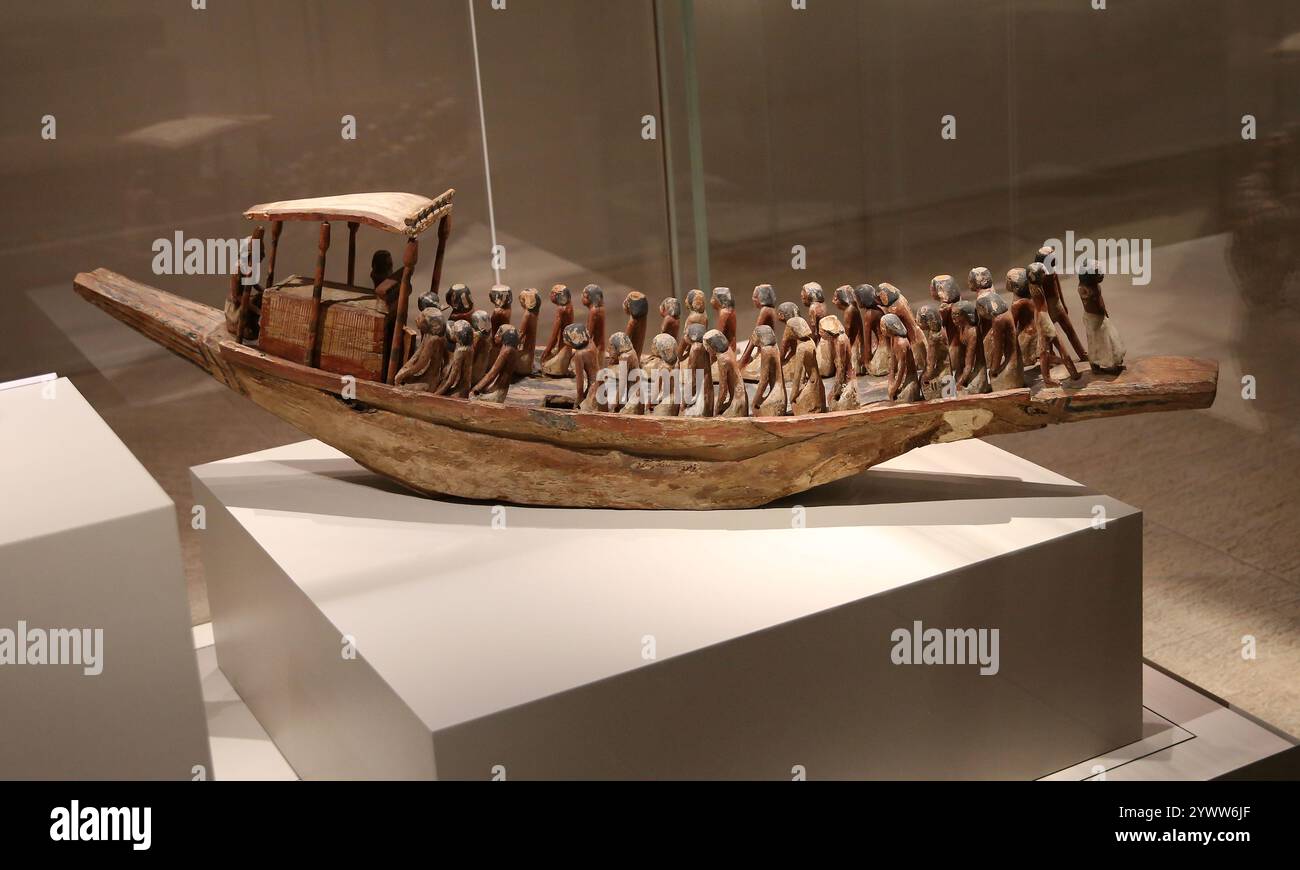 Model of a funerary boat with oarsmen and a sarcophagus under a canope. Wood. Middle Kingdom (1980-1700 BC). Egypt. Egyptian Museum of Turin. Italy. Stock Photohttps://www.alamy.com/image-license-details/?v=1https://www.alamy.com/model-of-a-funerary-boat-with-oarsmen-and-a-sarcophagus-under-a-canope-wood-middle-kingdom-1980-1700-bc-egypt-egyptian-museum-of-turin-italy-image635493671.html
Model of a funerary boat with oarsmen and a sarcophagus under a canope. Wood. Middle Kingdom (1980-1700 BC). Egypt. Egyptian Museum of Turin. Italy. Stock Photohttps://www.alamy.com/image-license-details/?v=1https://www.alamy.com/model-of-a-funerary-boat-with-oarsmen-and-a-sarcophagus-under-a-canope-wood-middle-kingdom-1980-1700-bc-egypt-egyptian-museum-of-turin-italy-image635493671.htmlRM2YWW6JF–Model of a funerary boat with oarsmen and a sarcophagus under a canope. Wood. Middle Kingdom (1980-1700 BC). Egypt. Egyptian Museum of Turin. Italy.
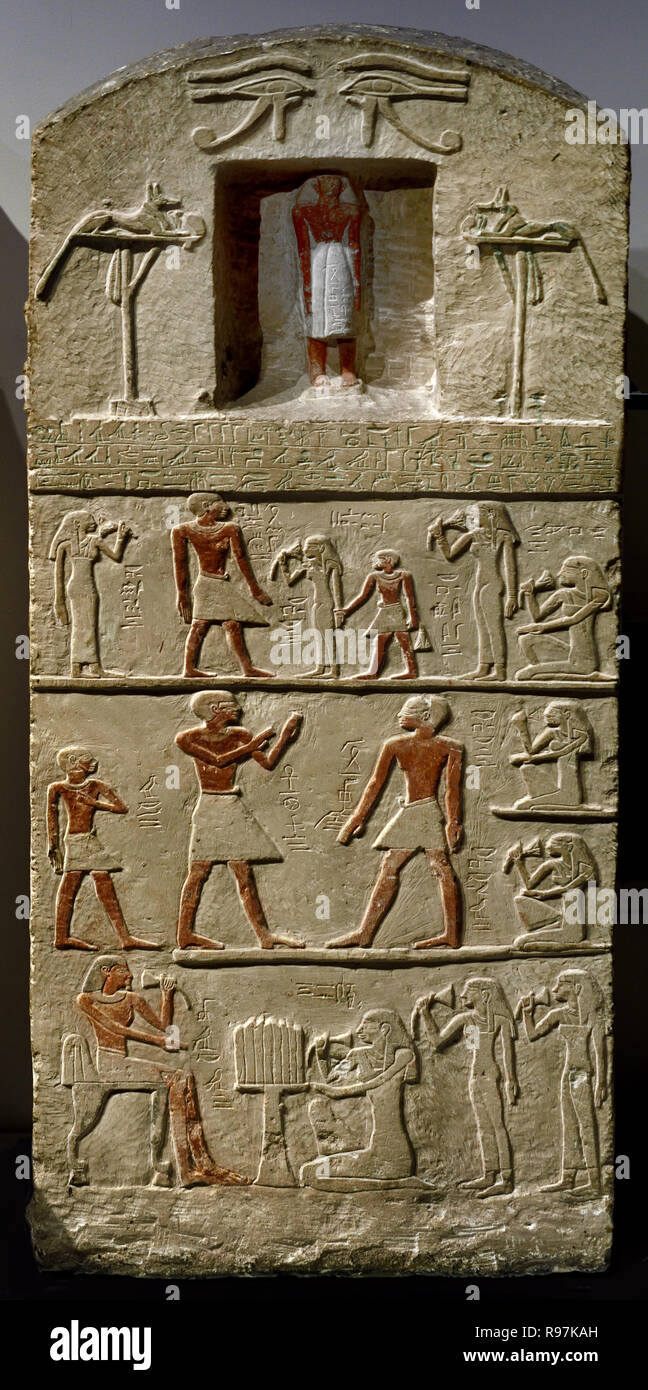 Senebneraoe; round arch stela Material: limestone Dimensions: 125 x 50 x 19 cm 250 kg Period: Middle Kingdom 2055 BC –1650 BC Egypt, Egyptian. Stock Photohttps://www.alamy.com/image-license-details/?v=1https://www.alamy.com/senebneraoe-round-arch-stela-material-limestone-dimensions-125-x-50-x-19-cm-250-kg-period-middle-kingdom-2055-bc-1650-bc-egypt-egyptian-image229435545.html
Senebneraoe; round arch stela Material: limestone Dimensions: 125 x 50 x 19 cm 250 kg Period: Middle Kingdom 2055 BC –1650 BC Egypt, Egyptian. Stock Photohttps://www.alamy.com/image-license-details/?v=1https://www.alamy.com/senebneraoe-round-arch-stela-material-limestone-dimensions-125-x-50-x-19-cm-250-kg-period-middle-kingdom-2055-bc-1650-bc-egypt-egyptian-image229435545.htmlRMR97KAH–Senebneraoe; round arch stela Material: limestone Dimensions: 125 x 50 x 19 cm 250 kg Period: Middle Kingdom 2055 BC –1650 BC Egypt, Egyptian.
 Mortuary Temple of Mentuhotep II. 11th Dynasty. Middle Kingdom. Exterior. Deir el-Bahari. Egypt. Stock Photohttps://www.alamy.com/image-license-details/?v=1https://www.alamy.com/stock-photo-mortuary-temple-of-mentuhotep-ii-11th-dynasty-middle-kingdom-exterior-42002658.html
Mortuary Temple of Mentuhotep II. 11th Dynasty. Middle Kingdom. Exterior. Deir el-Bahari. Egypt. Stock Photohttps://www.alamy.com/image-license-details/?v=1https://www.alamy.com/stock-photo-mortuary-temple-of-mentuhotep-ii-11th-dynasty-middle-kingdom-exterior-42002658.htmlRMCC9APX–Mortuary Temple of Mentuhotep II. 11th Dynasty. Middle Kingdom. Exterior. Deir el-Bahari. Egypt.
 Ancient Egypt. Middle Kingdom, the Twelfth Dynasty. Three of the ten limestone statues of Amenemhet I, found at his pyramid of Lisht. (Cairo Museum). Stock Photohttps://www.alamy.com/image-license-details/?v=1https://www.alamy.com/ancient-egypt-middle-kingdom-the-twelfth-dynasty-three-of-the-ten-limestone-statues-of-amenemhet-i-found-at-his-pyramid-of-lisht-cairo-museum-image433344324.html
Ancient Egypt. Middle Kingdom, the Twelfth Dynasty. Three of the ten limestone statues of Amenemhet I, found at his pyramid of Lisht. (Cairo Museum). Stock Photohttps://www.alamy.com/image-license-details/?v=1https://www.alamy.com/ancient-egypt-middle-kingdom-the-twelfth-dynasty-three-of-the-ten-limestone-statues-of-amenemhet-i-found-at-his-pyramid-of-lisht-cairo-museum-image433344324.htmlRM2G50F30–Ancient Egypt. Middle Kingdom, the Twelfth Dynasty. Three of the ten limestone statues of Amenemhet I, found at his pyramid of Lisht. (Cairo Museum).
 pendant, falcon, crown, double, pendant, silver, 7 cm, Middle Kingdom, Egypt Stock Photohttps://www.alamy.com/image-license-details/?v=1https://www.alamy.com/pendant-falcon-crown-double-pendant-silver-7-cm-middle-kingdom-egypt-image344497605.html
pendant, falcon, crown, double, pendant, silver, 7 cm, Middle Kingdom, Egypt Stock Photohttps://www.alamy.com/image-license-details/?v=1https://www.alamy.com/pendant-falcon-crown-double-pendant-silver-7-cm-middle-kingdom-egypt-image344497605.htmlRM2B0D65W–pendant, falcon, crown, double, pendant, silver, 7 cm, Middle Kingdom, Egypt
 Painted wooden figure; Egyptian, Middle Kingdom period; depicting aspects of everyday life in ancient Egypt. The Middle Kingdom of Egypt (also known as The Period of Reunification) is the period in the history of ancient Egypt following a period of political division known as the First Intermediate Period. It lasted from circa 2050 BC to circa 1710 BC, stretching from the reunification of Egypt under the reign of Mentuhotep II of the Eleventh Dynasty to the end of the Twelfth Dynasty. Stock Photohttps://www.alamy.com/image-license-details/?v=1https://www.alamy.com/painted-wooden-figure-egyptian-middle-kingdom-period-depicting-aspects-of-everyday-life-in-ancient-egypt-the-middle-kingdom-of-egypt-also-known-as-the-period-of-reunification-is-the-period-in-the-history-of-ancient-egypt-following-a-period-of-political-division-known-as-the-first-intermediate-period-it-lasted-from-circa-2050-bc-to-circa-1710-bc-stretching-from-the-reunification-of-egypt-under-the-reign-of-mentuhotep-ii-of-the-eleventh-dynasty-to-the-end-of-the-twelfth-dynasty-image634311517.html
Painted wooden figure; Egyptian, Middle Kingdom period; depicting aspects of everyday life in ancient Egypt. The Middle Kingdom of Egypt (also known as The Period of Reunification) is the period in the history of ancient Egypt following a period of political division known as the First Intermediate Period. It lasted from circa 2050 BC to circa 1710 BC, stretching from the reunification of Egypt under the reign of Mentuhotep II of the Eleventh Dynasty to the end of the Twelfth Dynasty. Stock Photohttps://www.alamy.com/image-license-details/?v=1https://www.alamy.com/painted-wooden-figure-egyptian-middle-kingdom-period-depicting-aspects-of-everyday-life-in-ancient-egypt-the-middle-kingdom-of-egypt-also-known-as-the-period-of-reunification-is-the-period-in-the-history-of-ancient-egypt-following-a-period-of-political-division-known-as-the-first-intermediate-period-it-lasted-from-circa-2050-bc-to-circa-1710-bc-stretching-from-the-reunification-of-egypt-under-the-reign-of-mentuhotep-ii-of-the-eleventh-dynasty-to-the-end-of-the-twelfth-dynasty-image634311517.htmlRM2YRYAPN–Painted wooden figure; Egyptian, Middle Kingdom period; depicting aspects of everyday life in ancient Egypt. The Middle Kingdom of Egypt (also known as The Period of Reunification) is the period in the history of ancient Egypt following a period of political division known as the First Intermediate Period. It lasted from circa 2050 BC to circa 1710 BC, stretching from the reunification of Egypt under the reign of Mentuhotep II of the Eleventh Dynasty to the end of the Twelfth Dynasty.